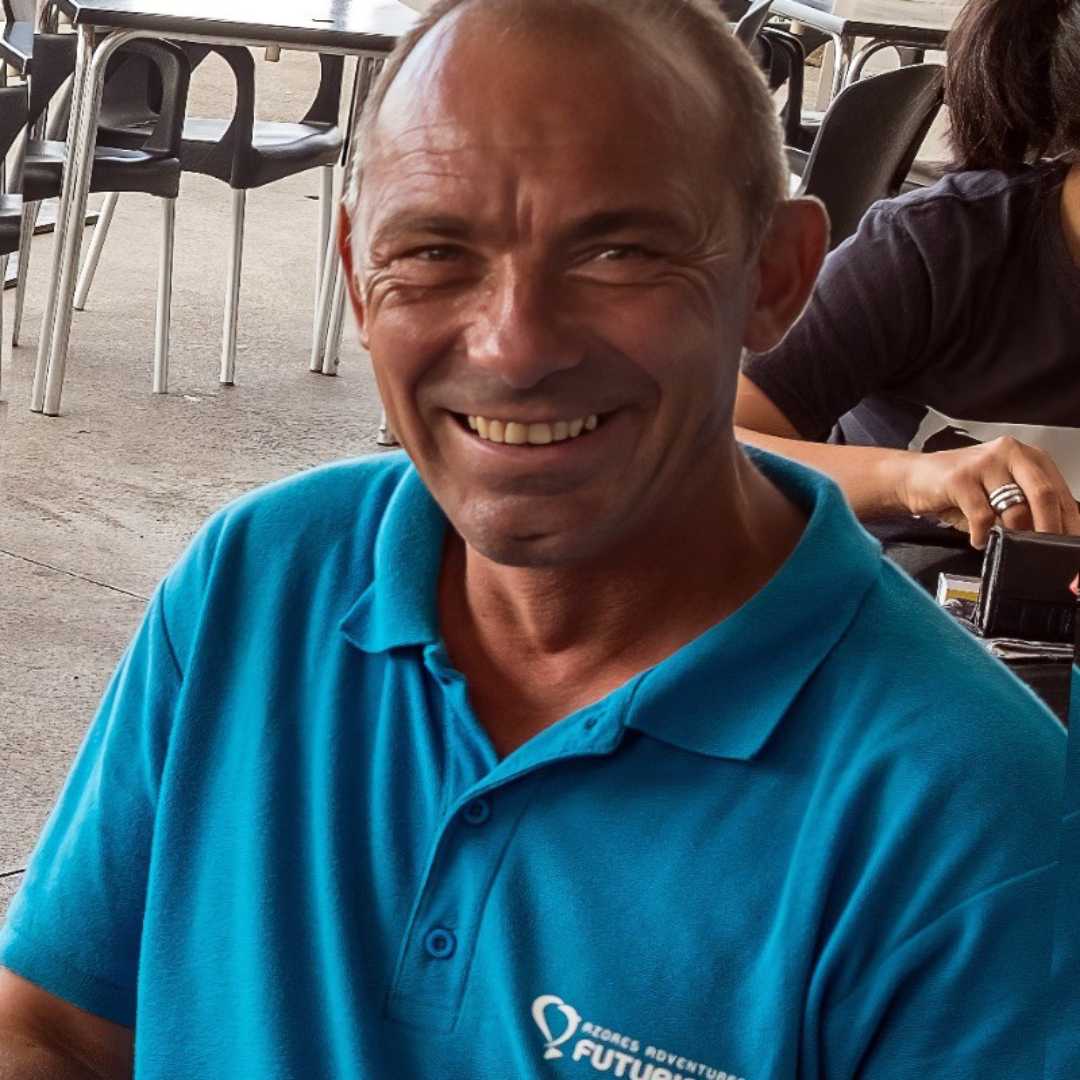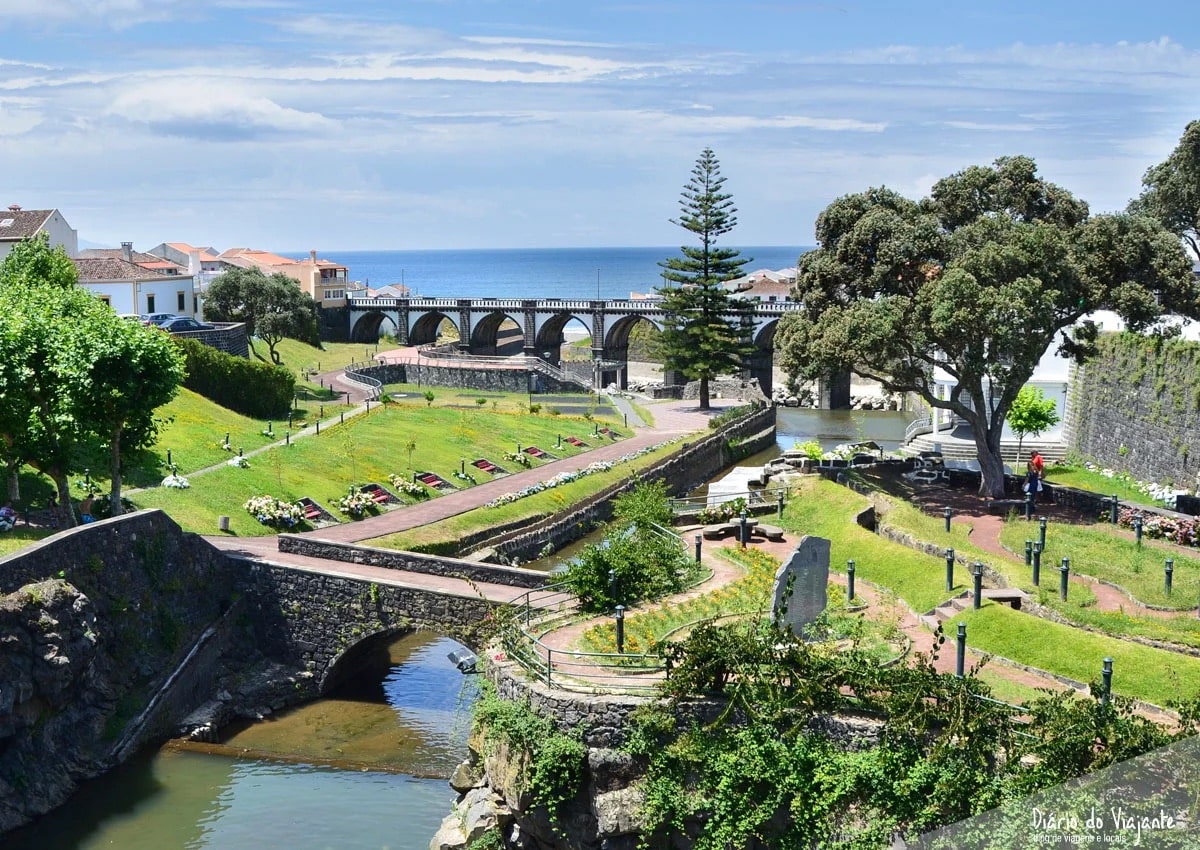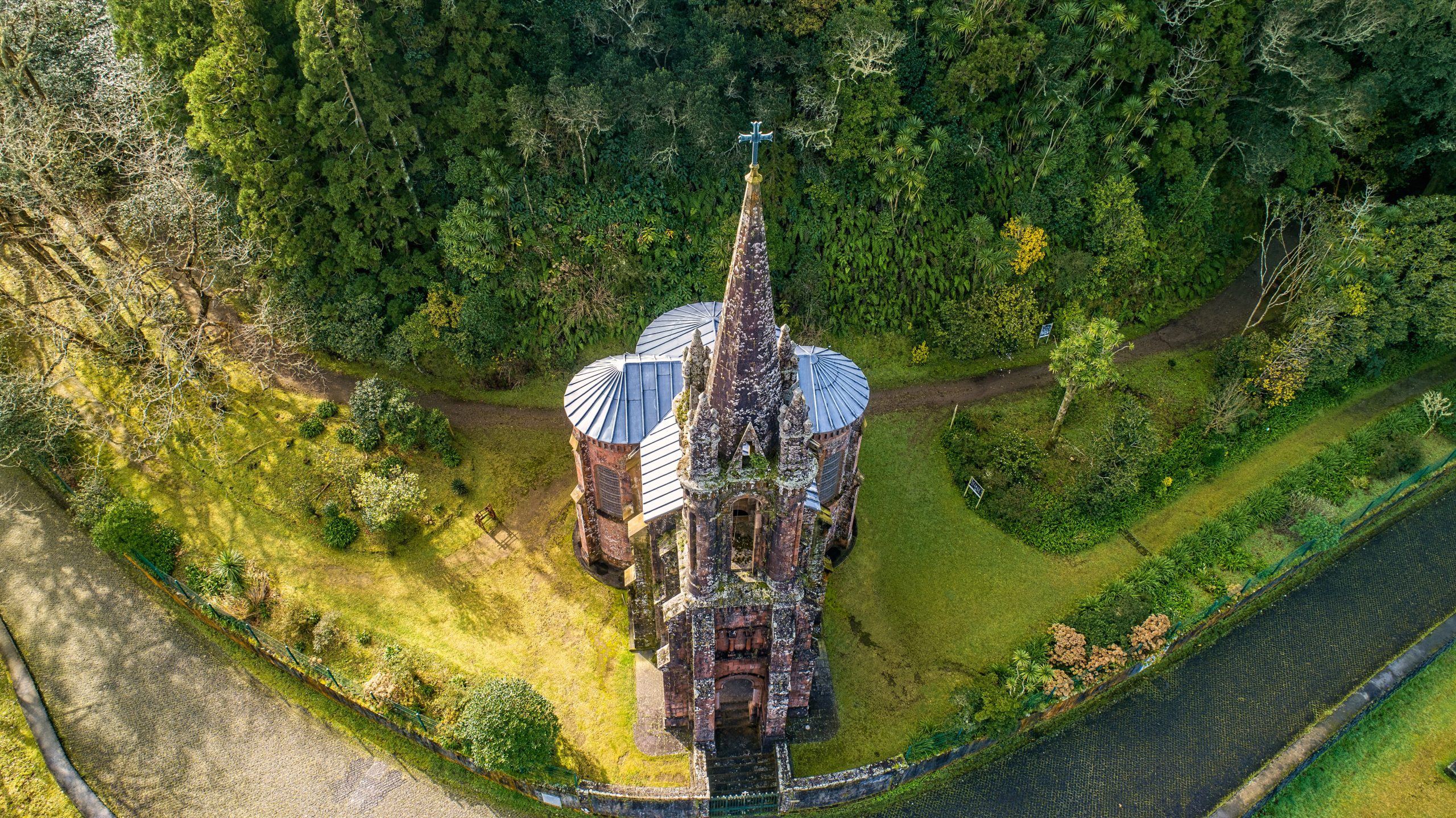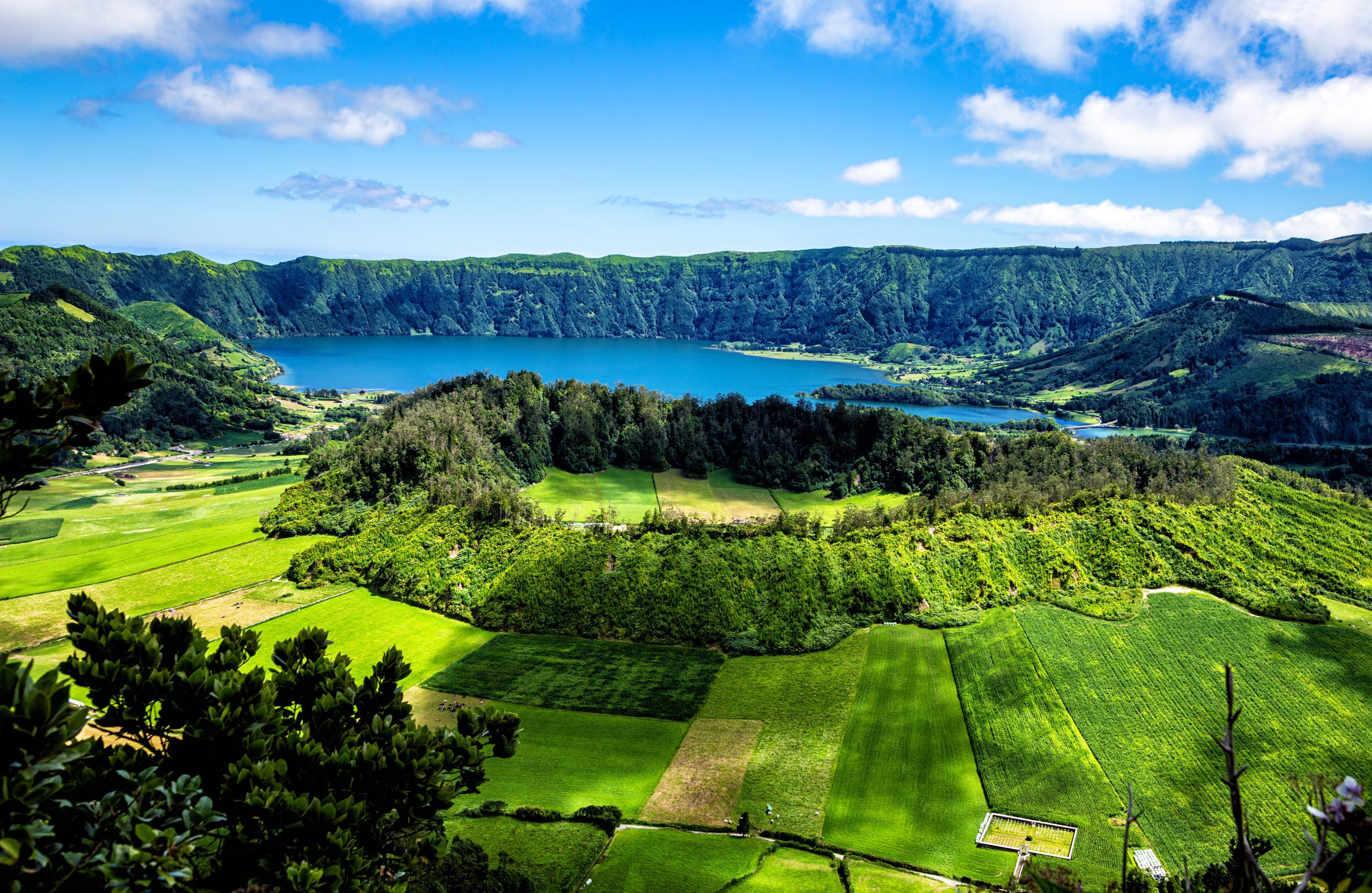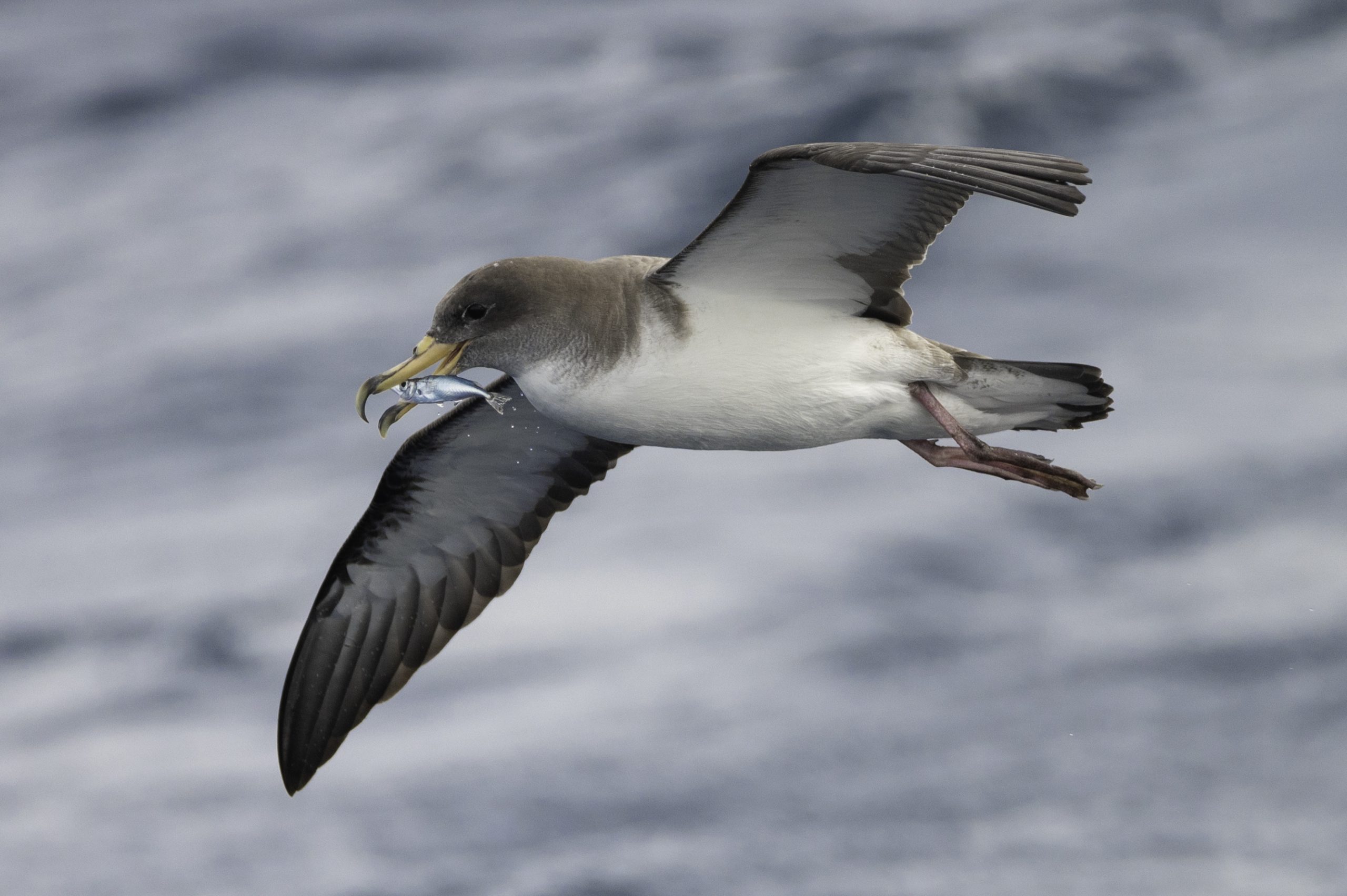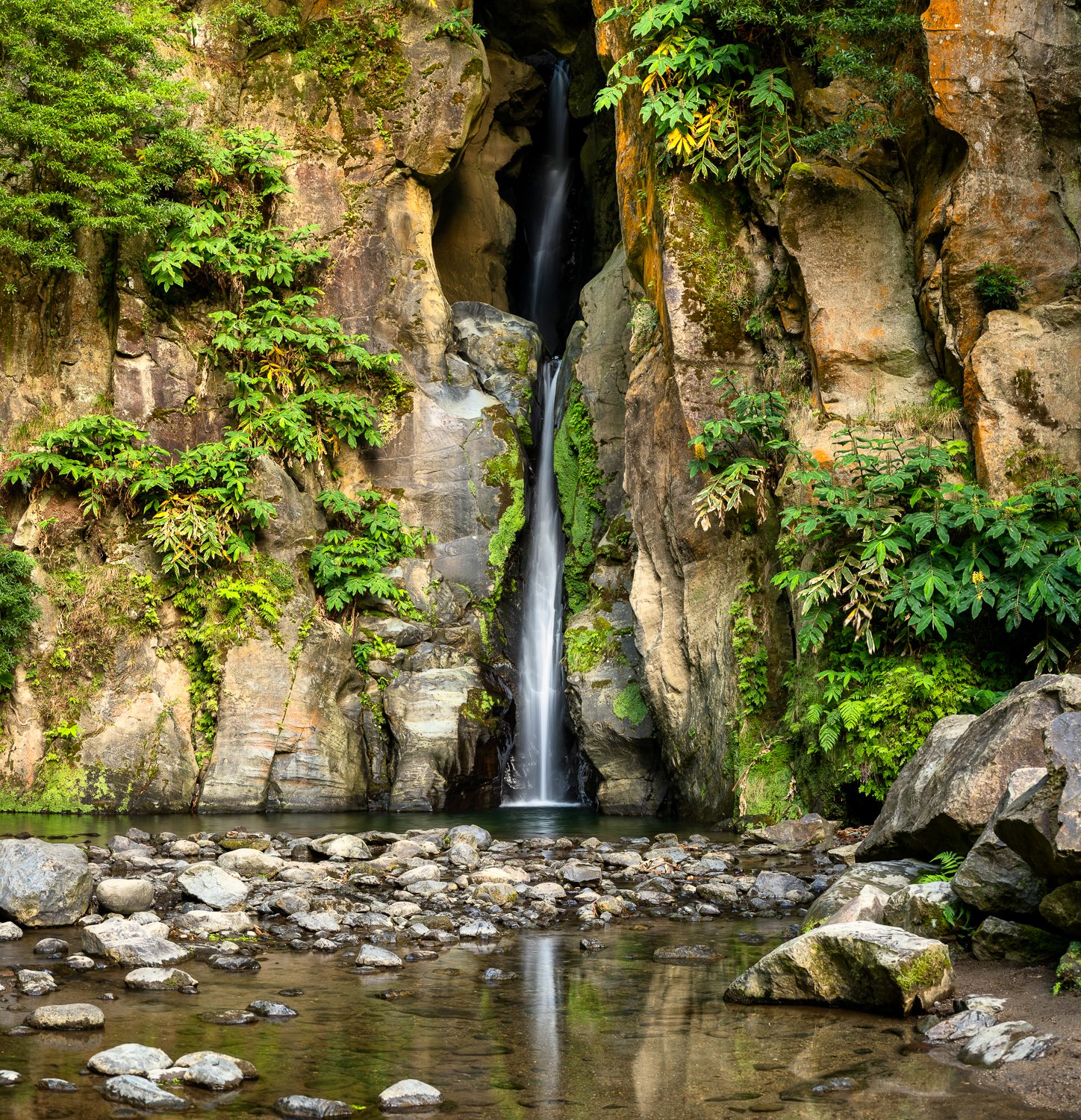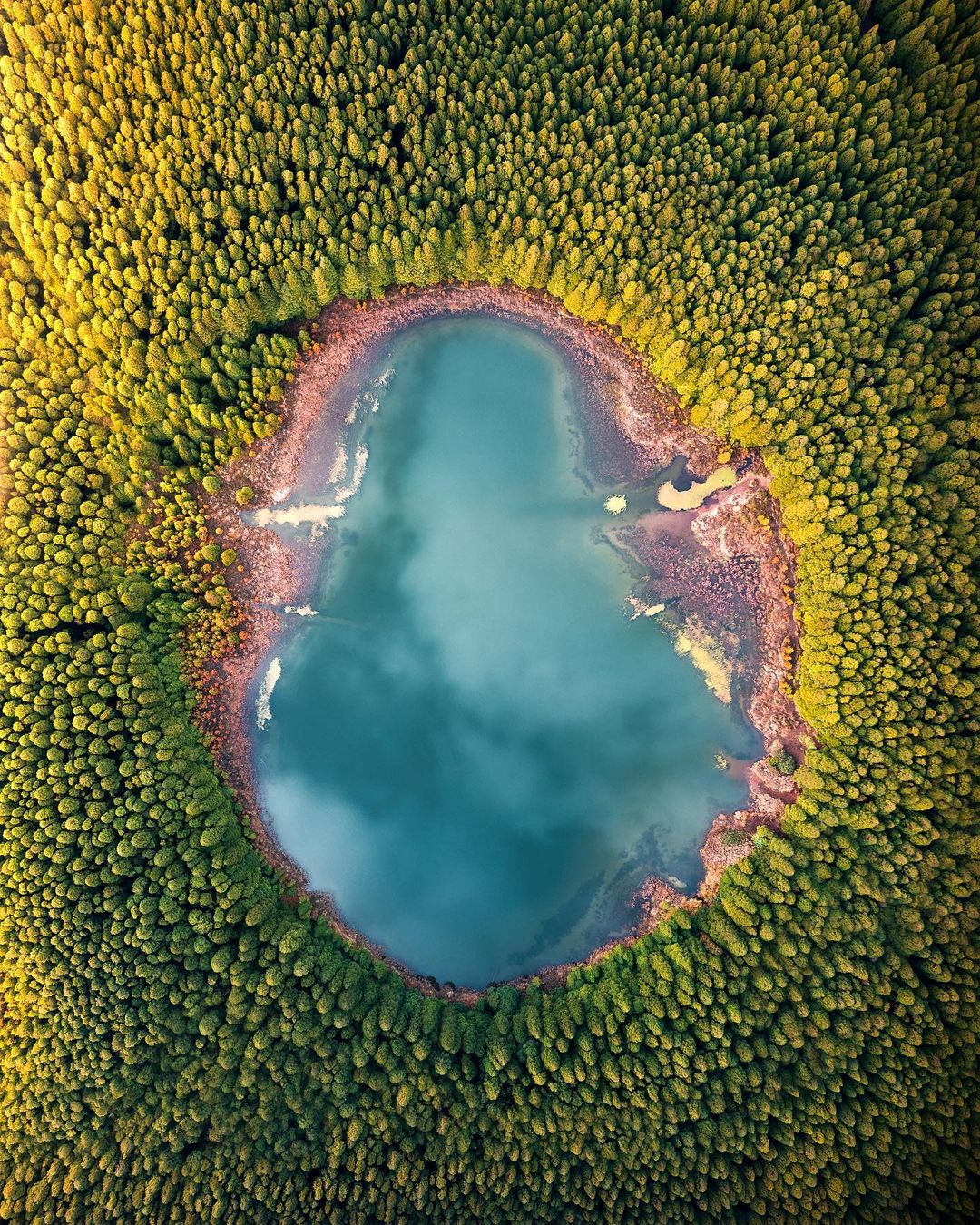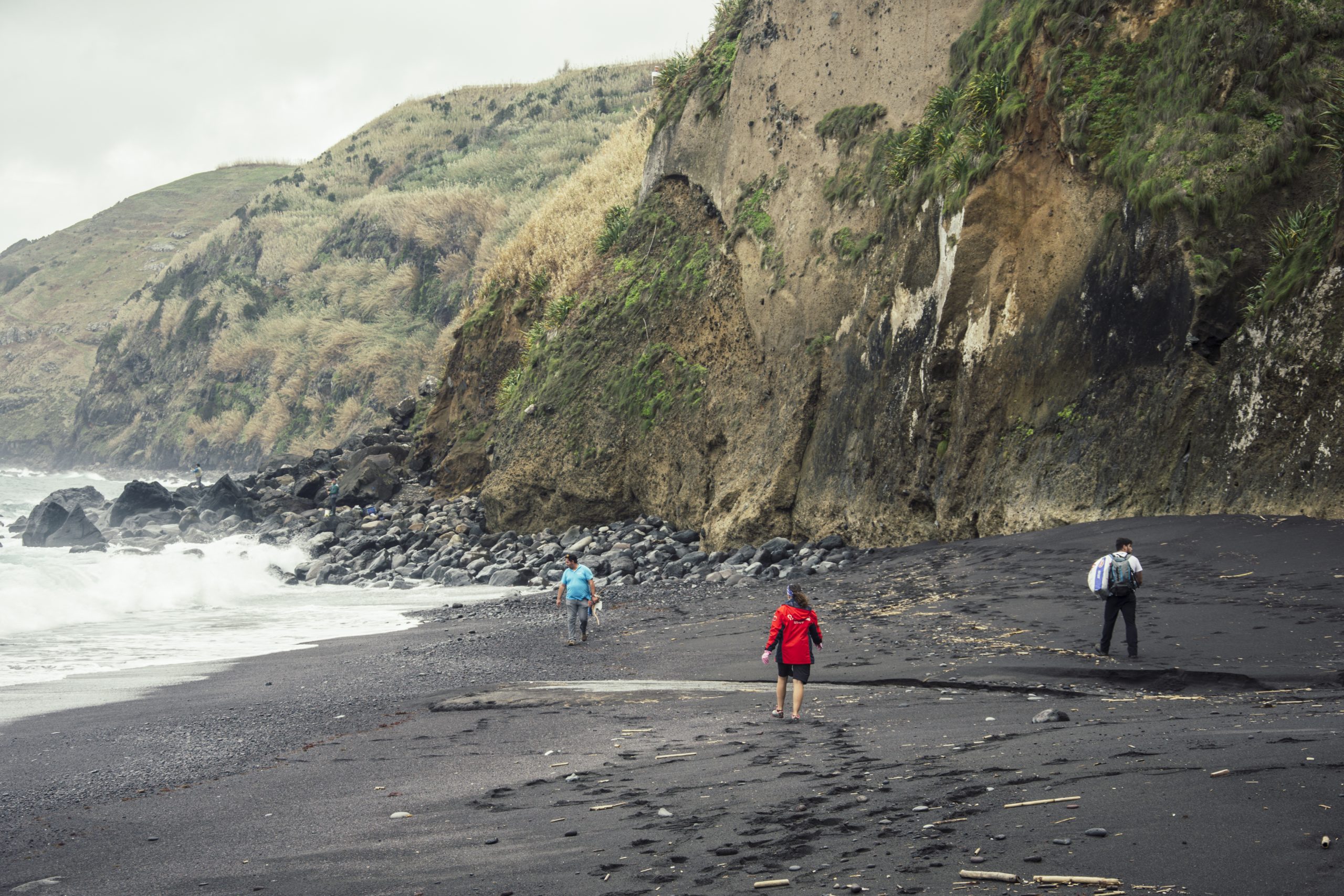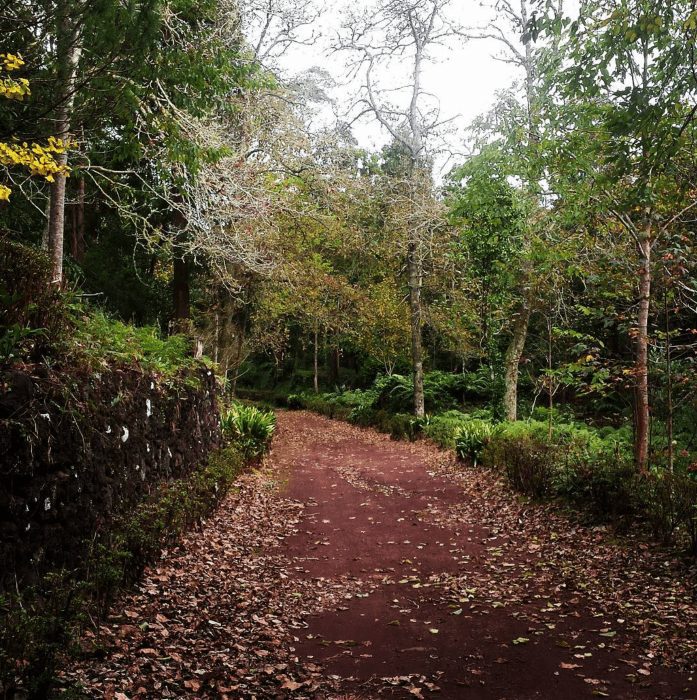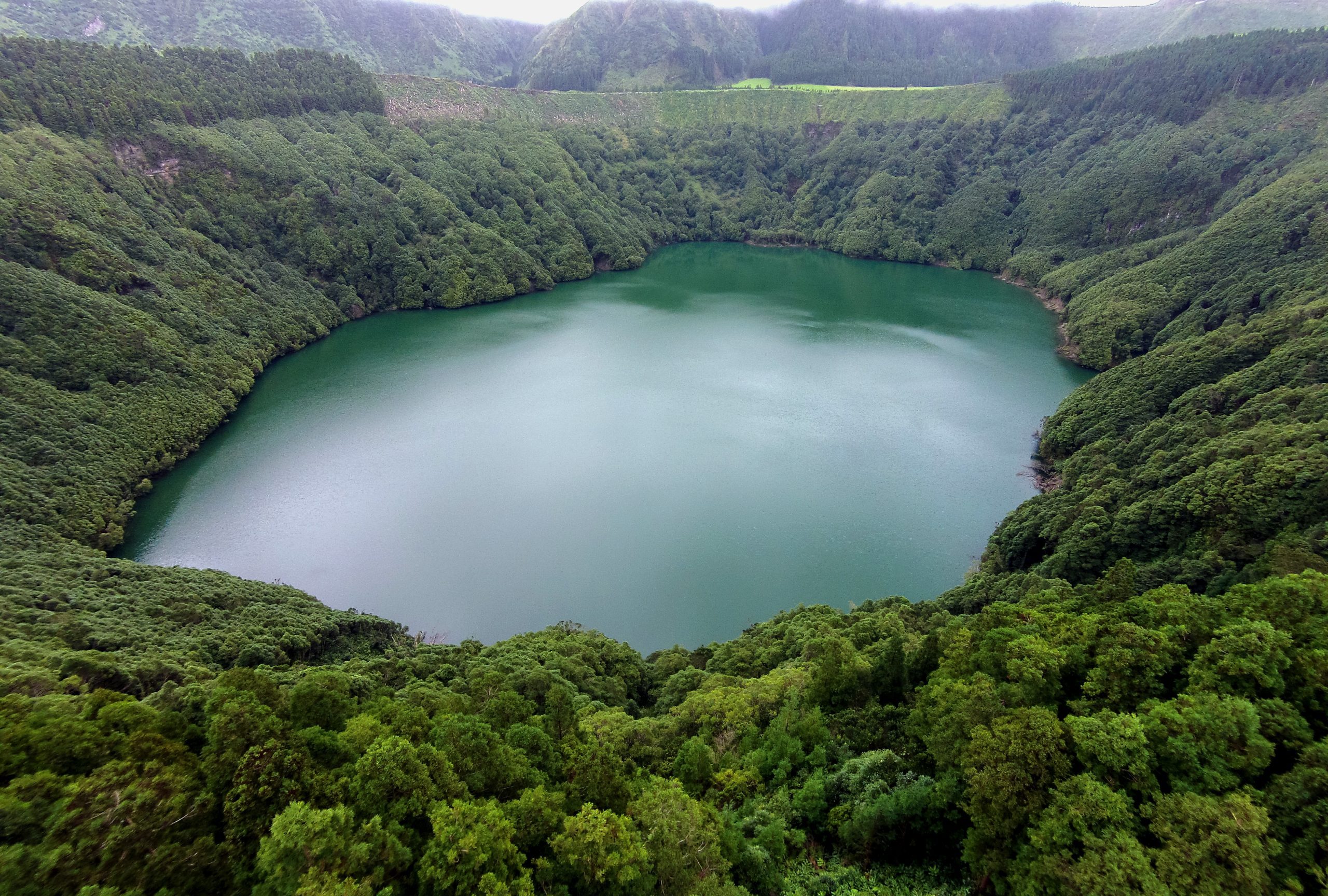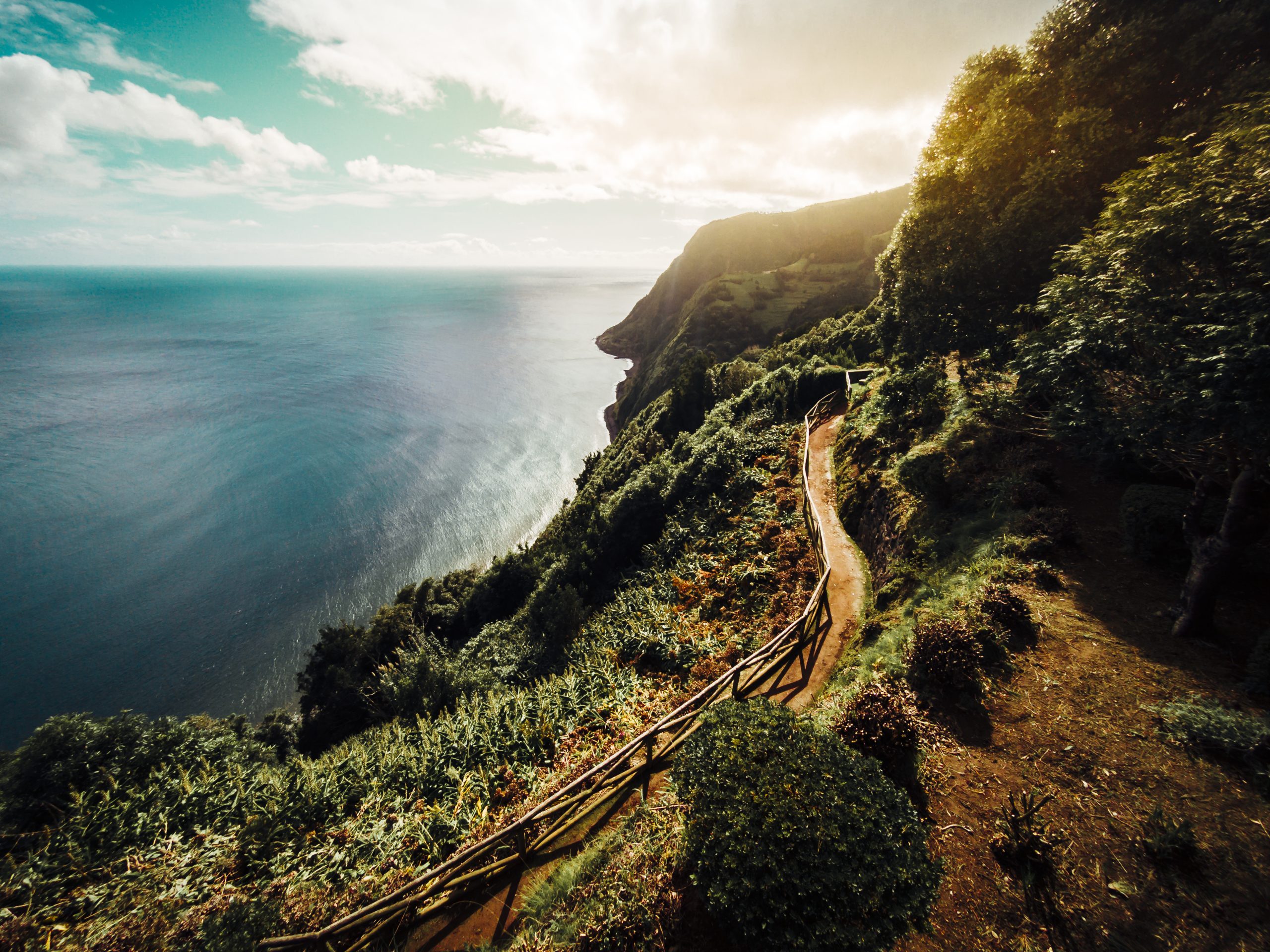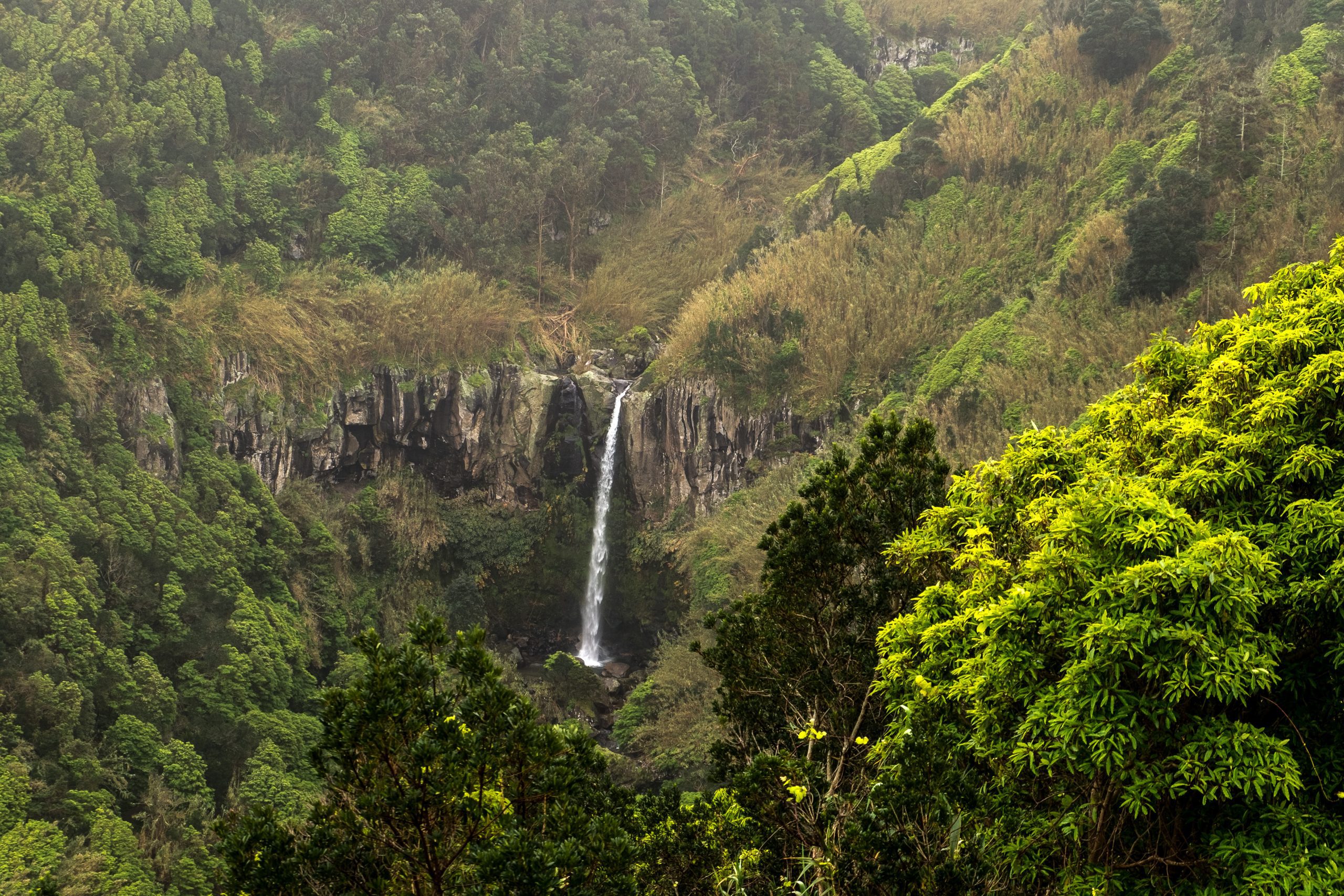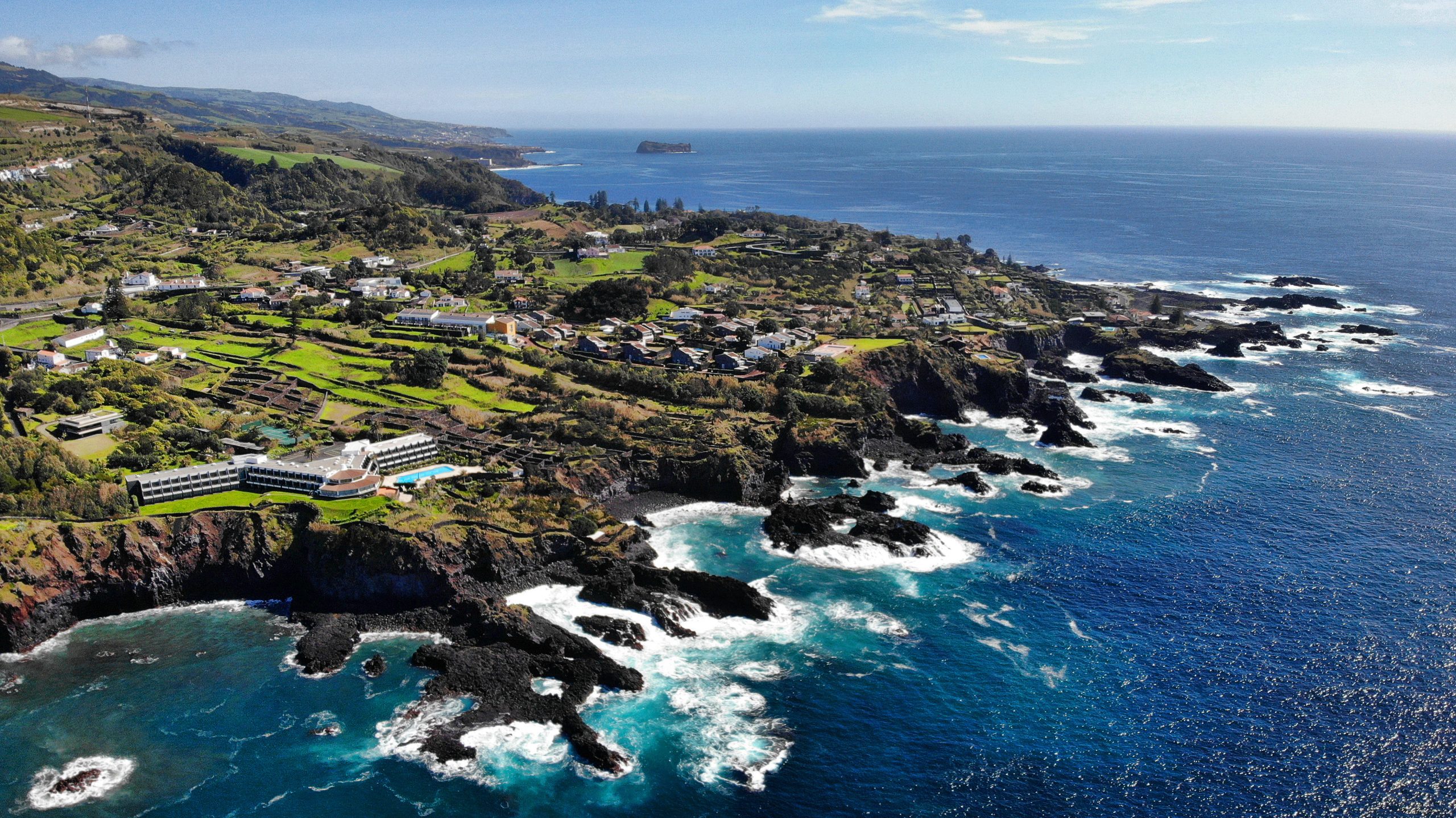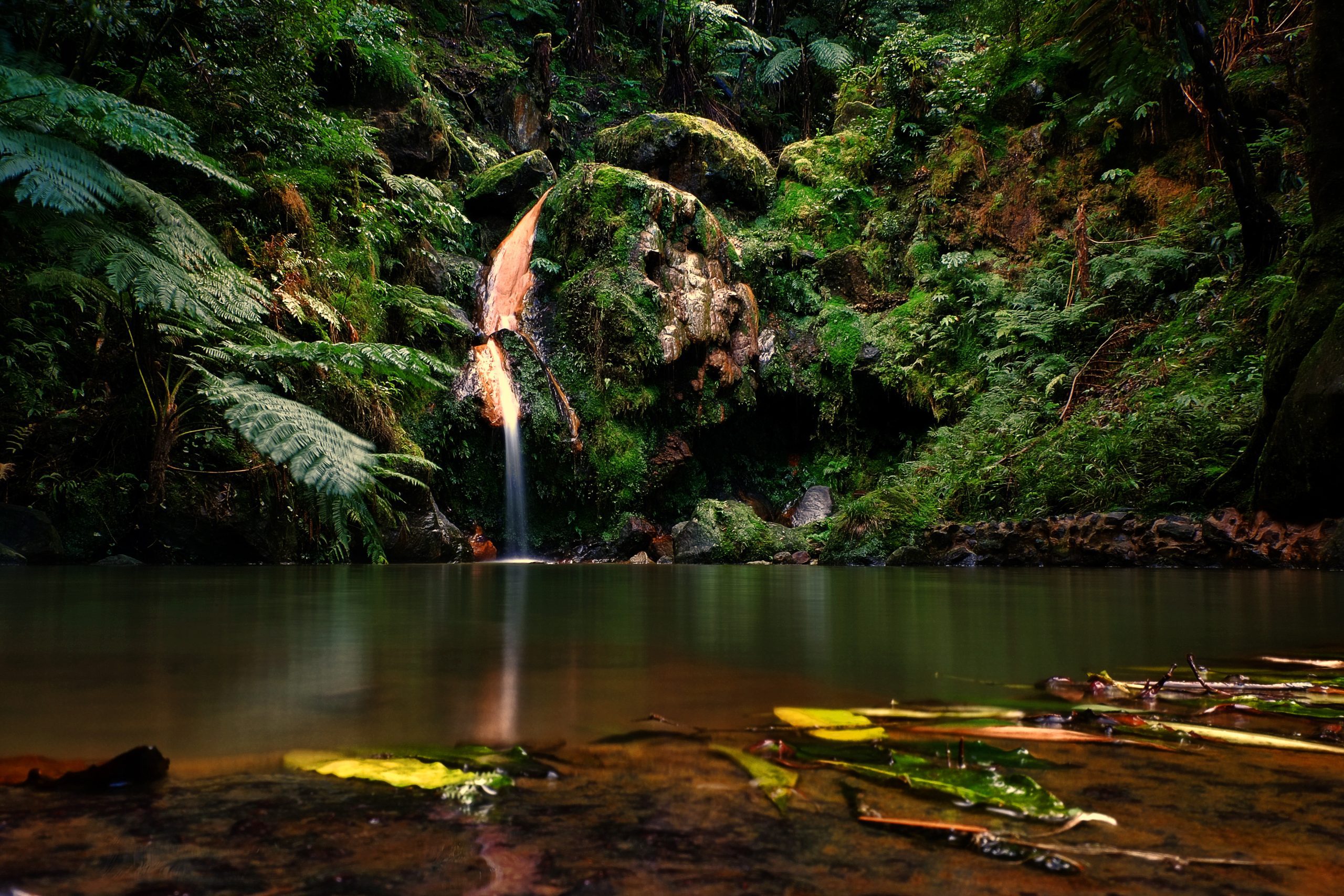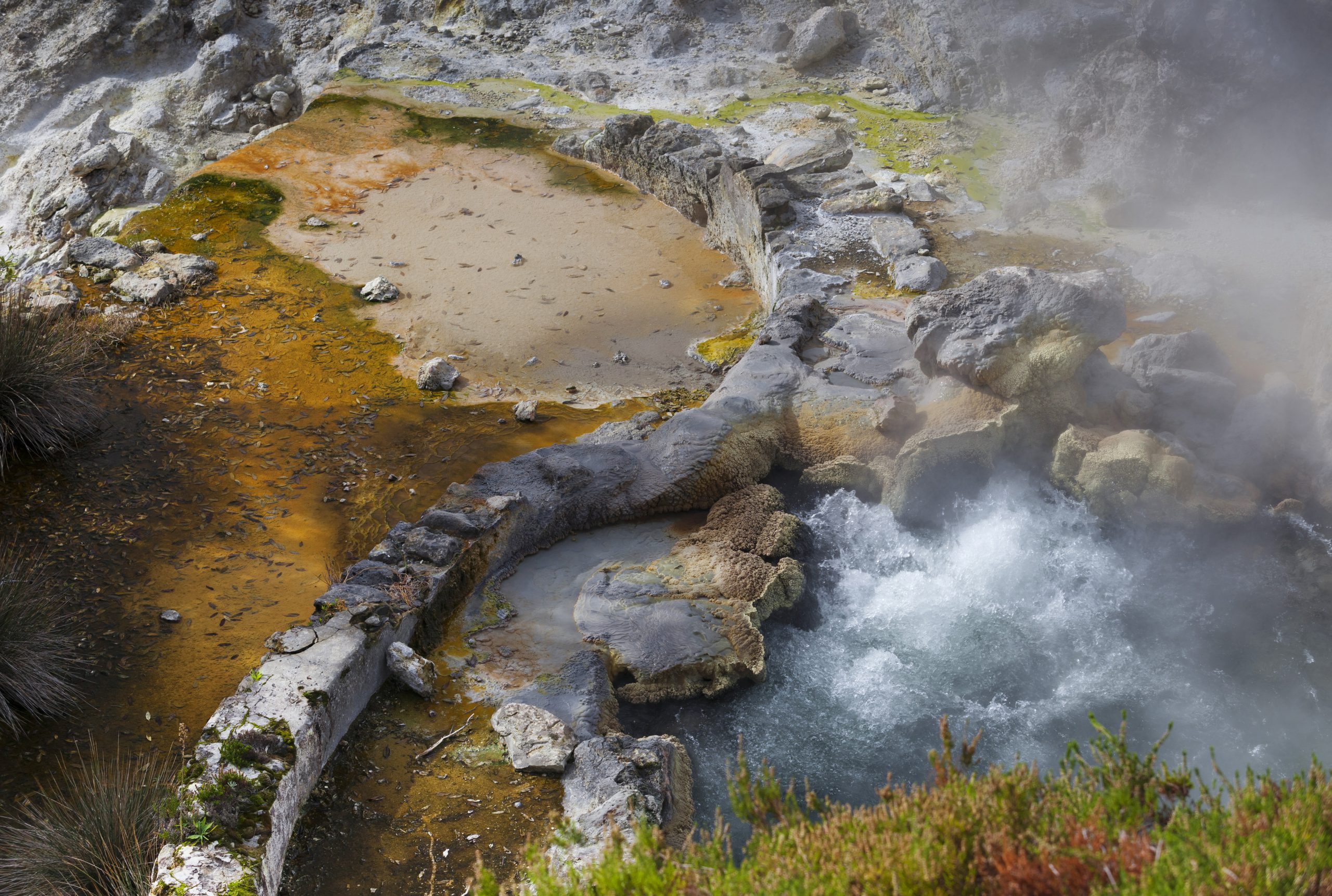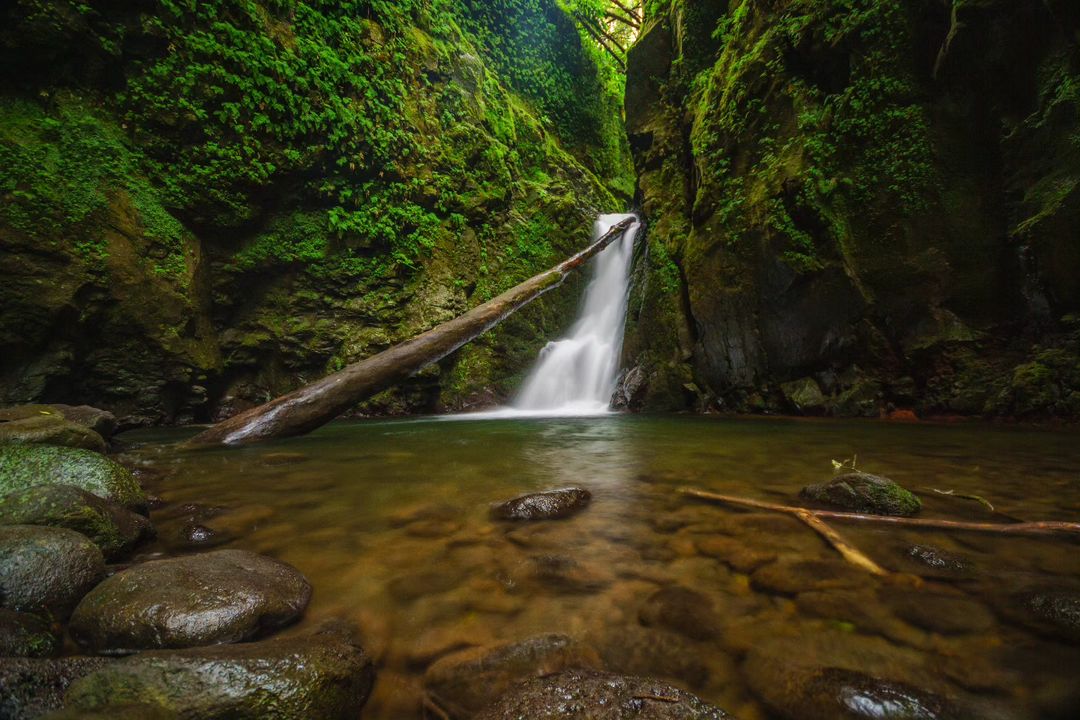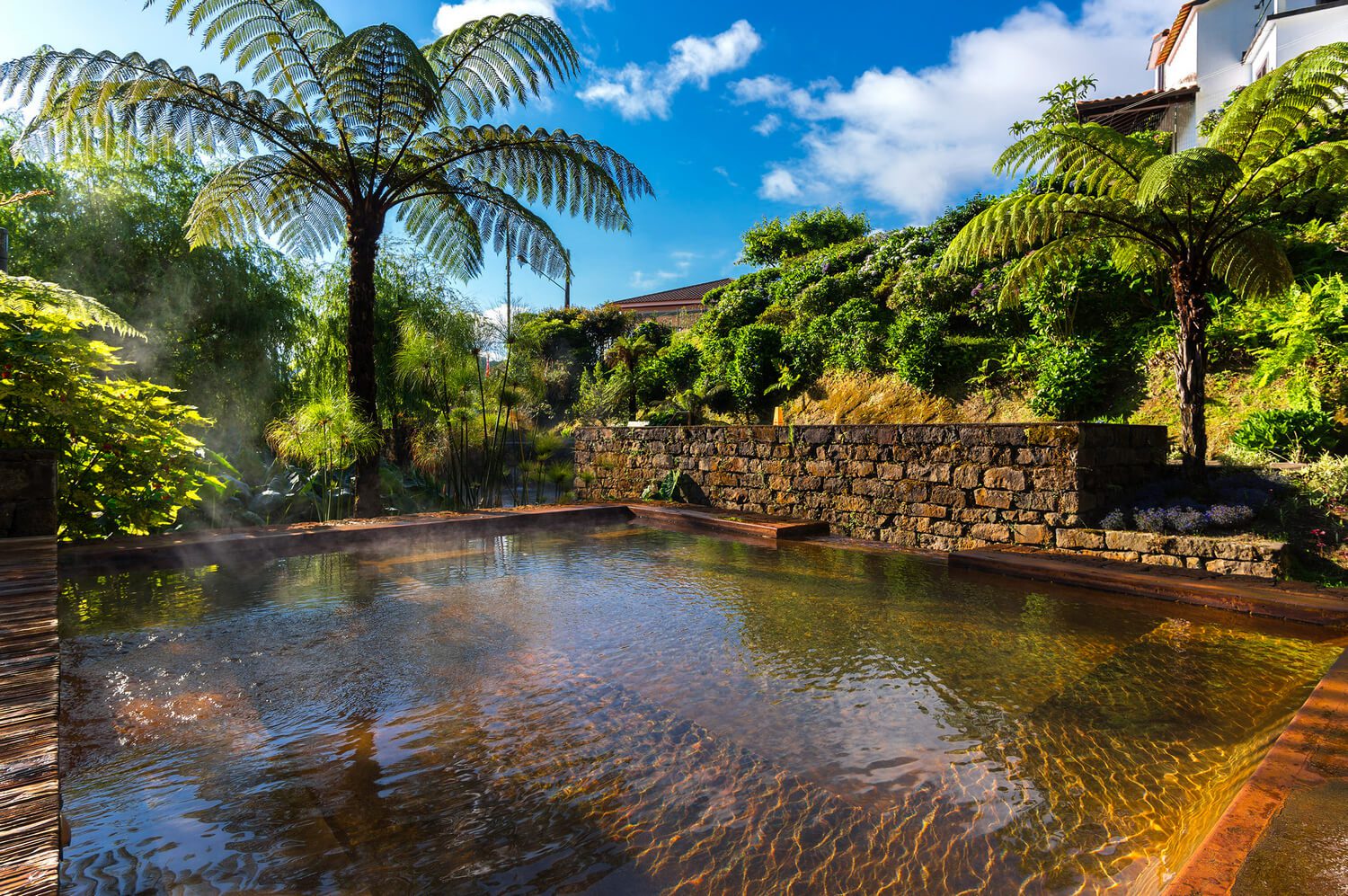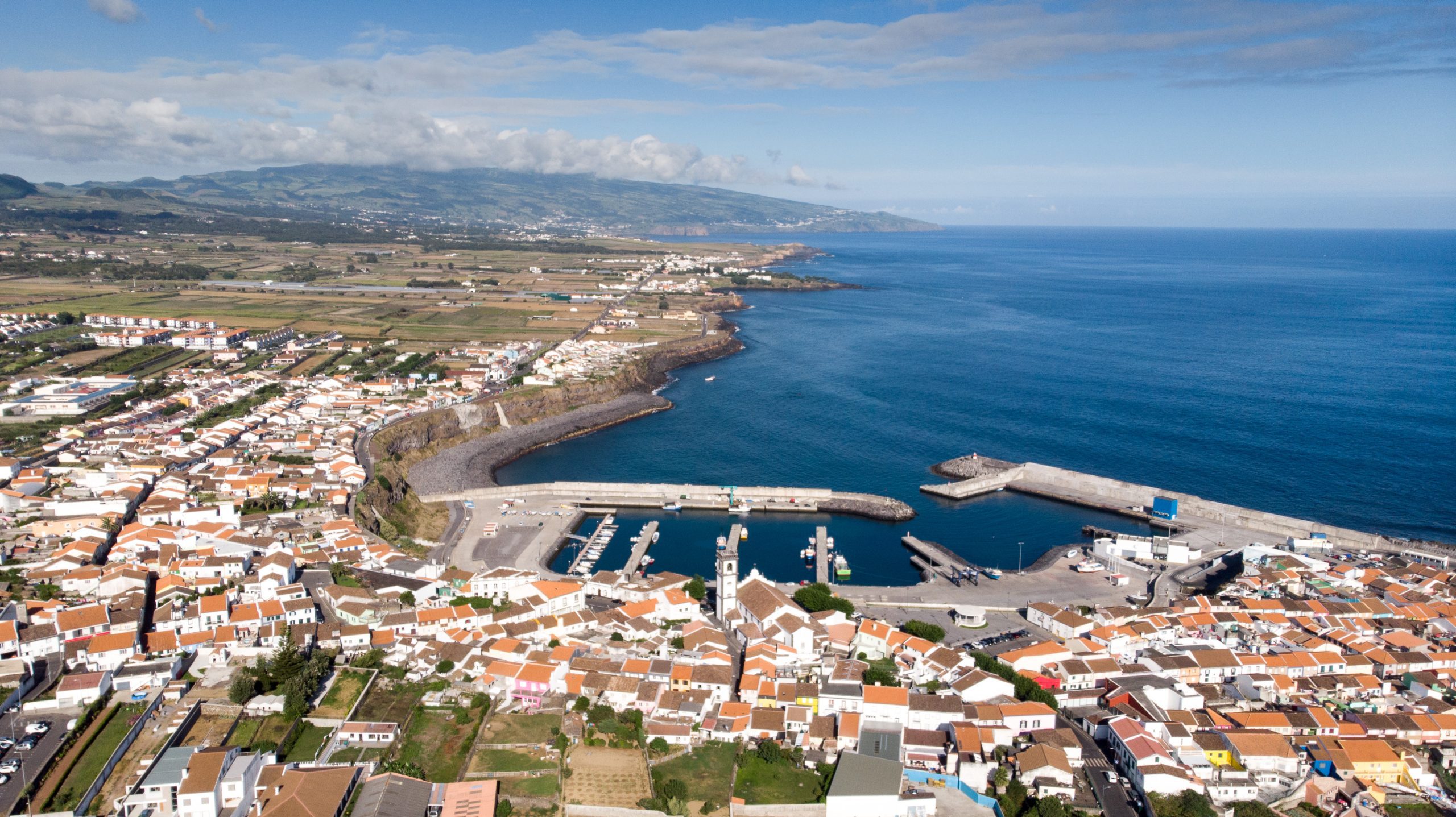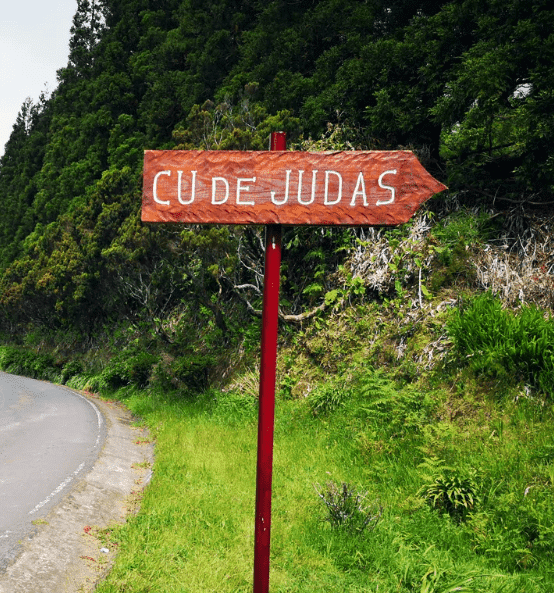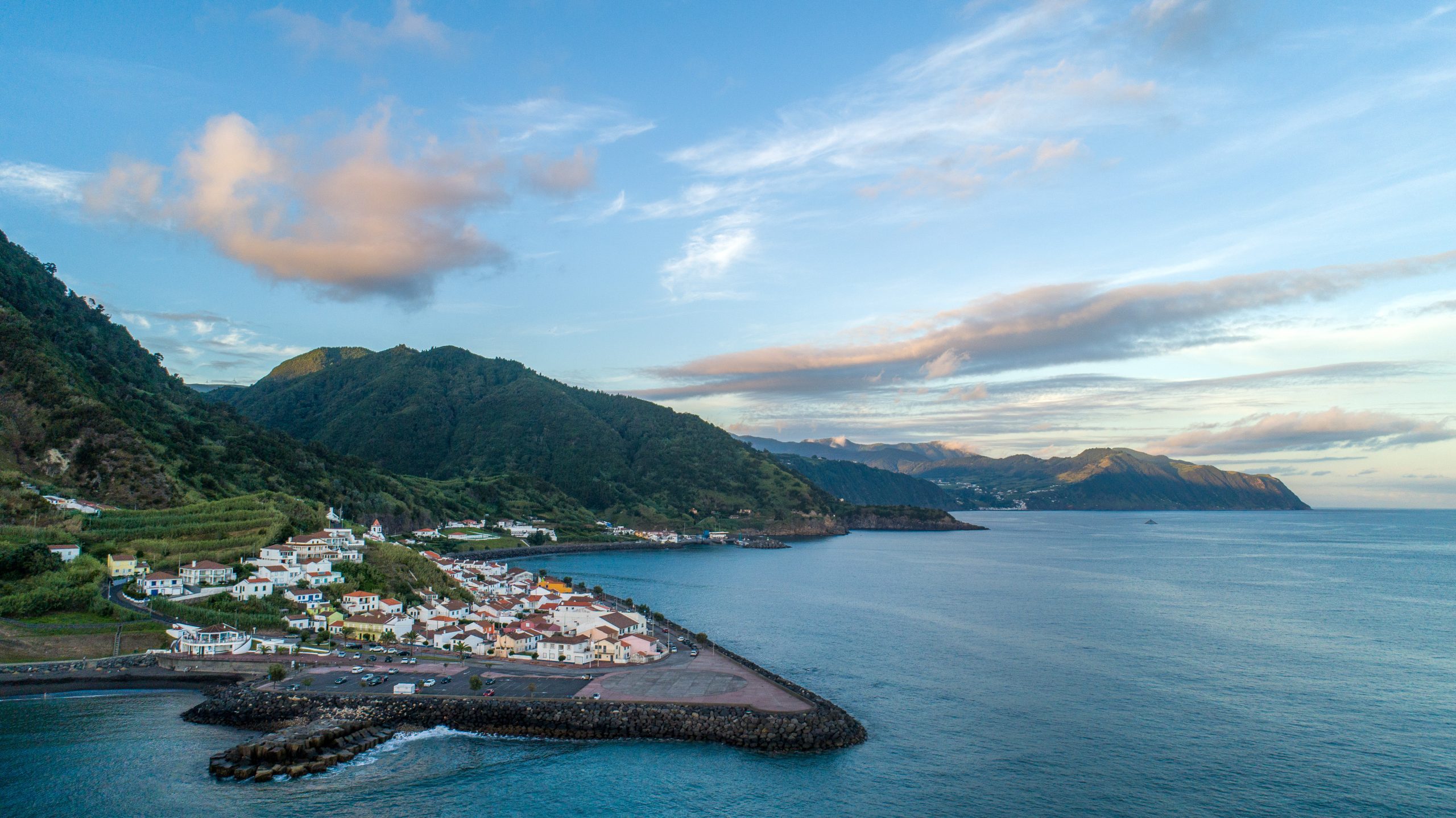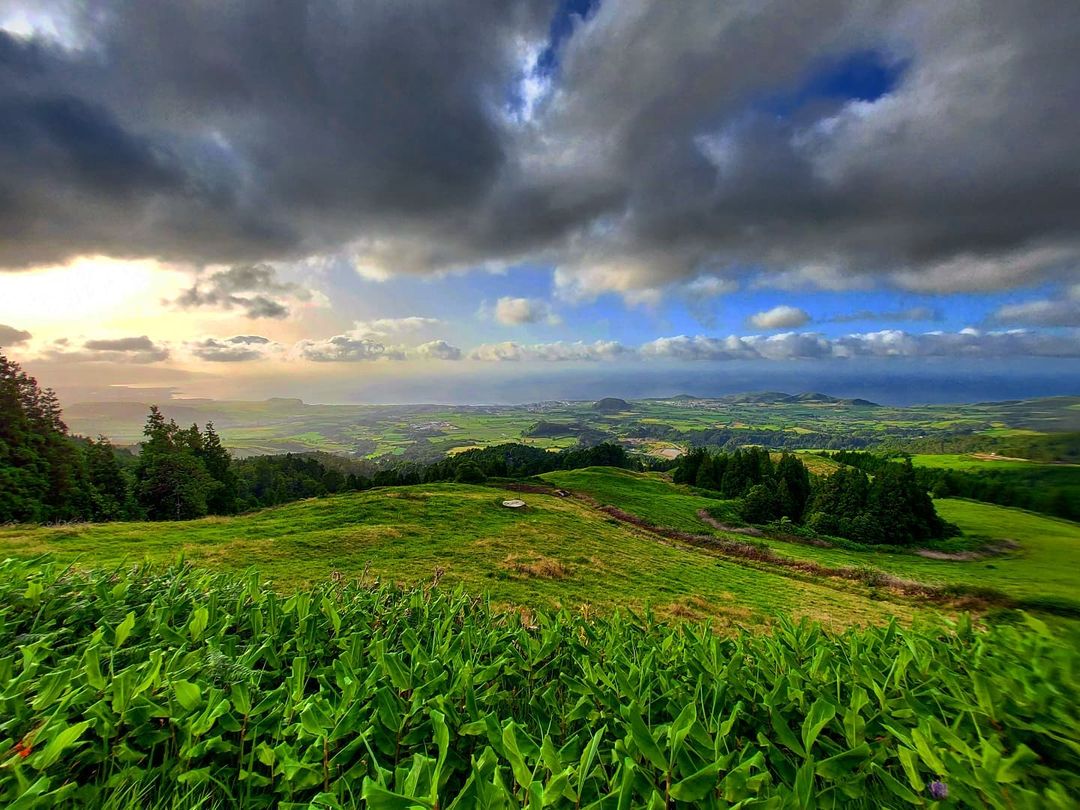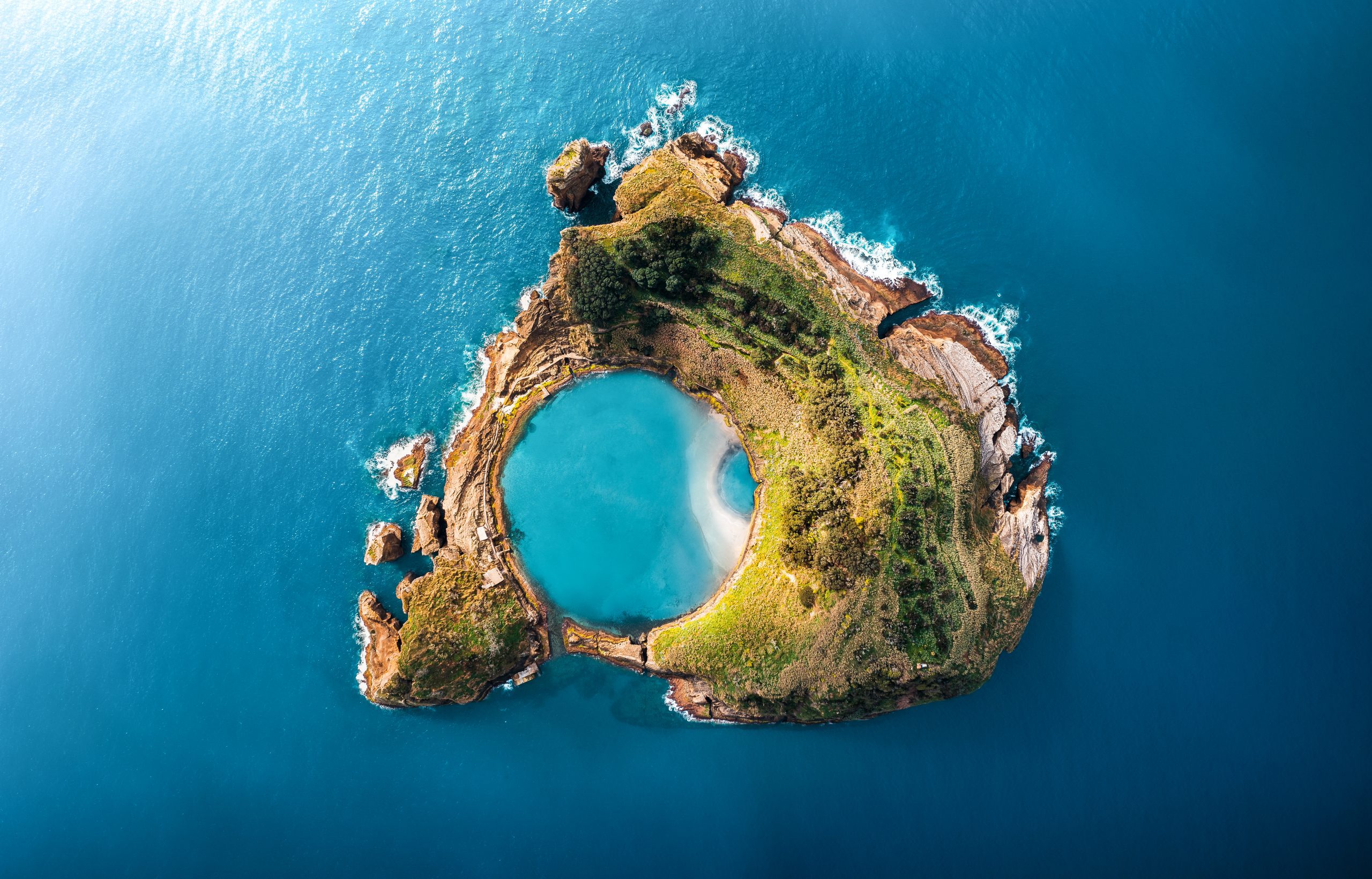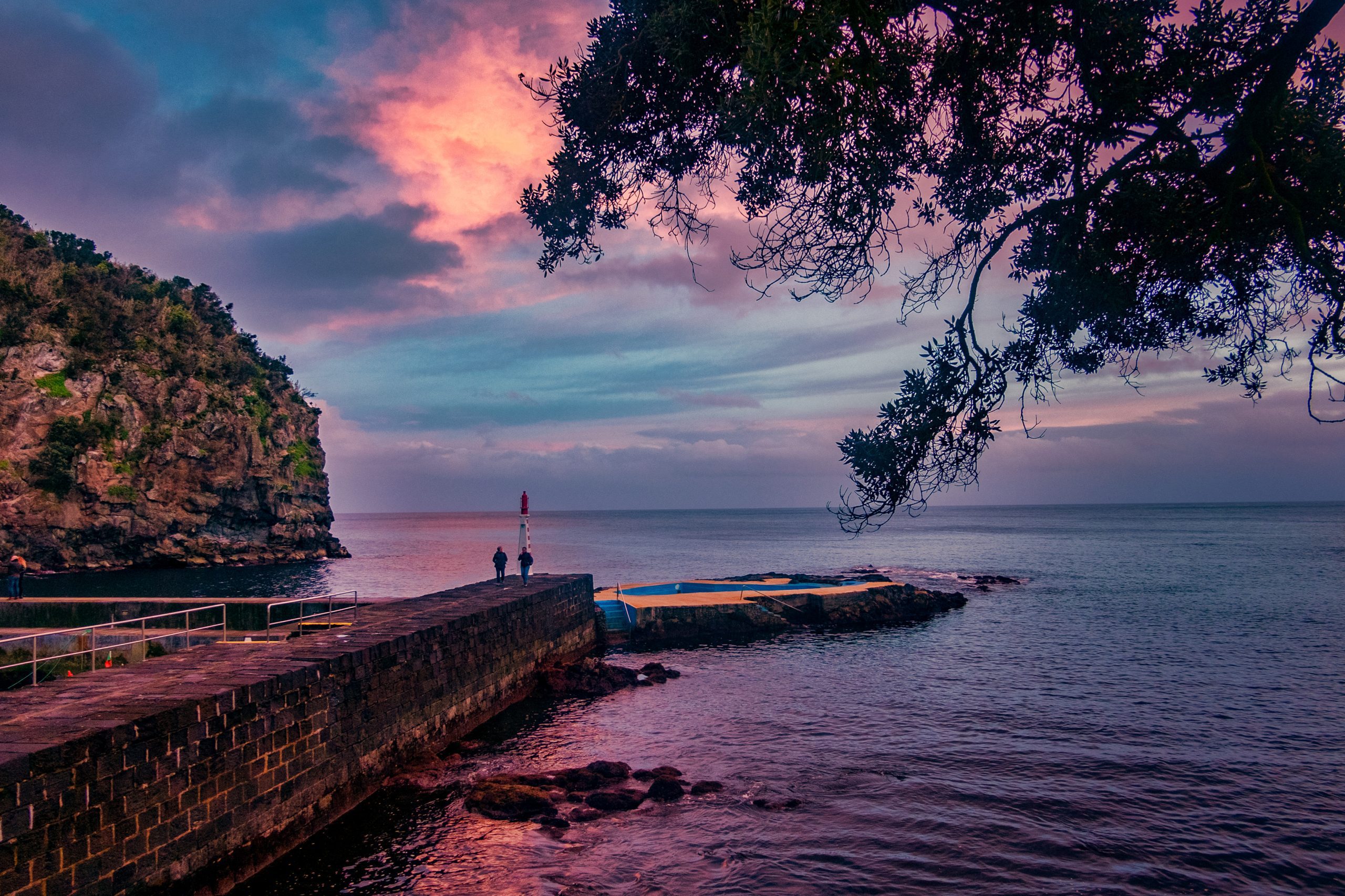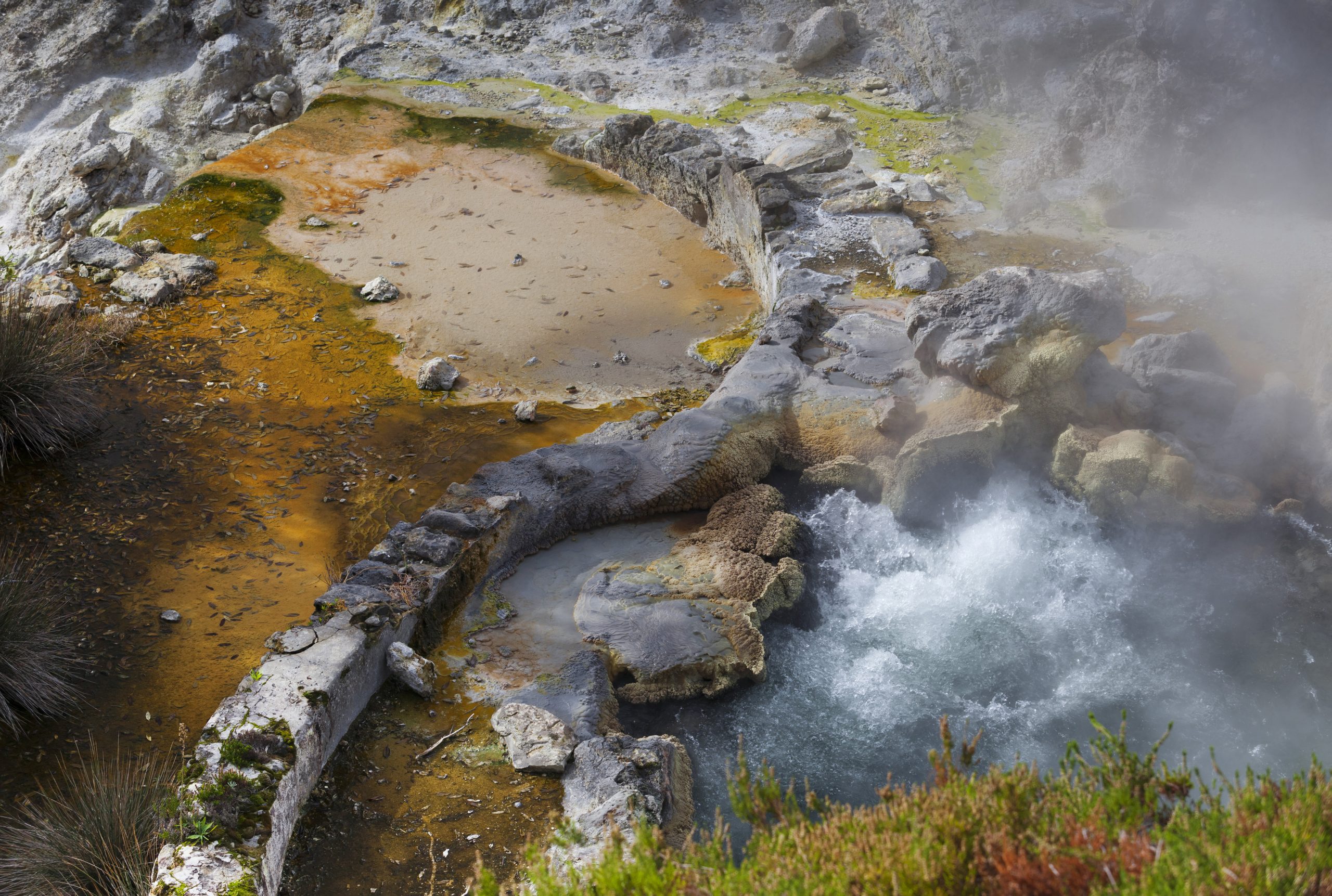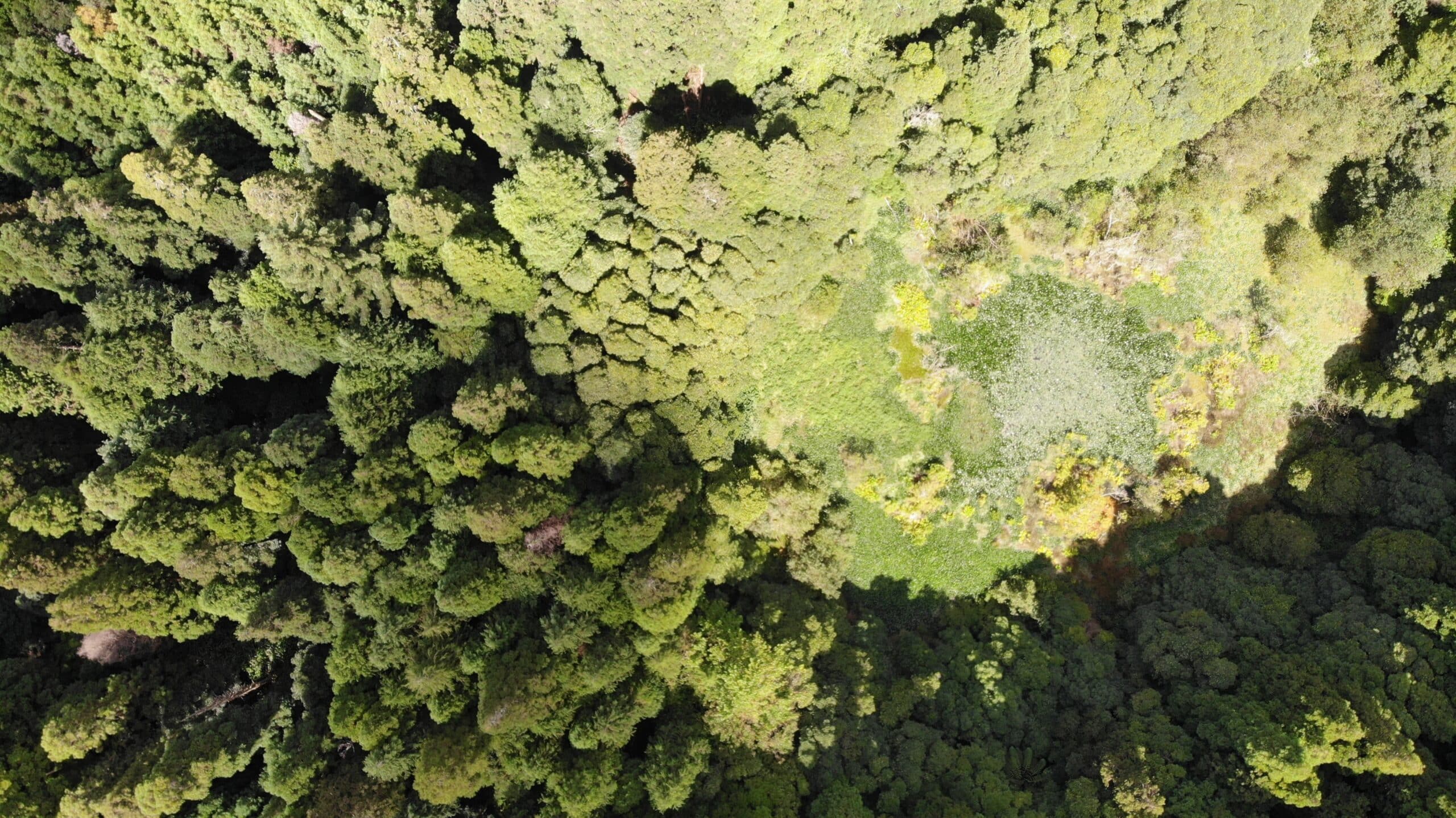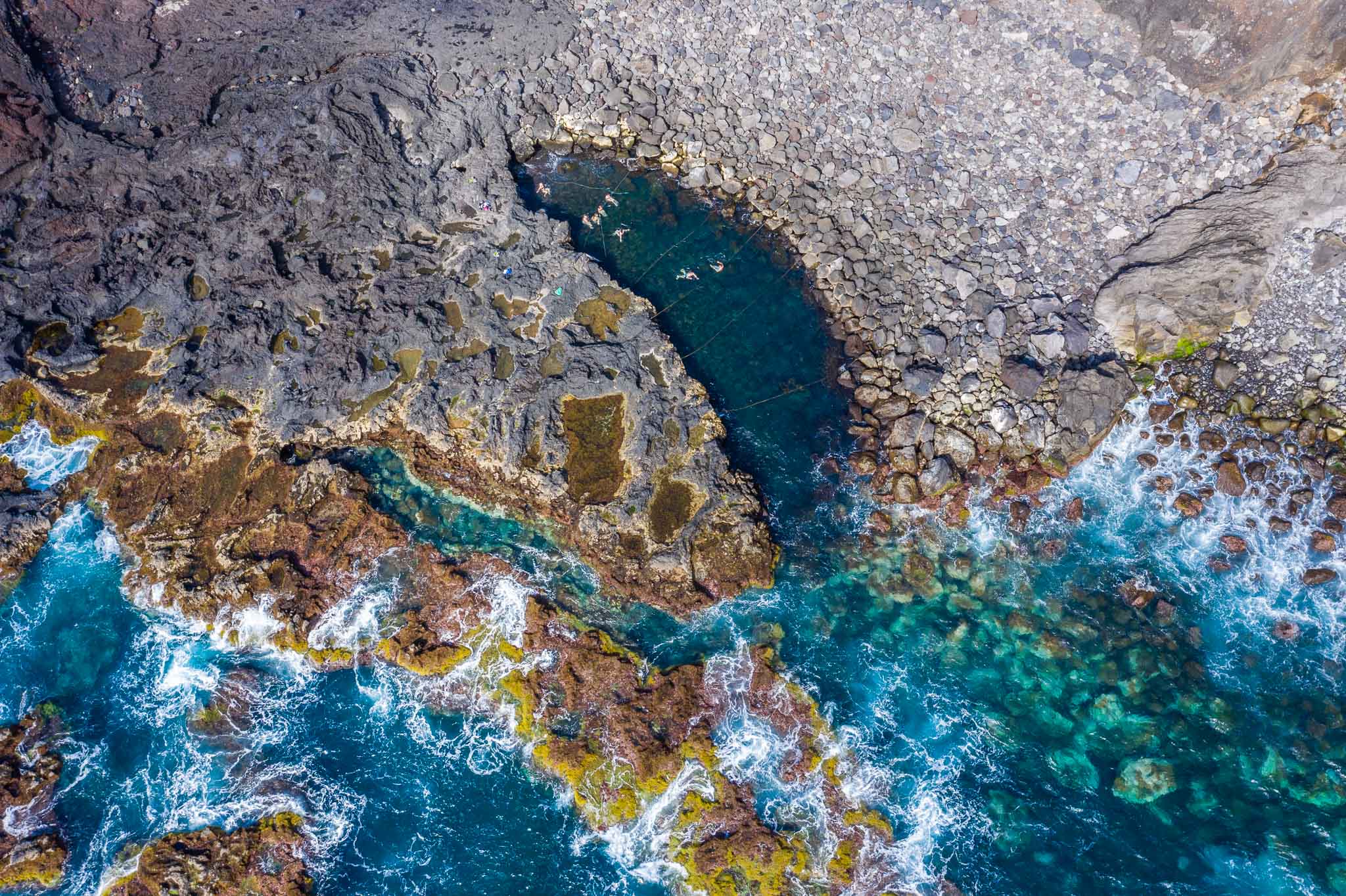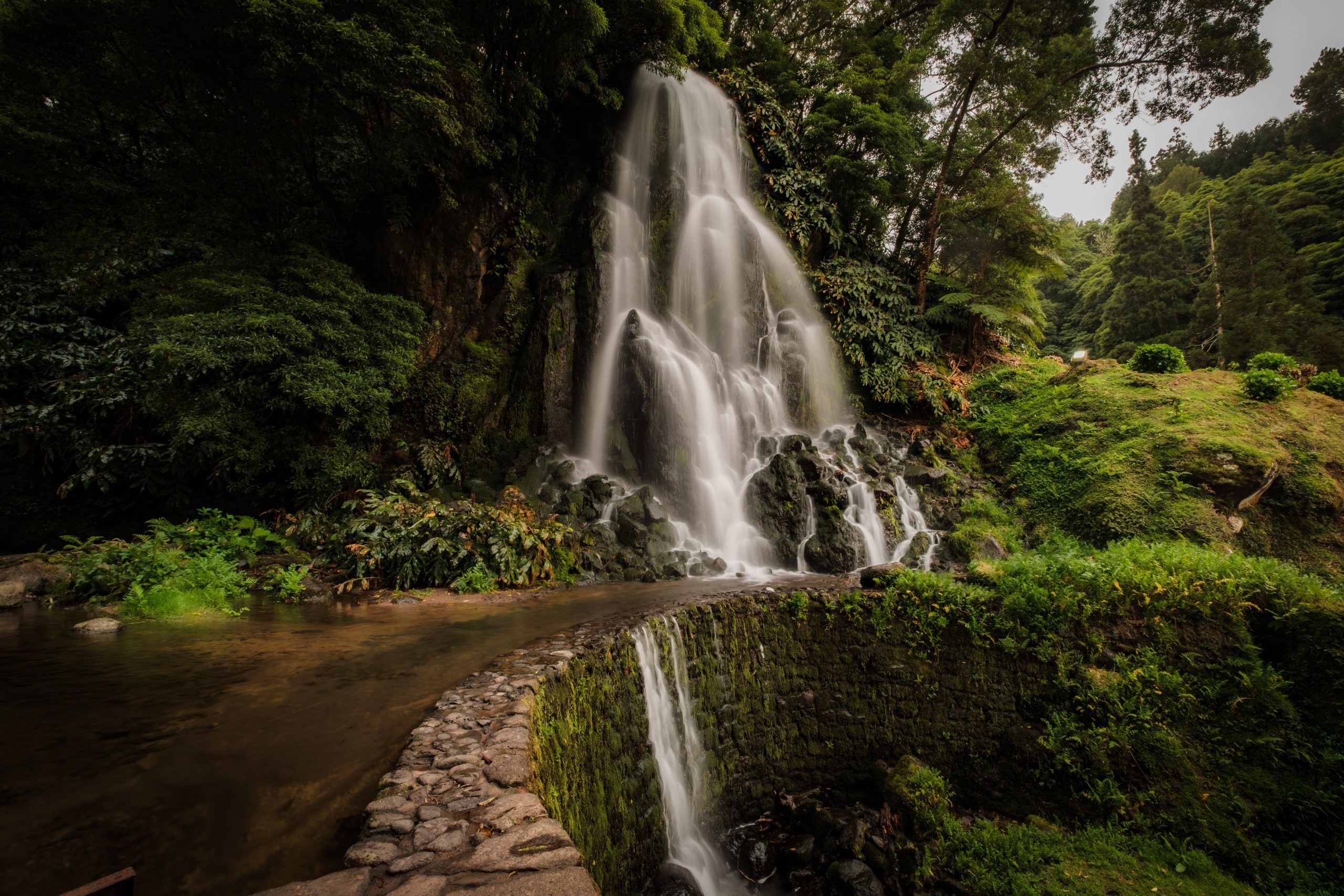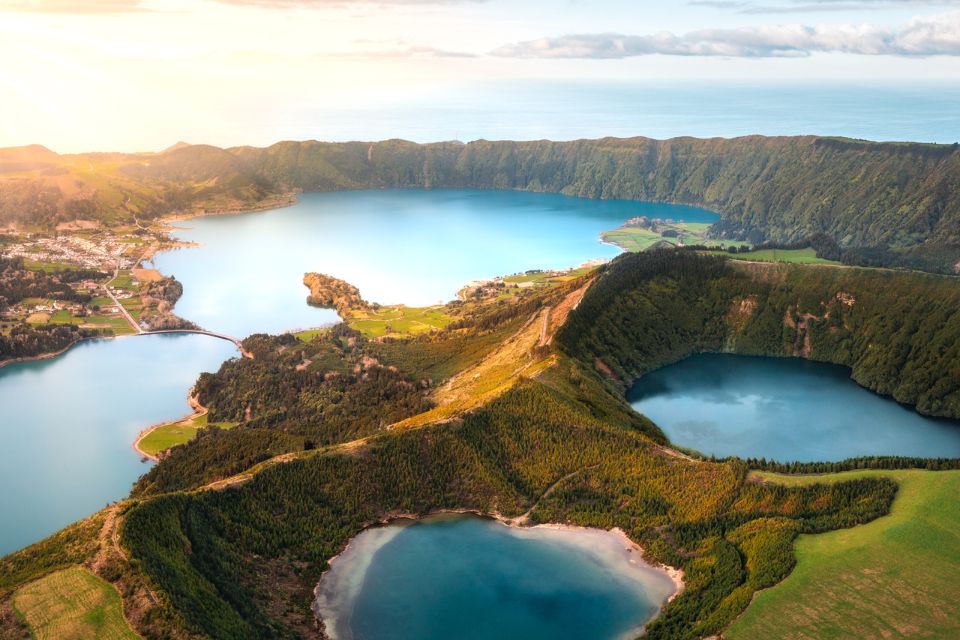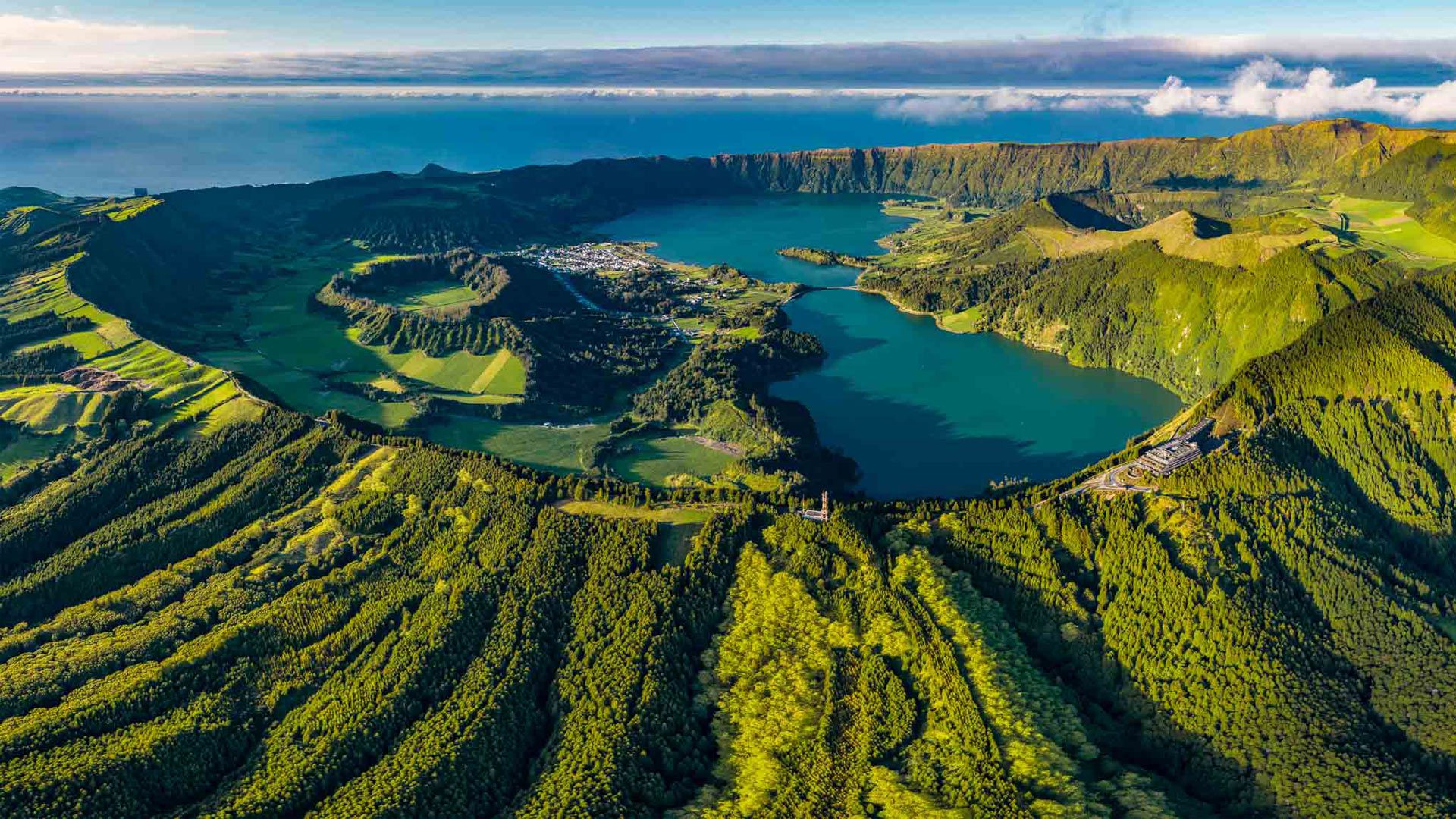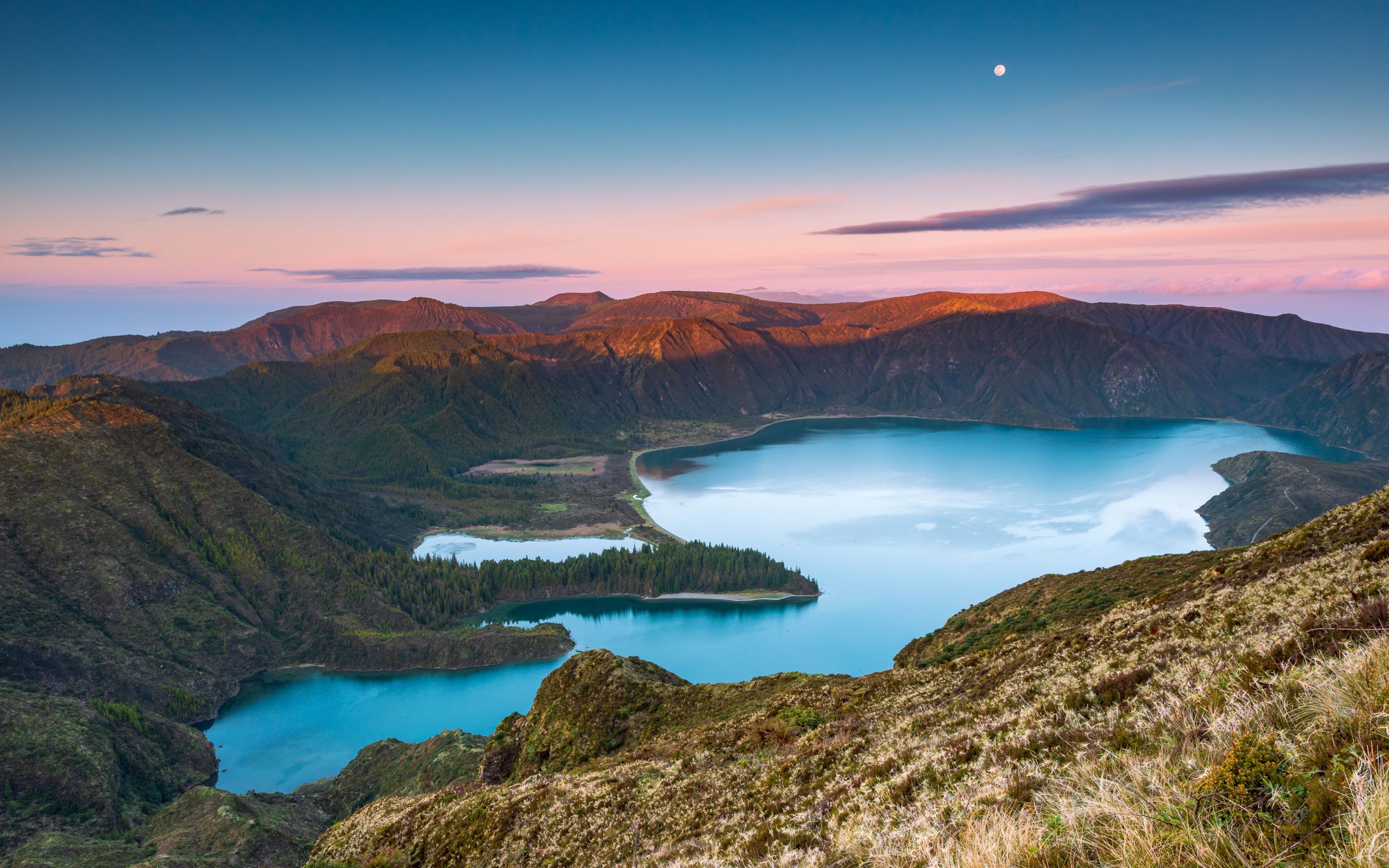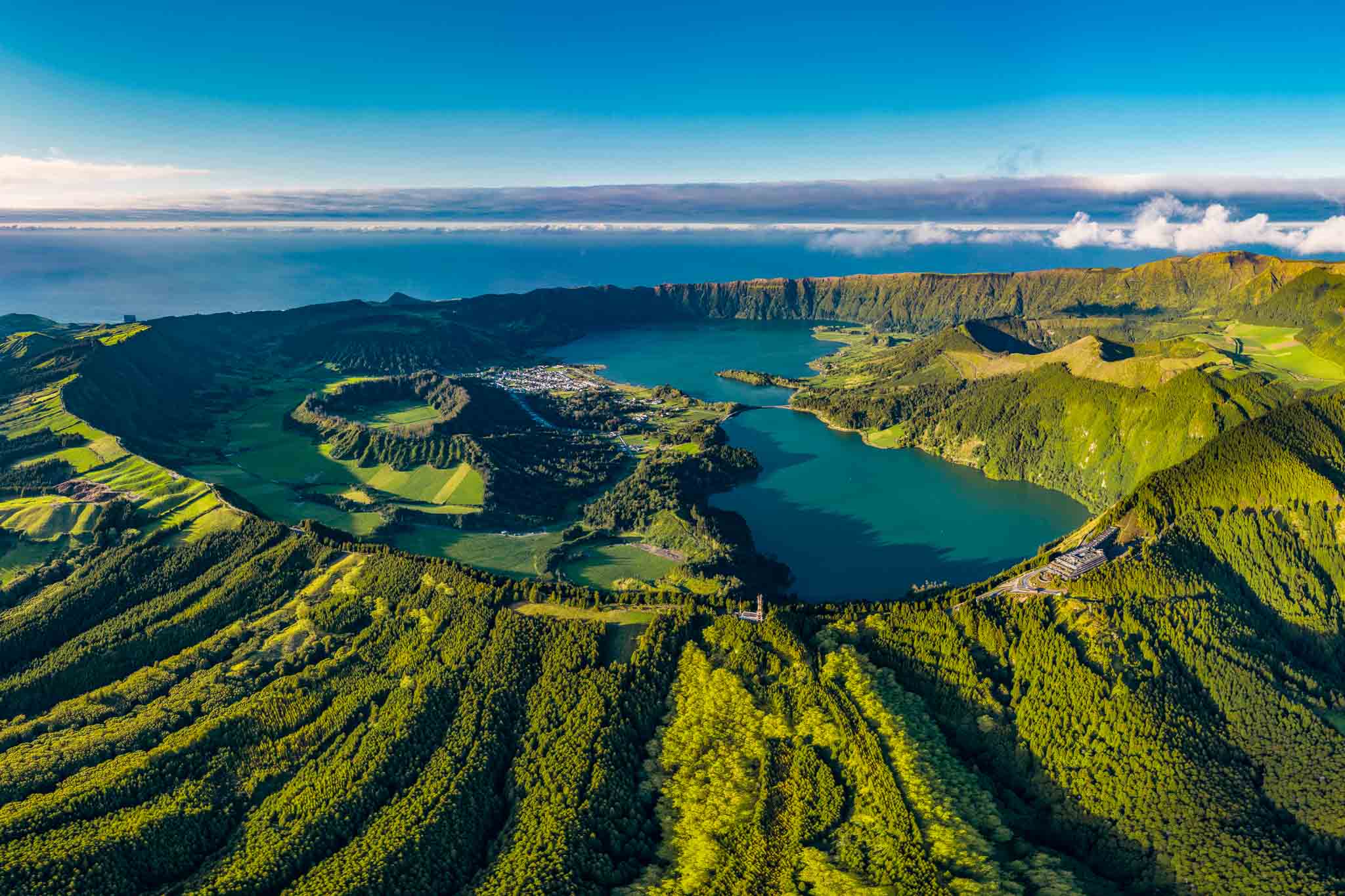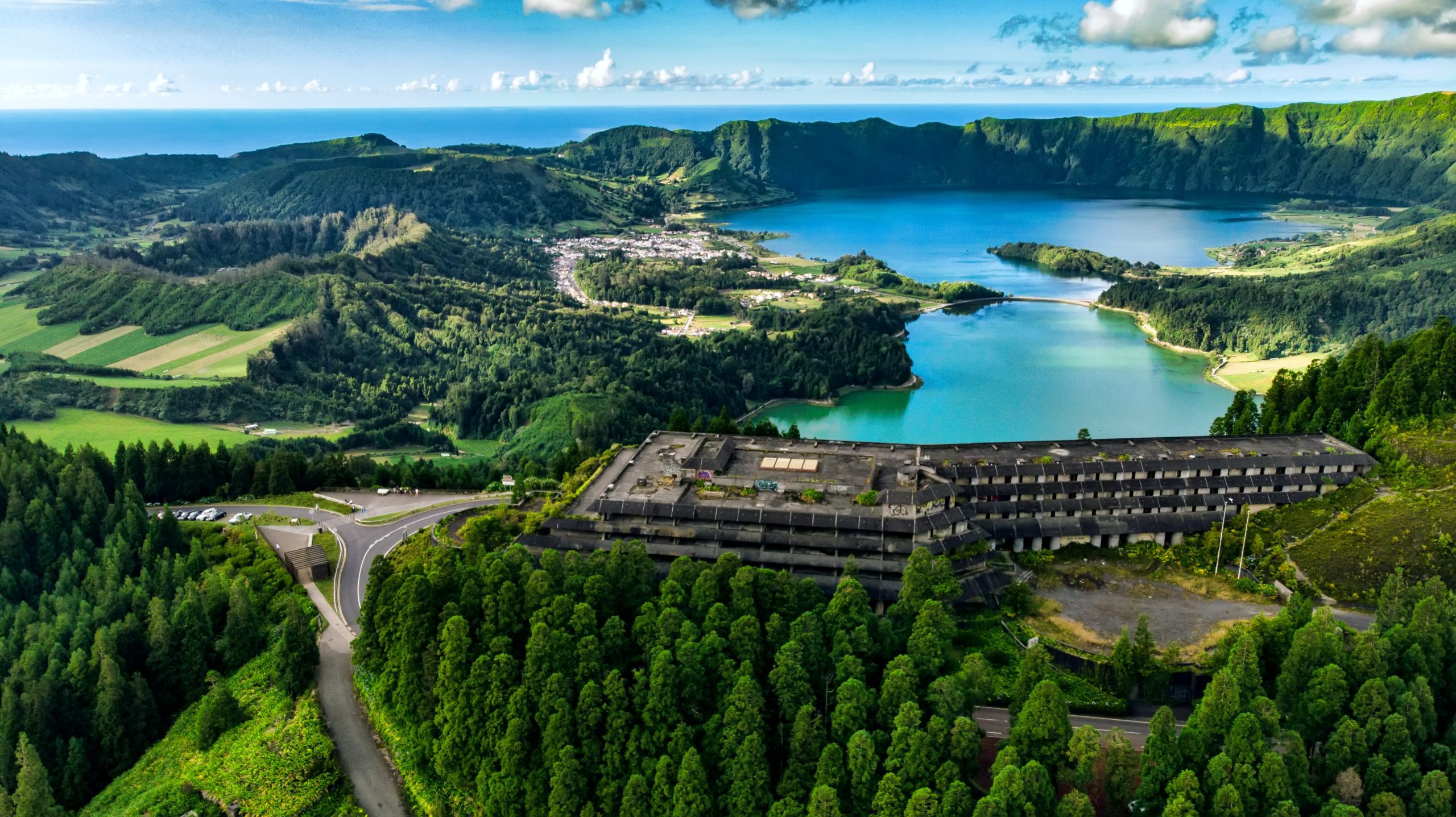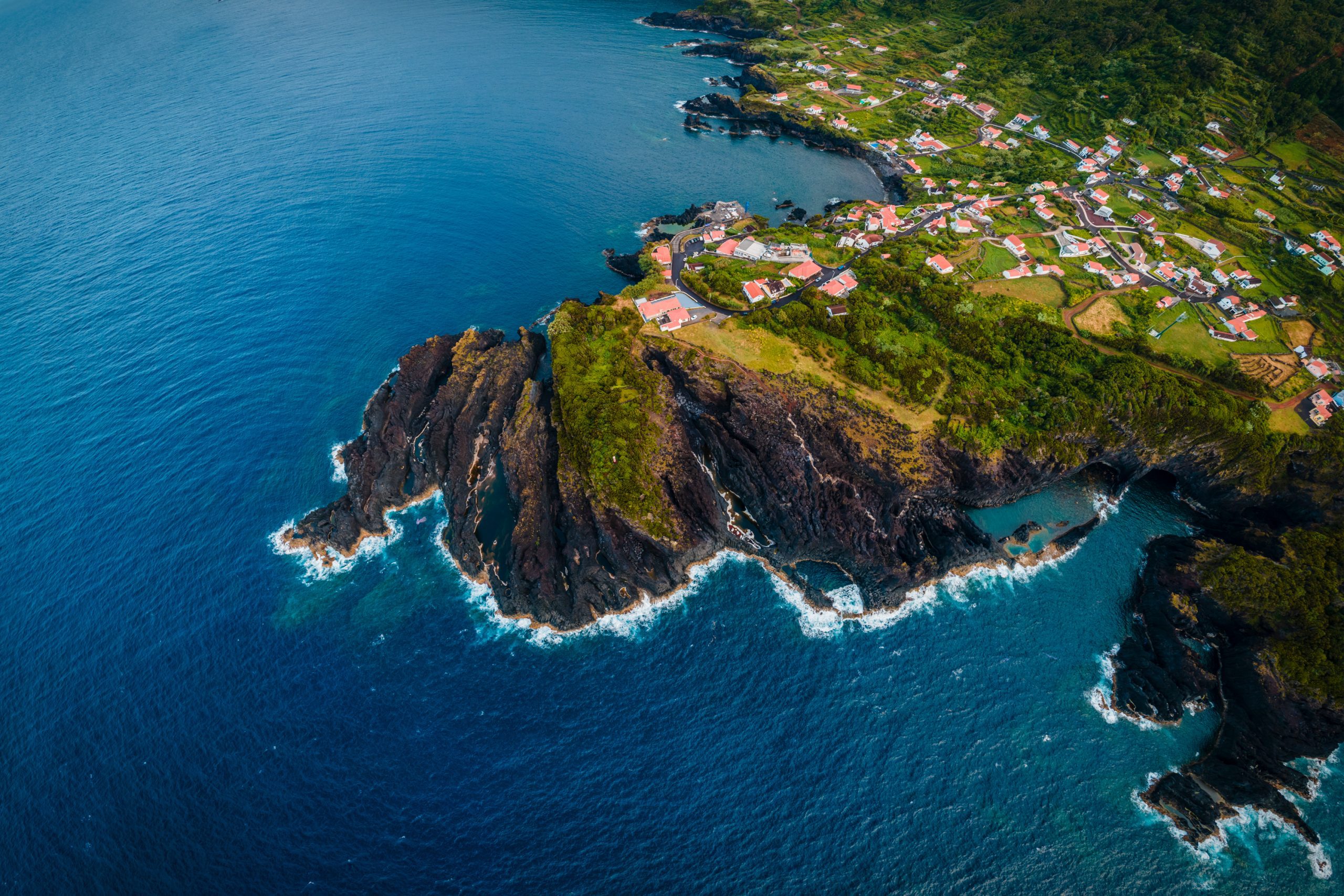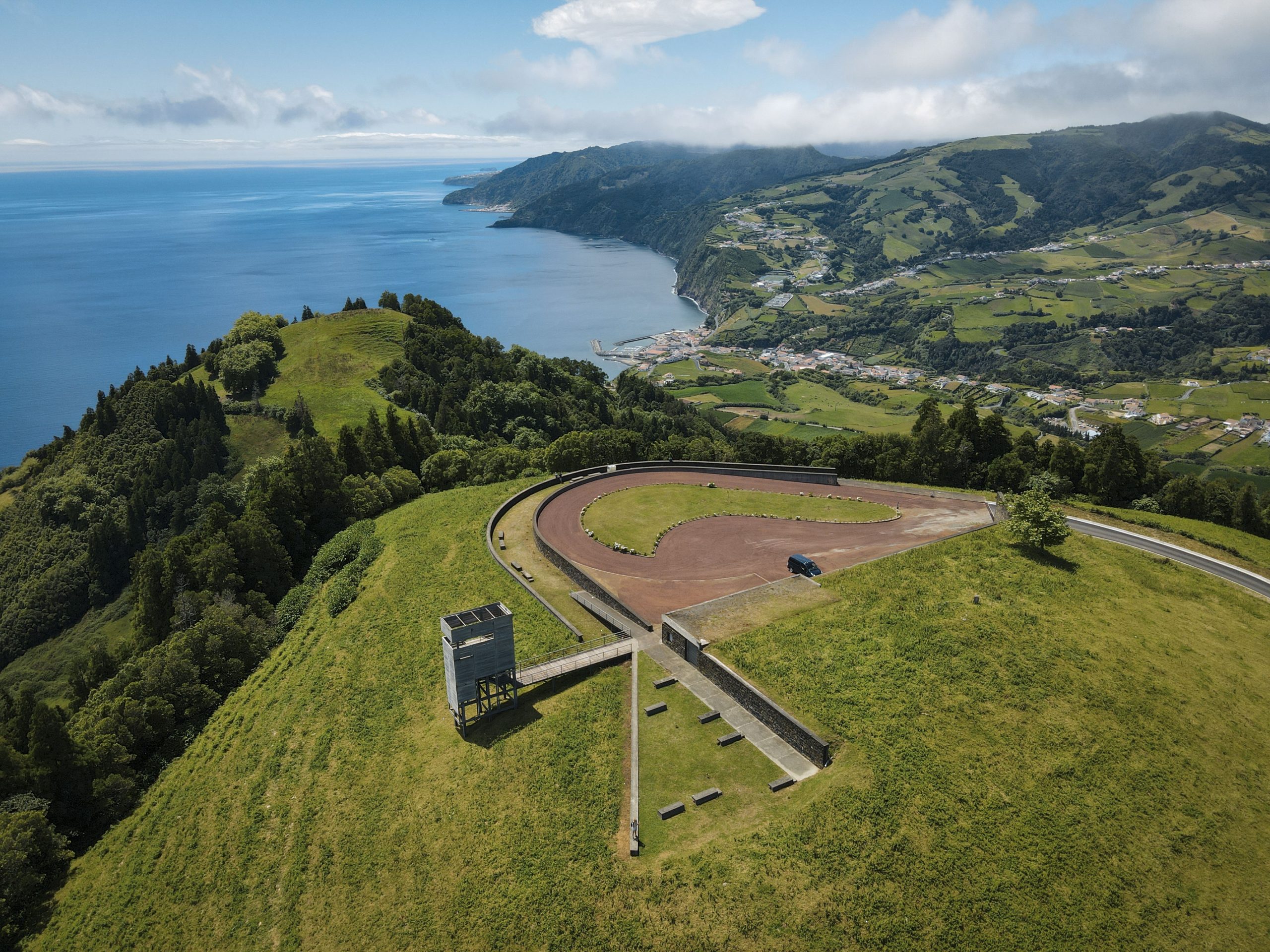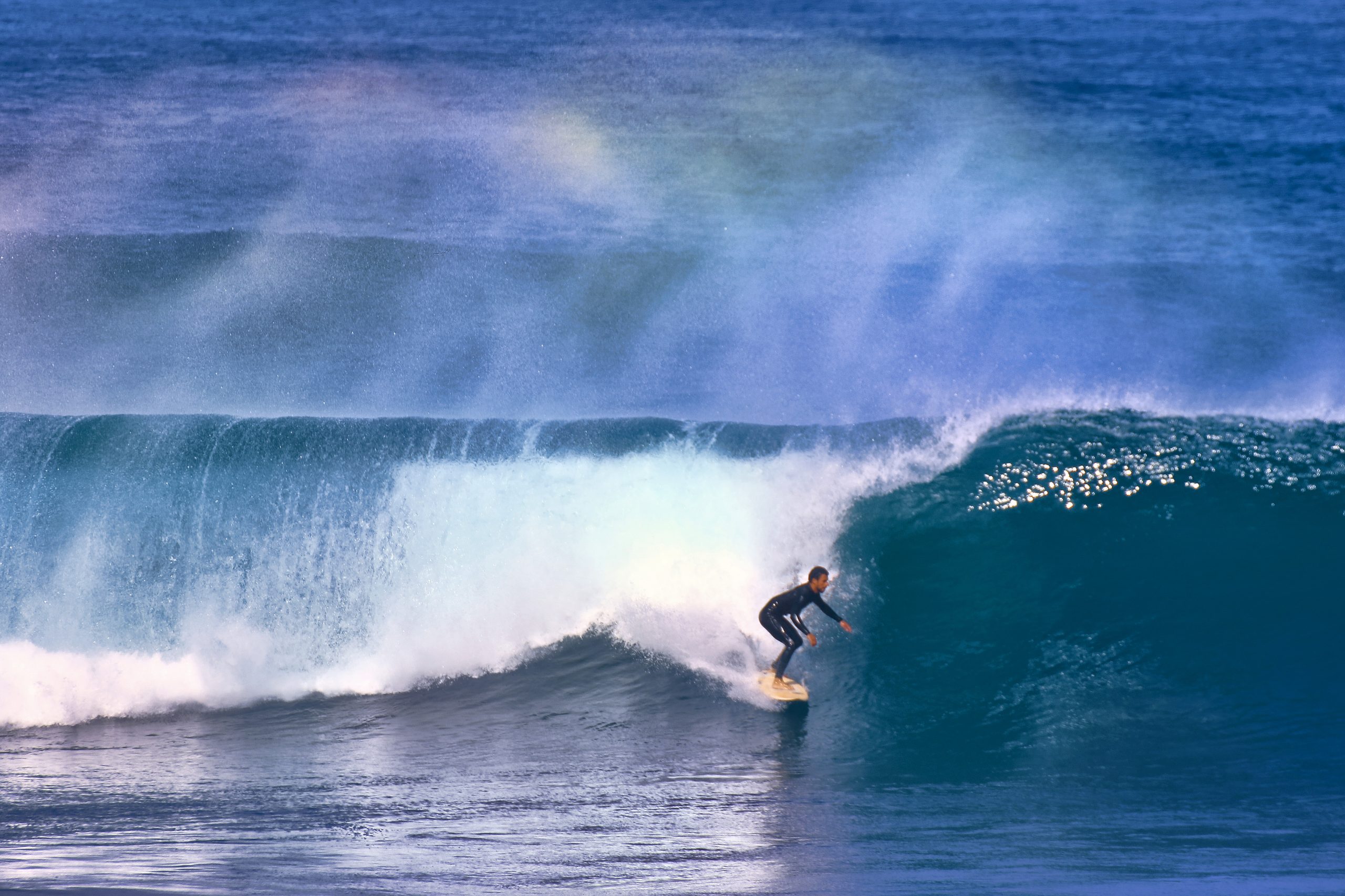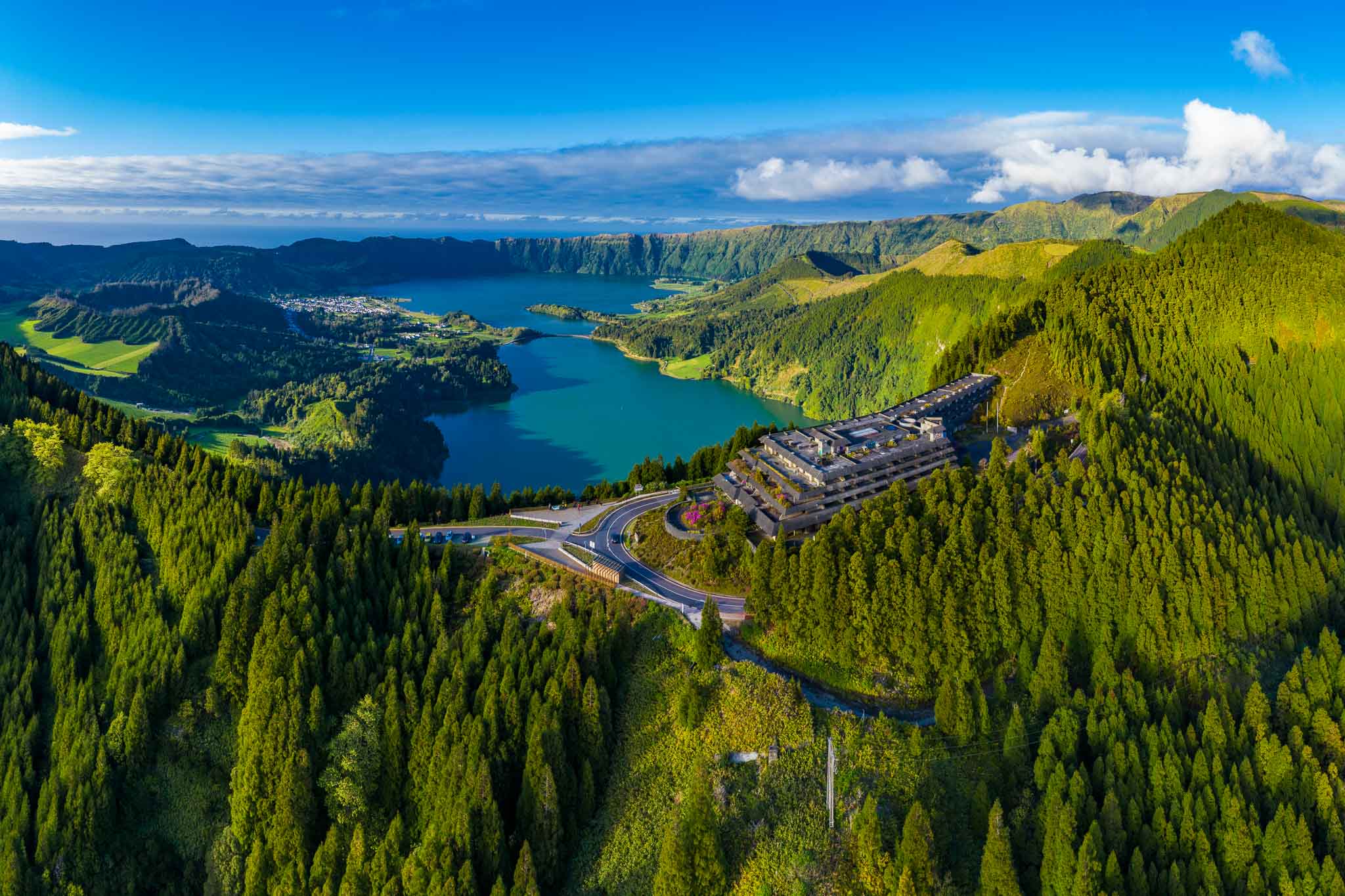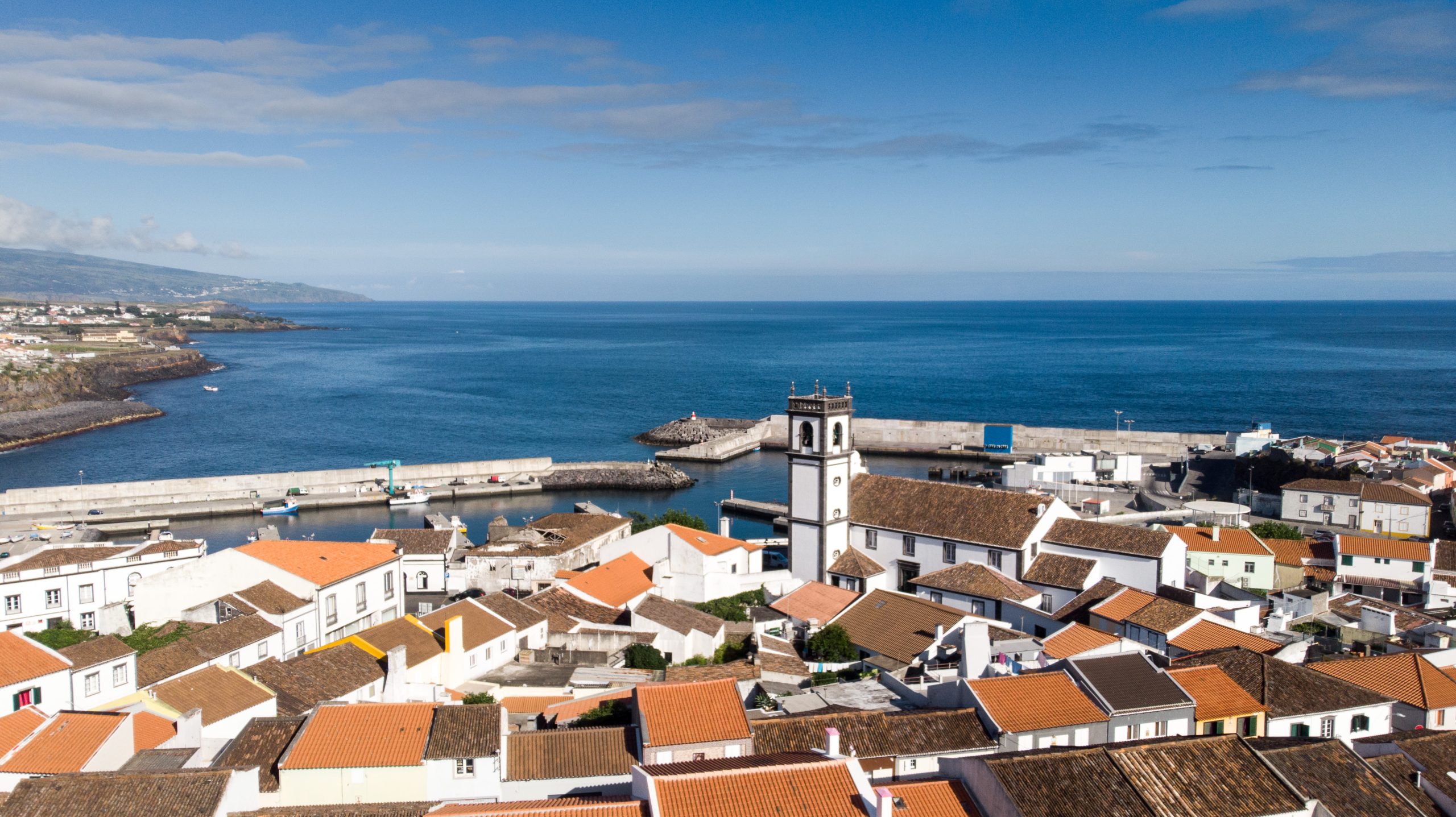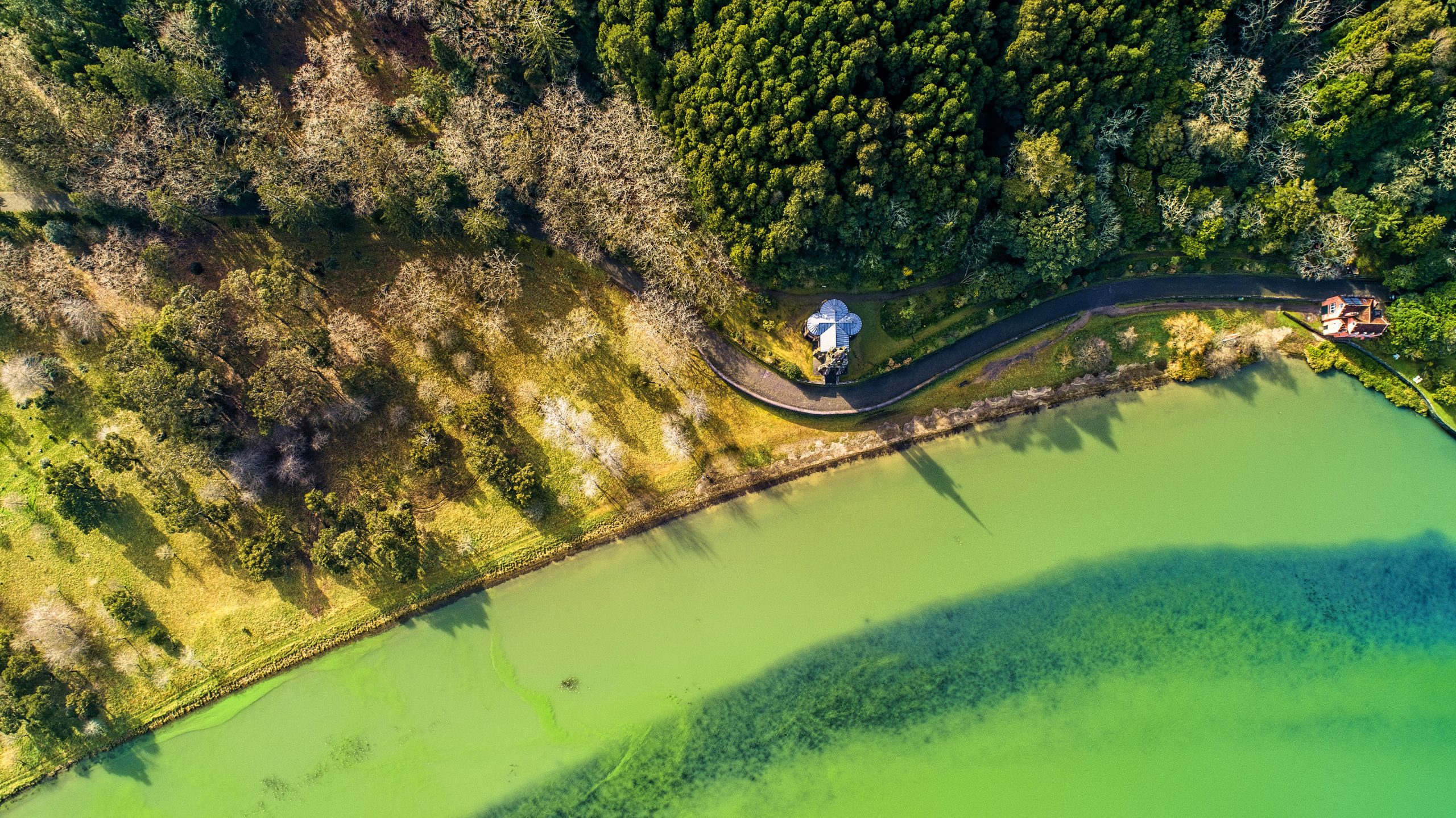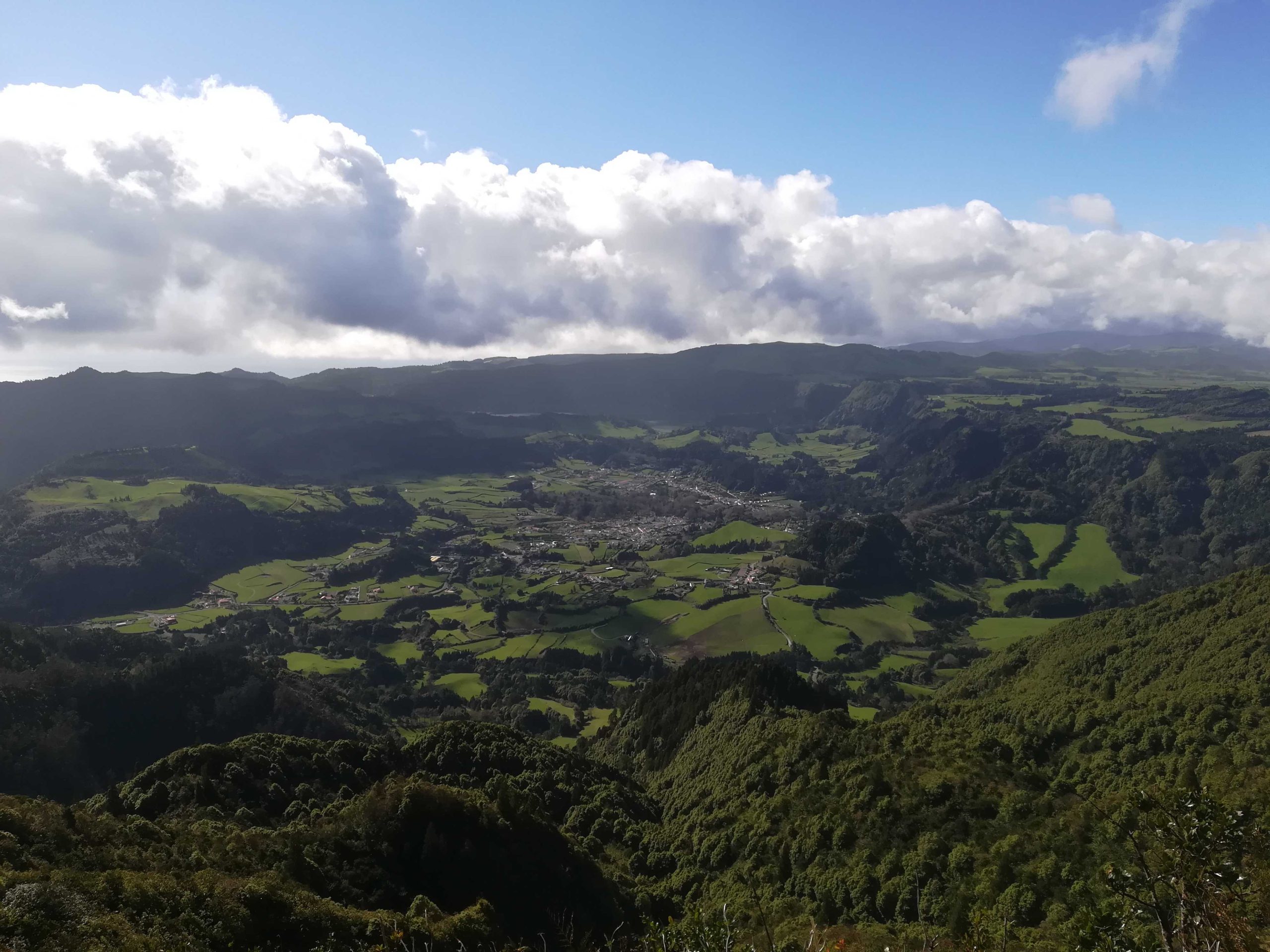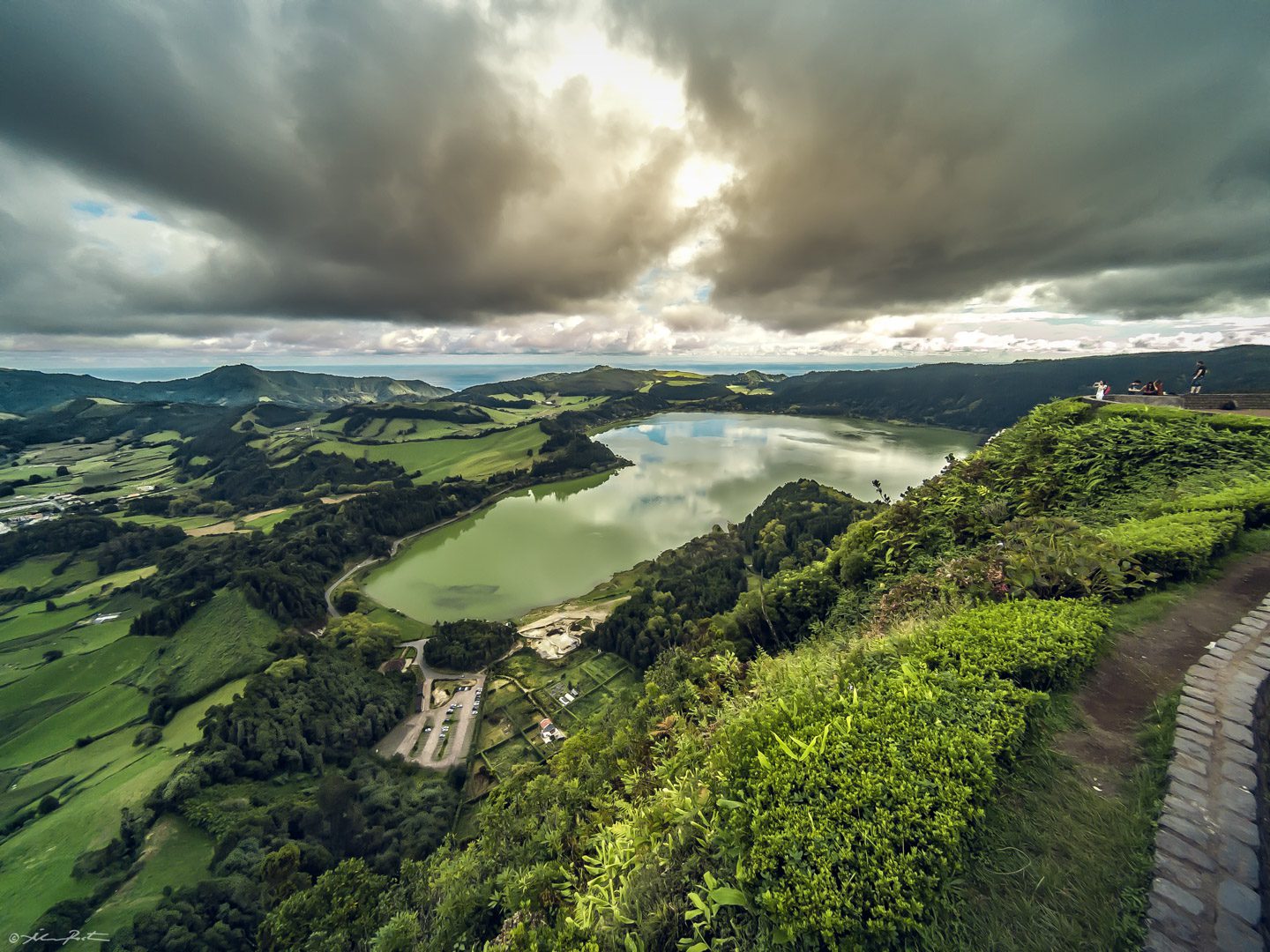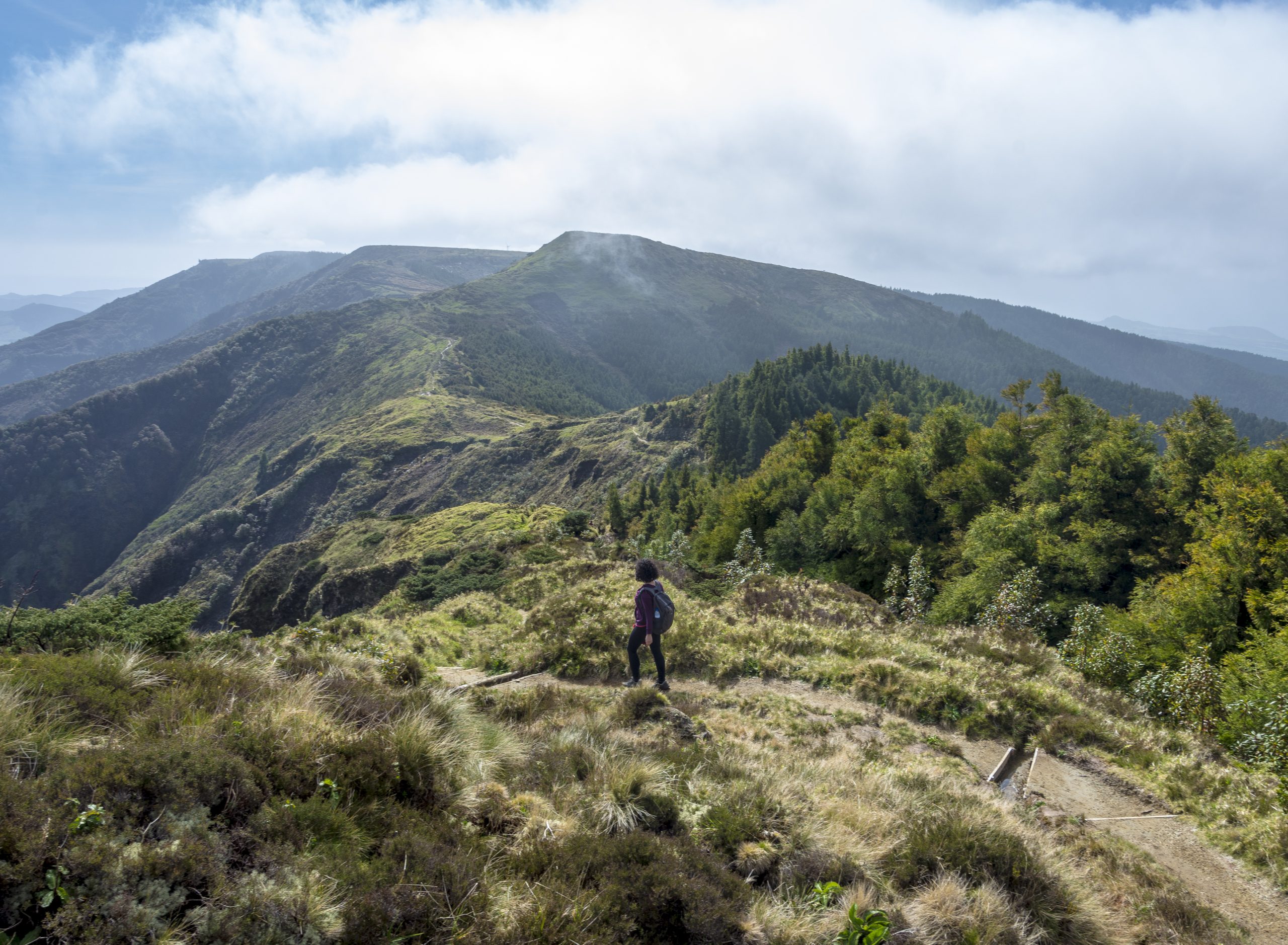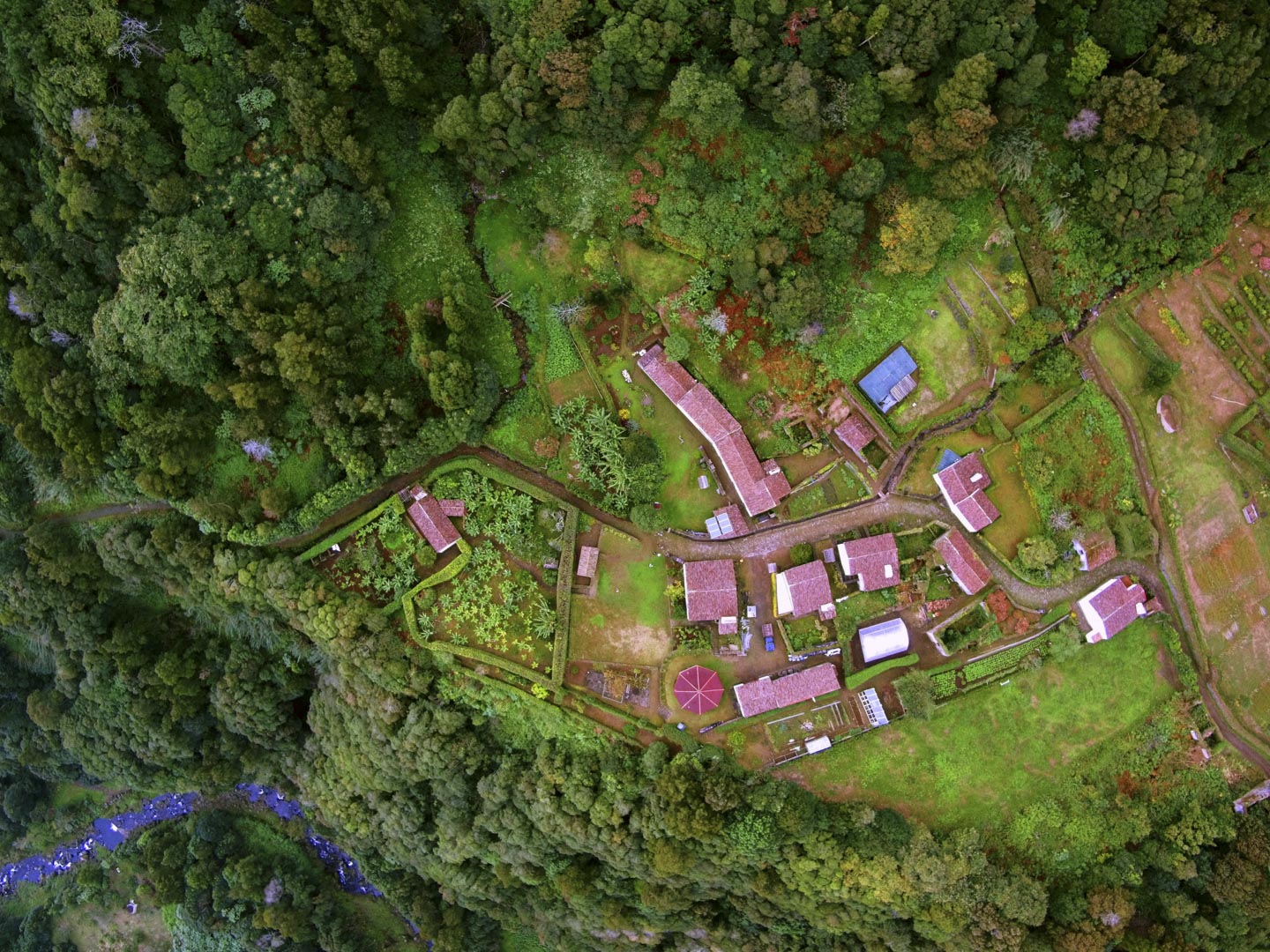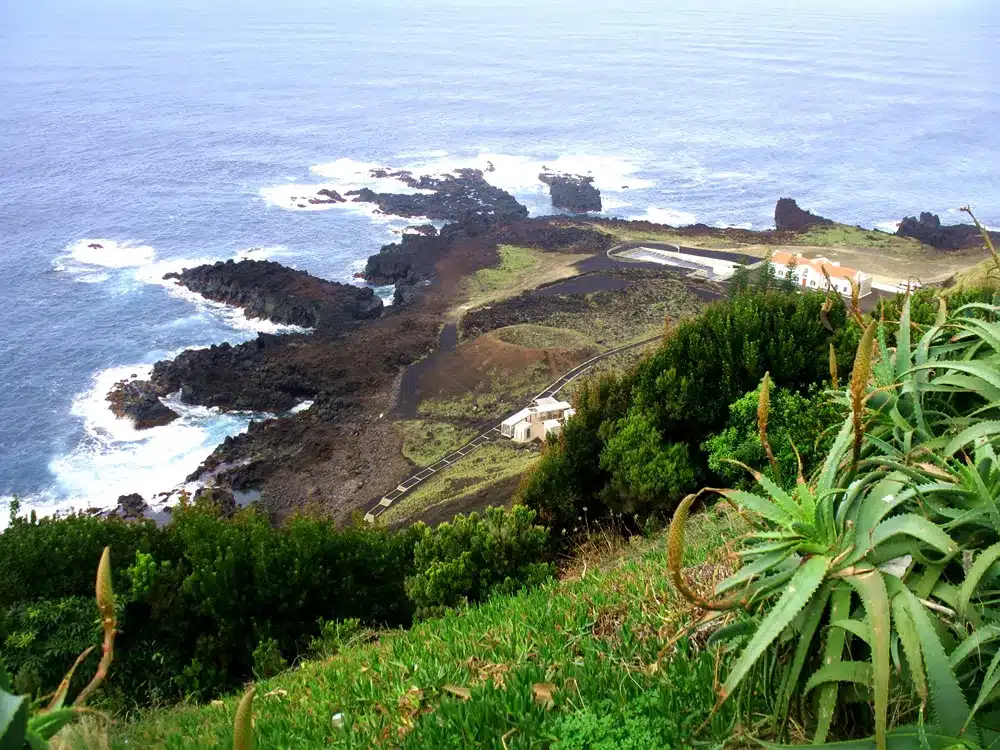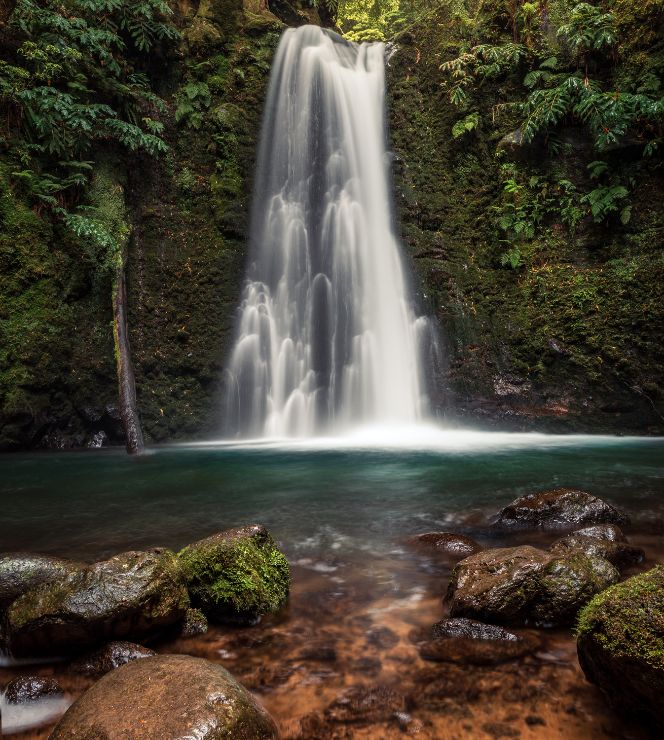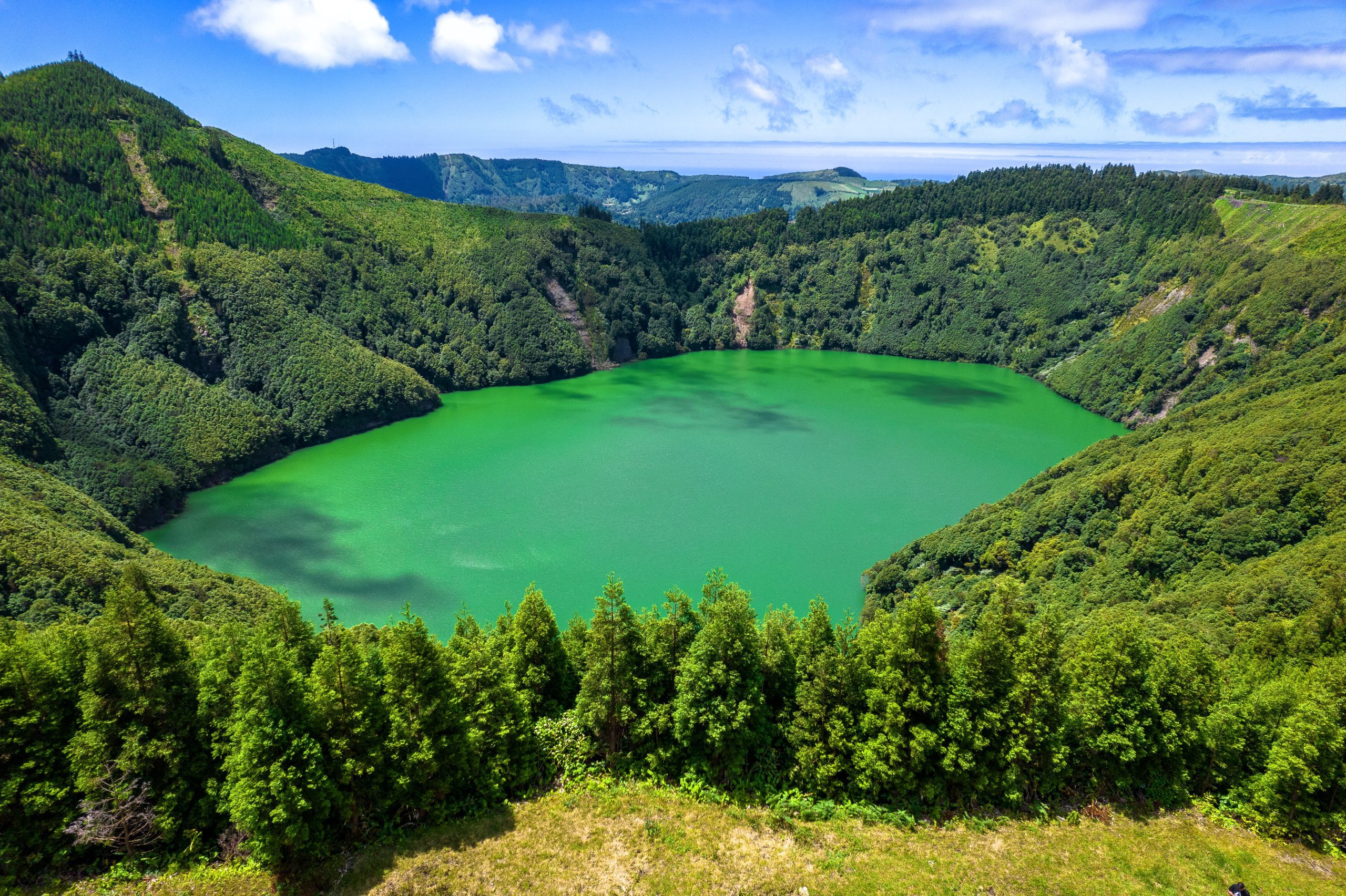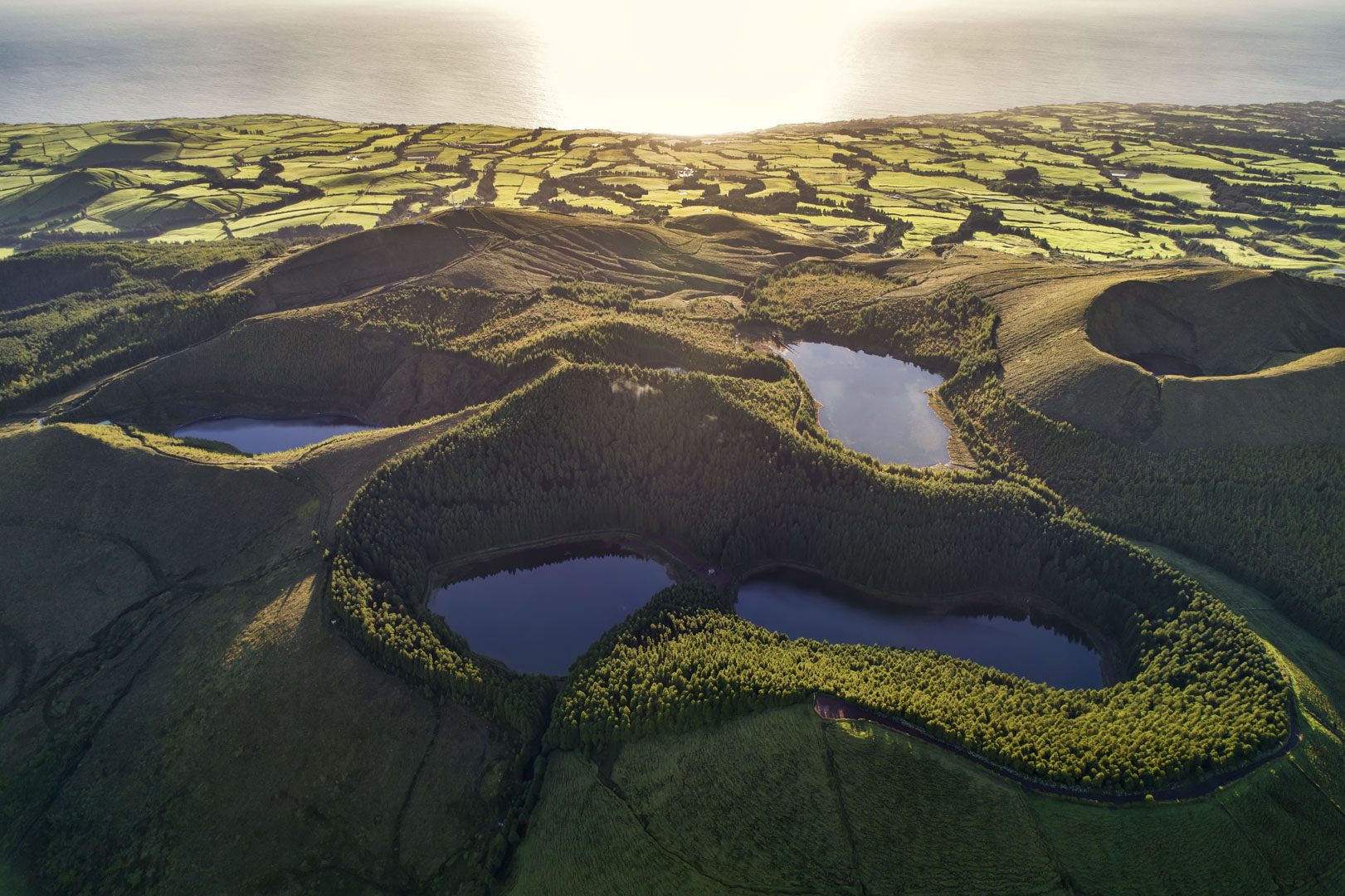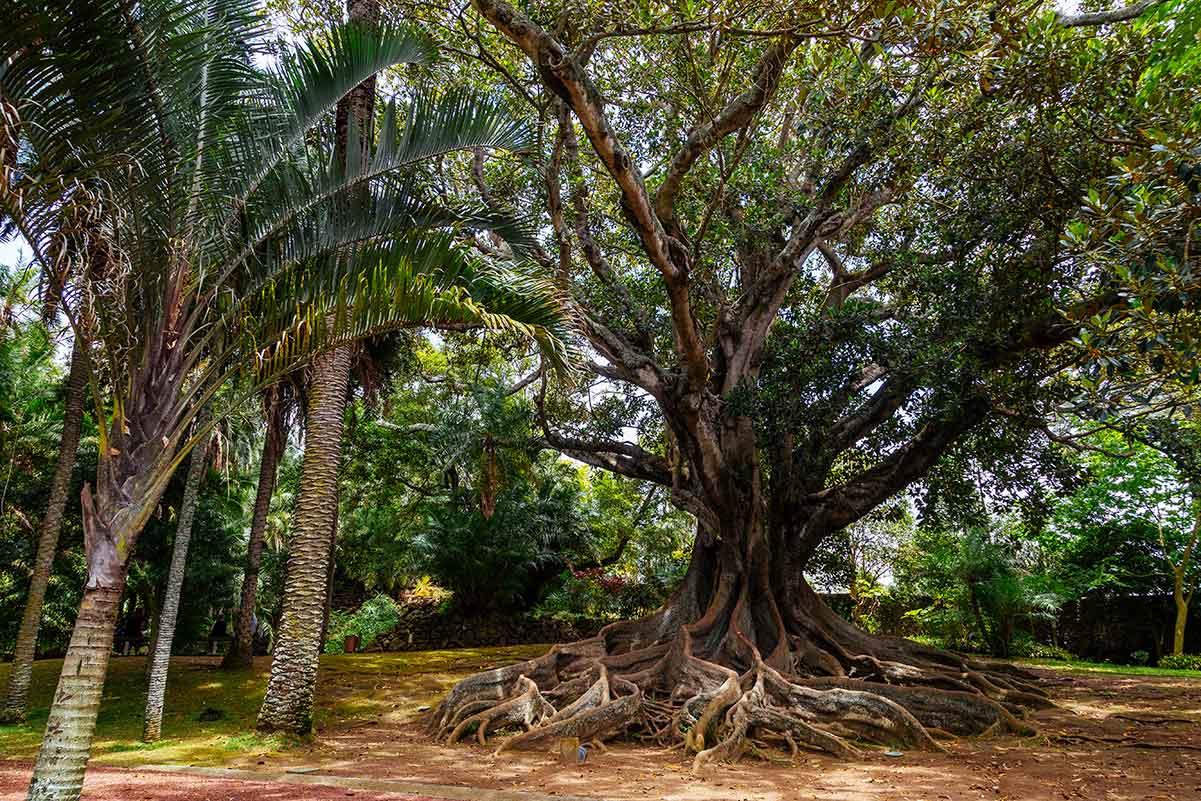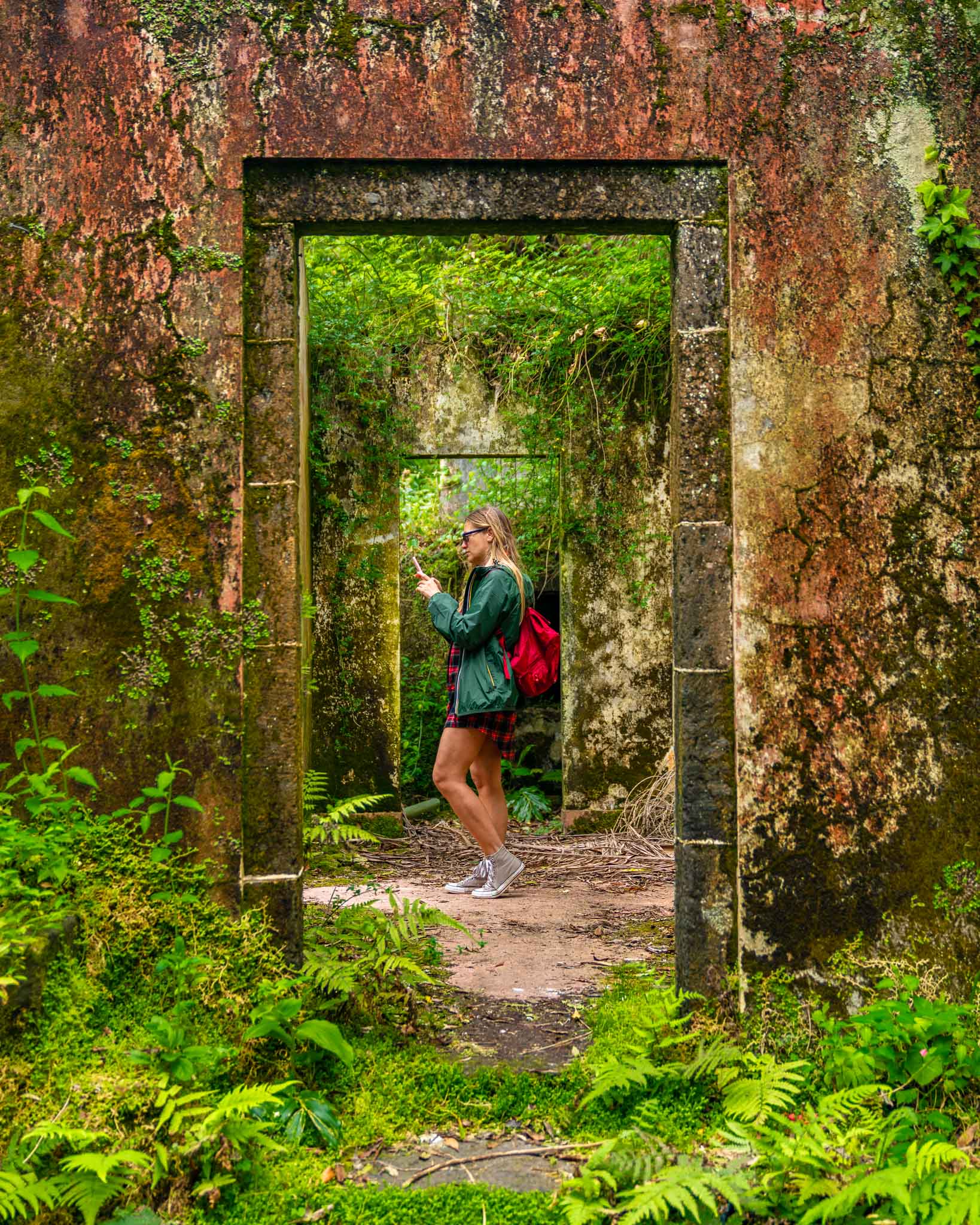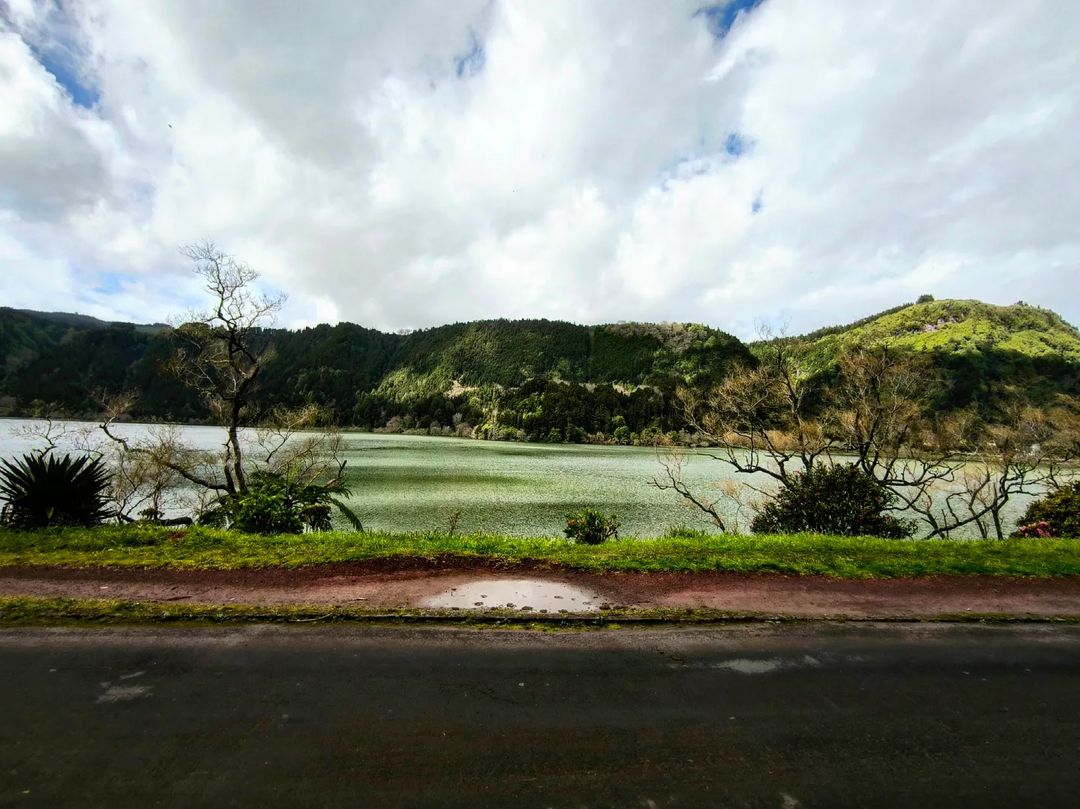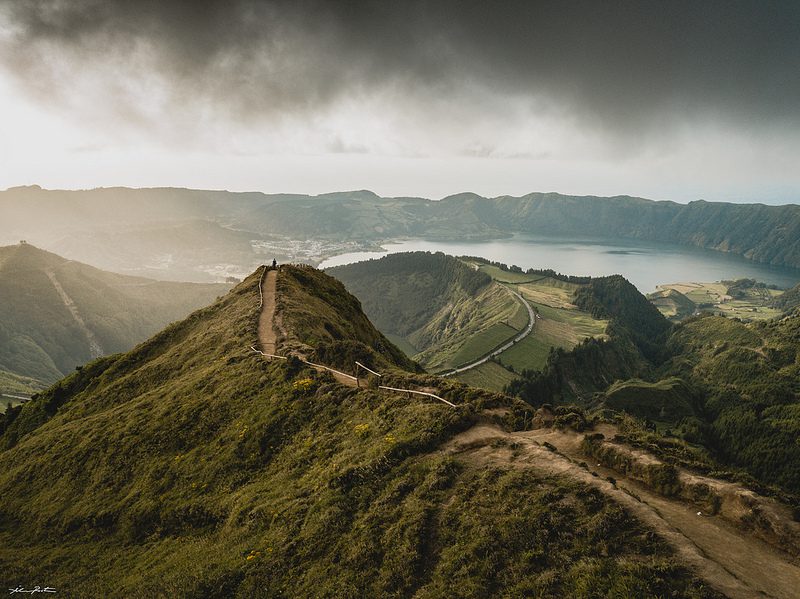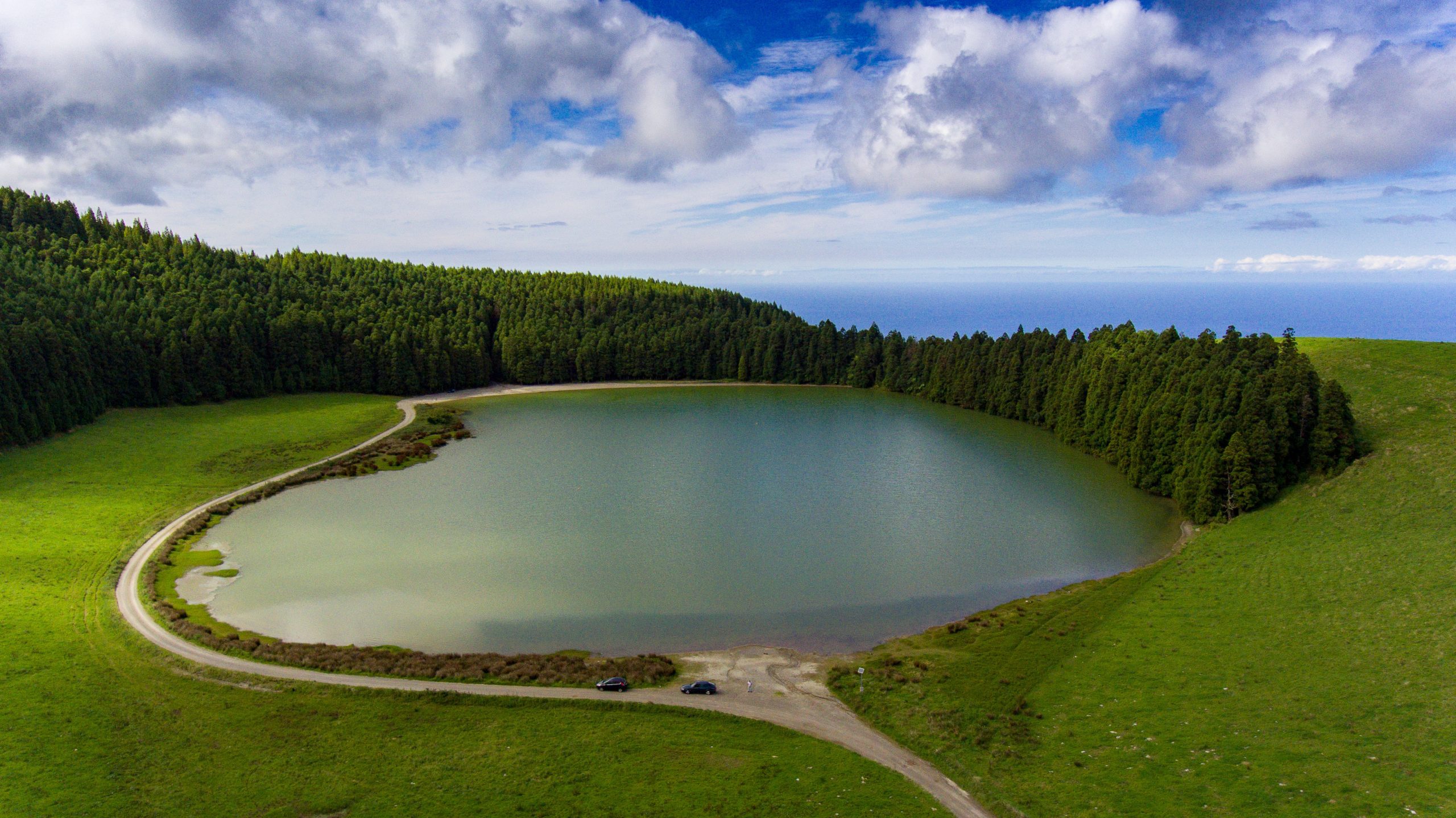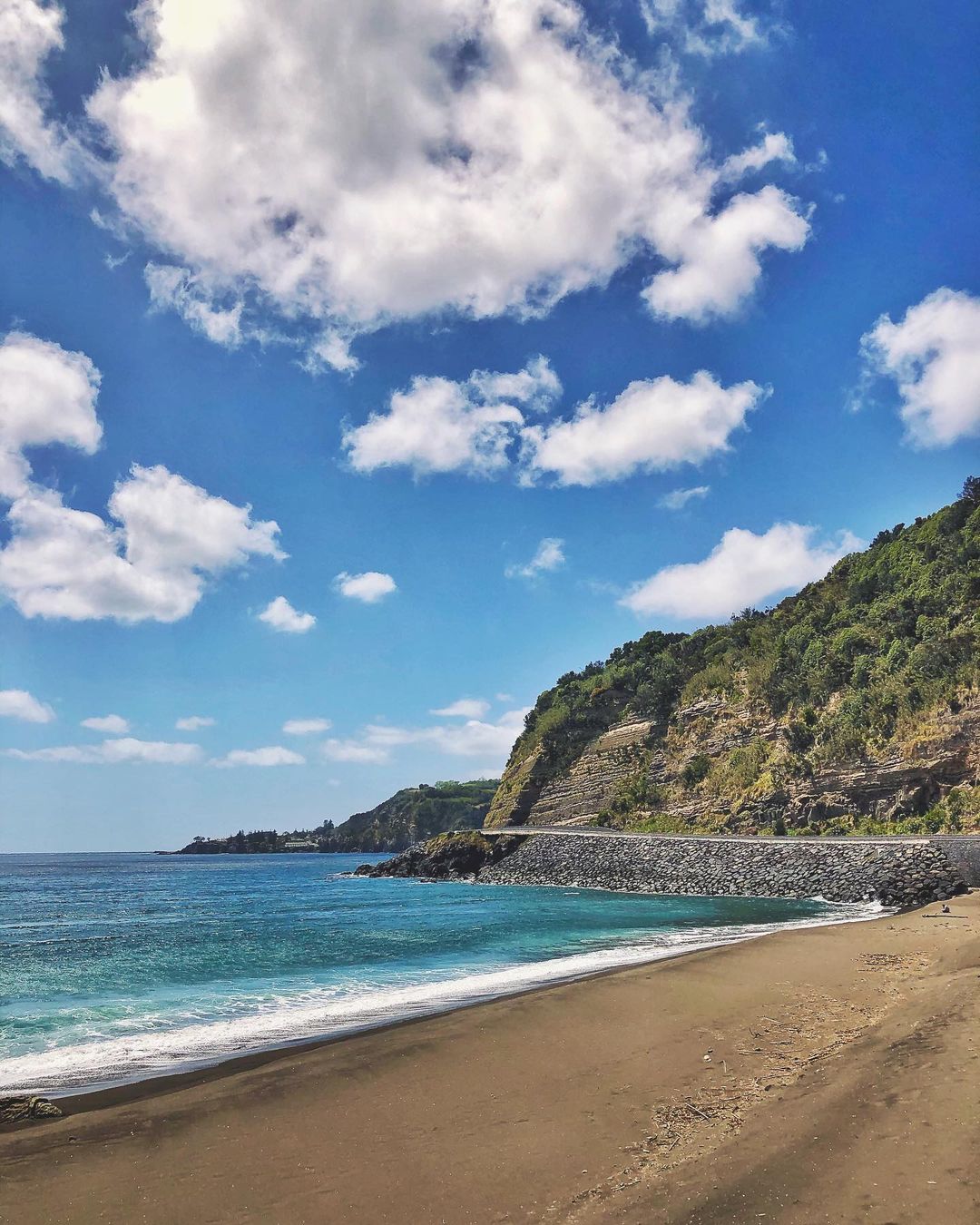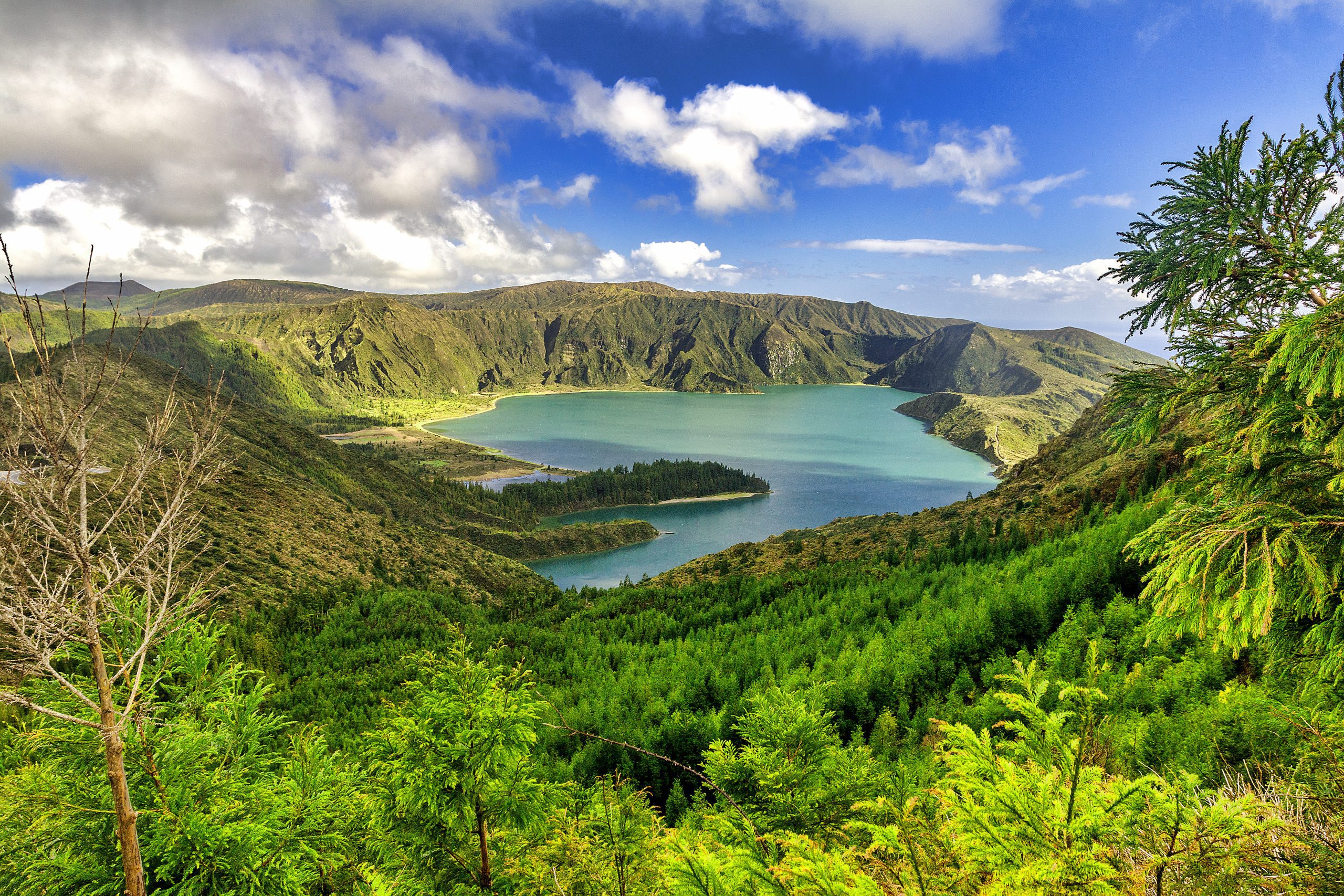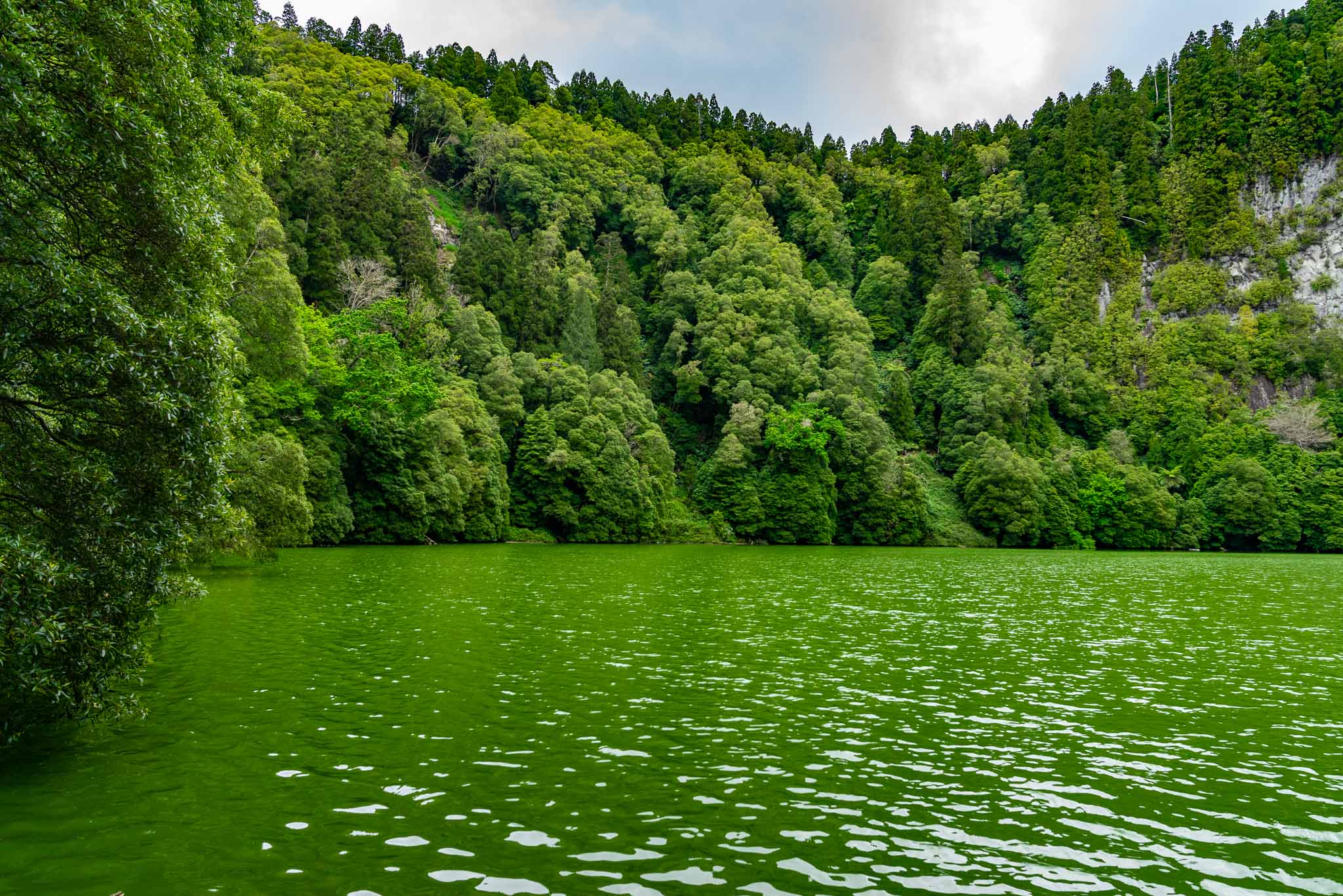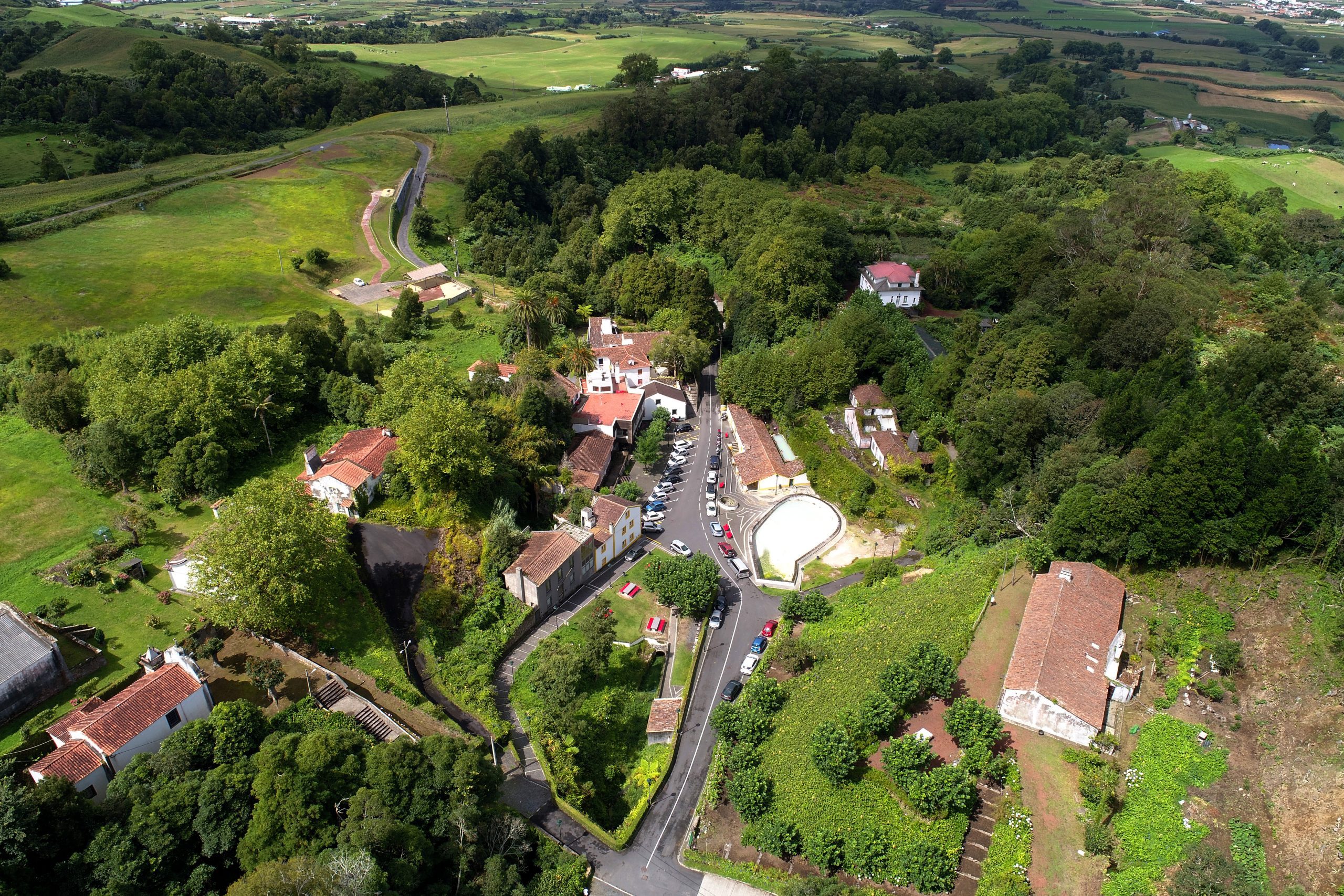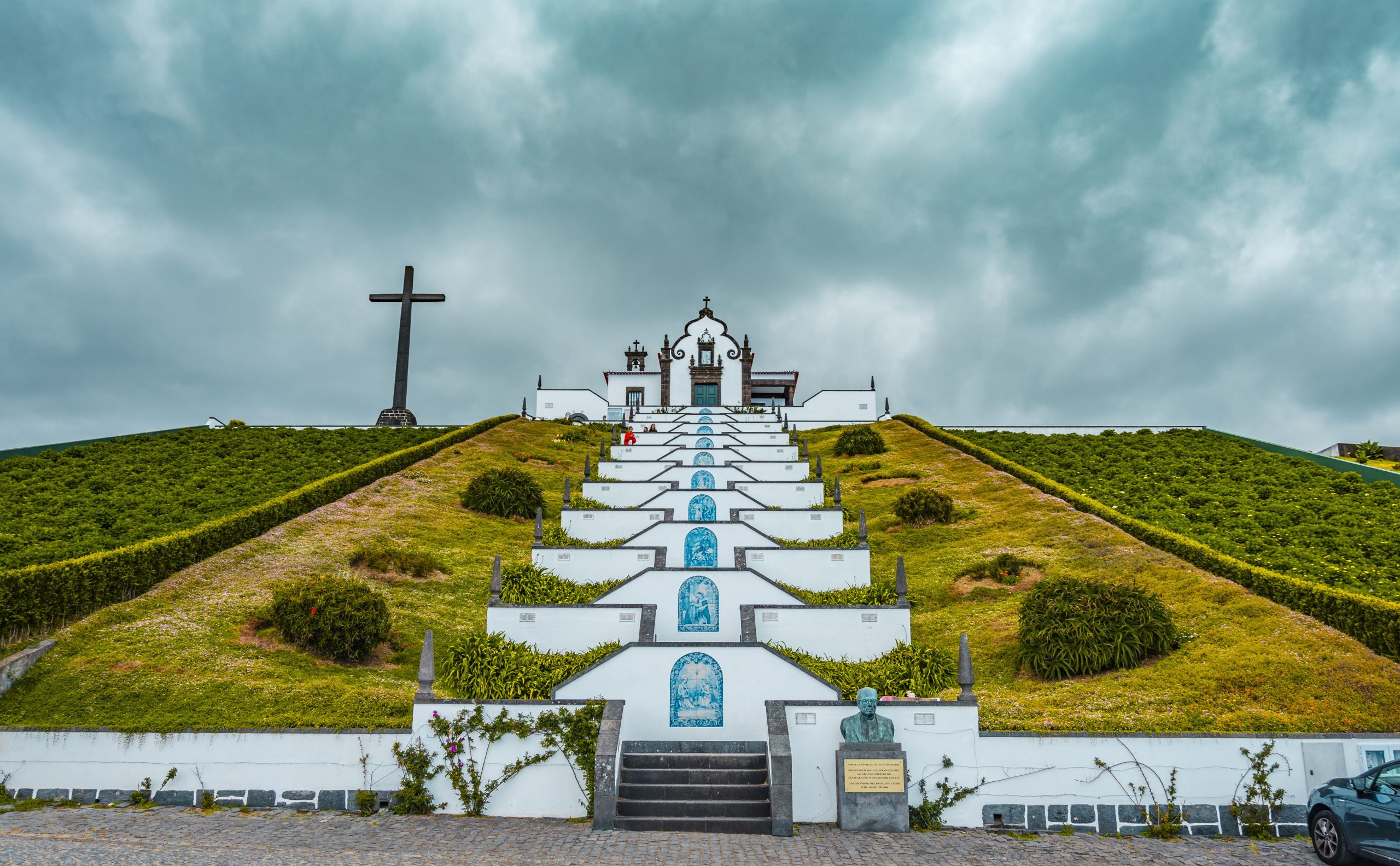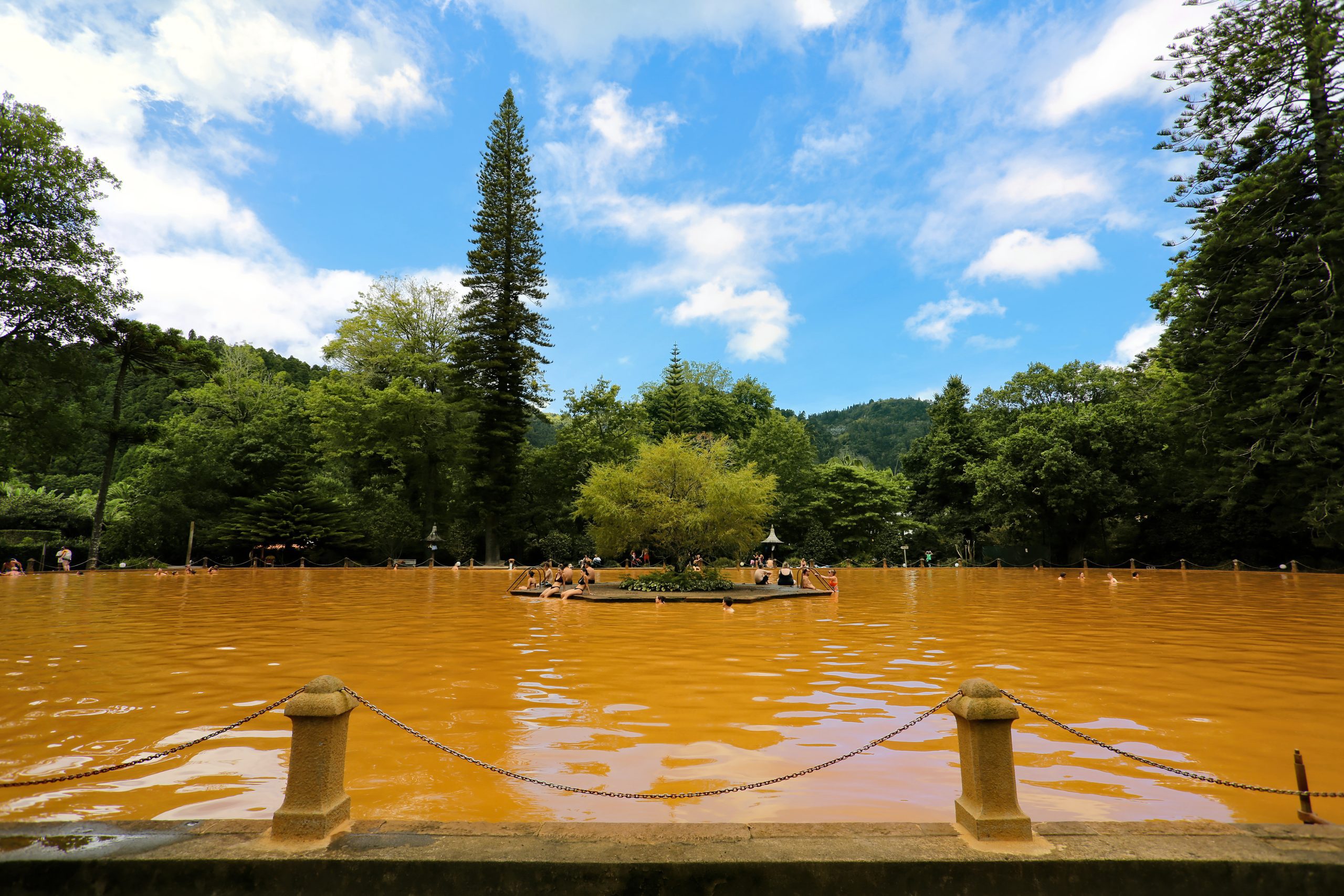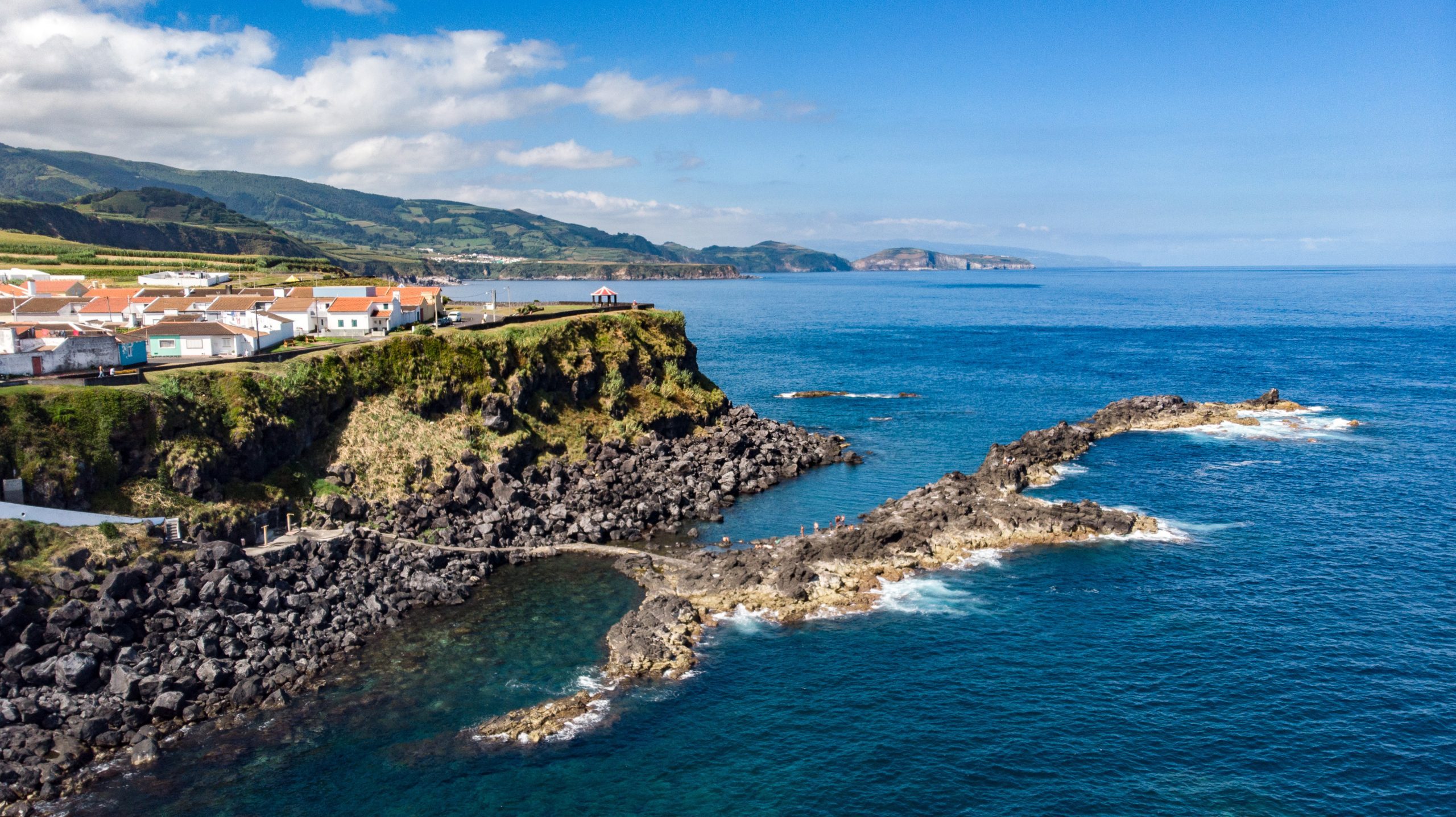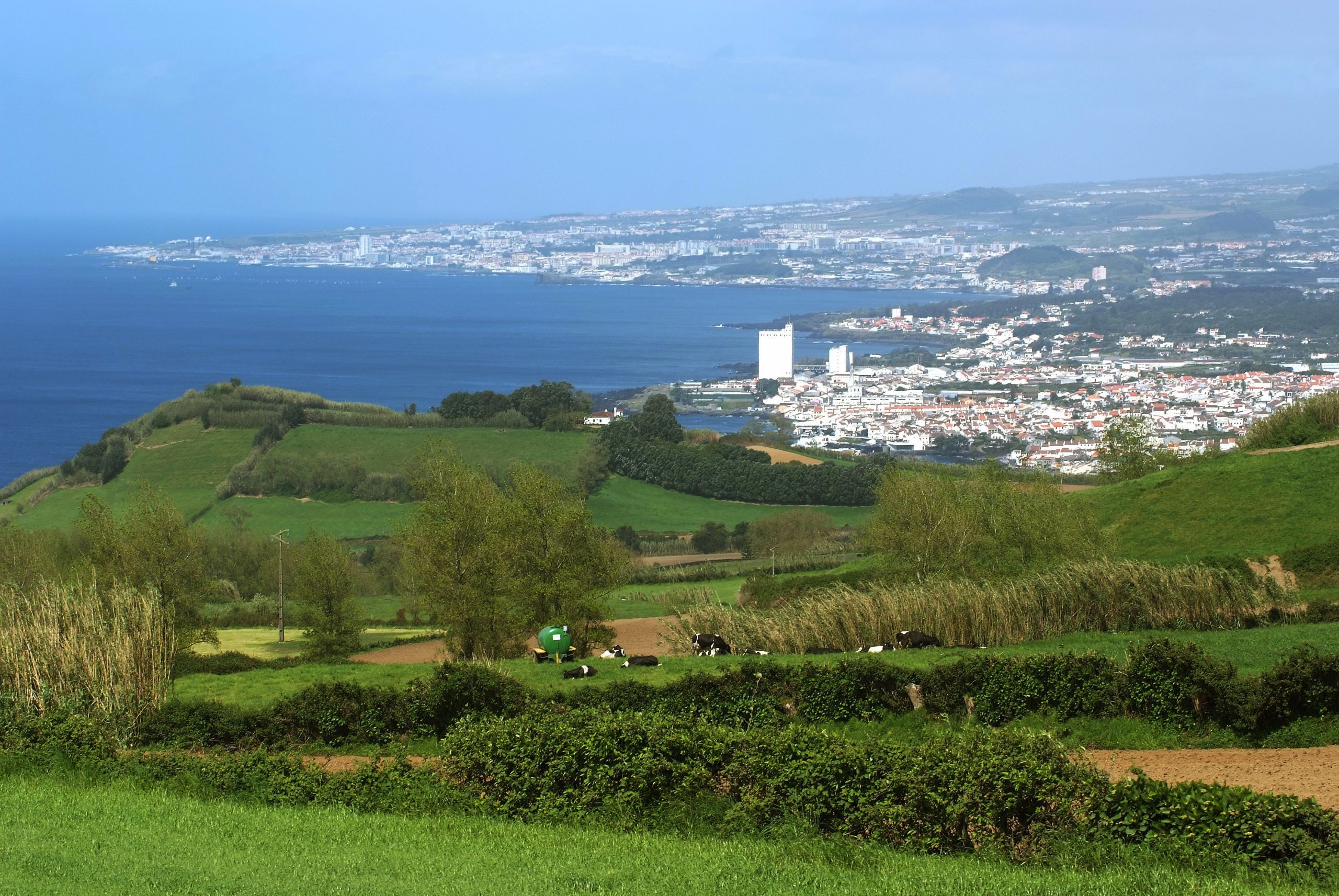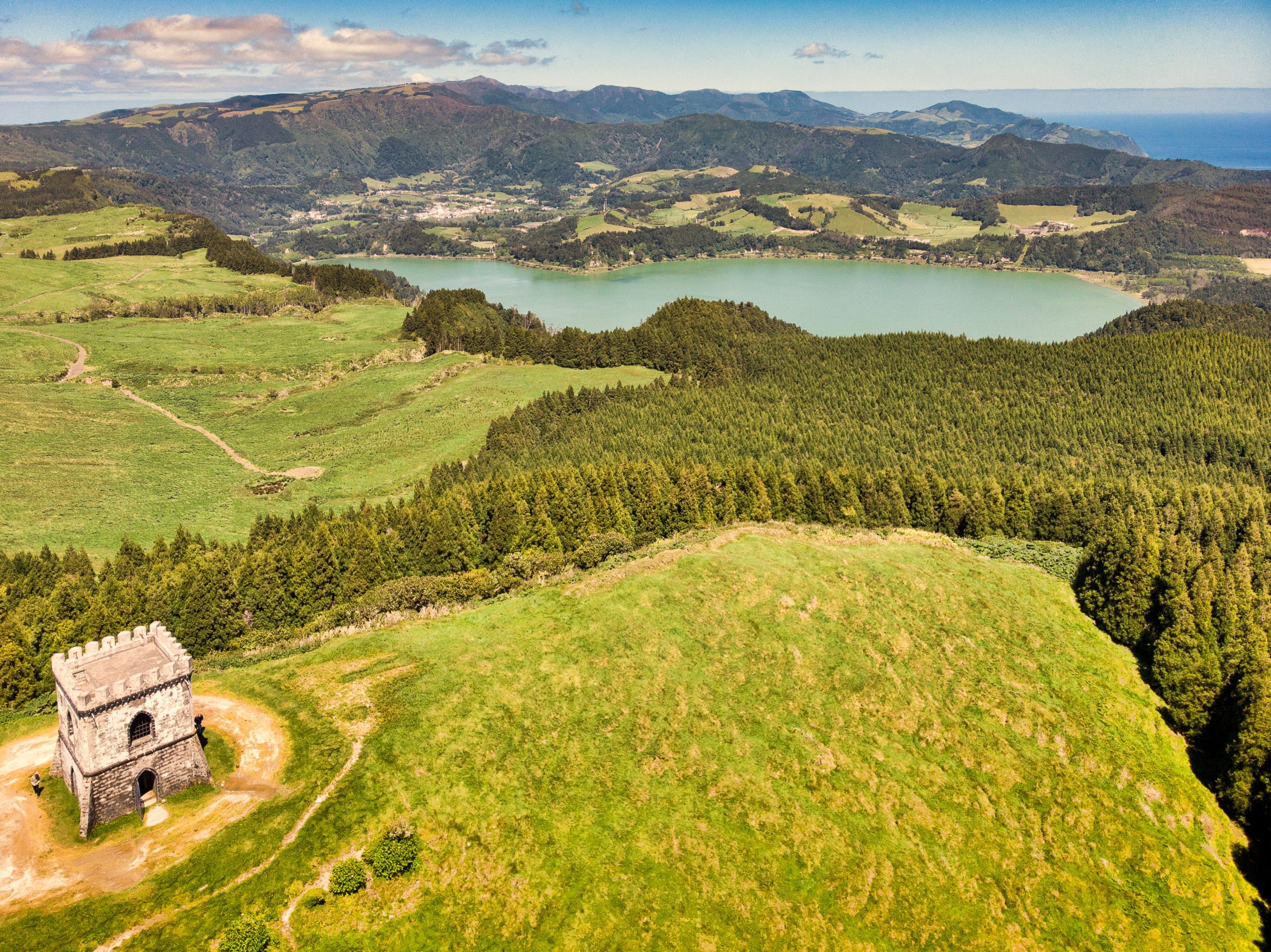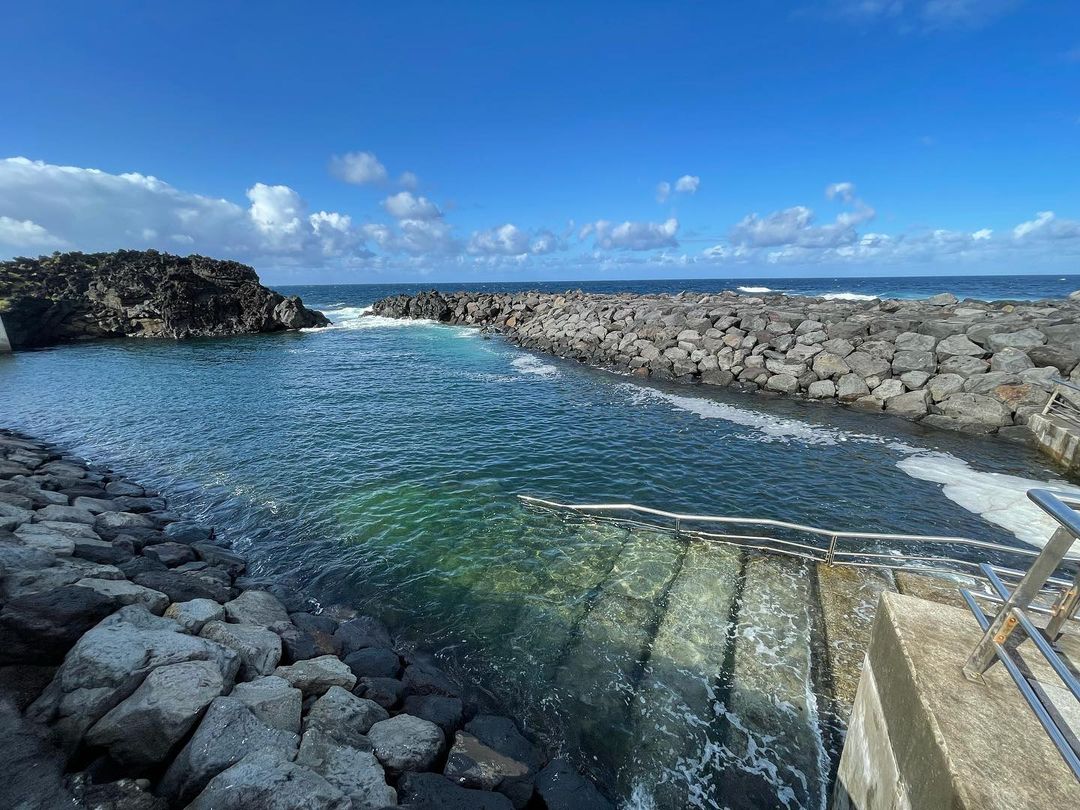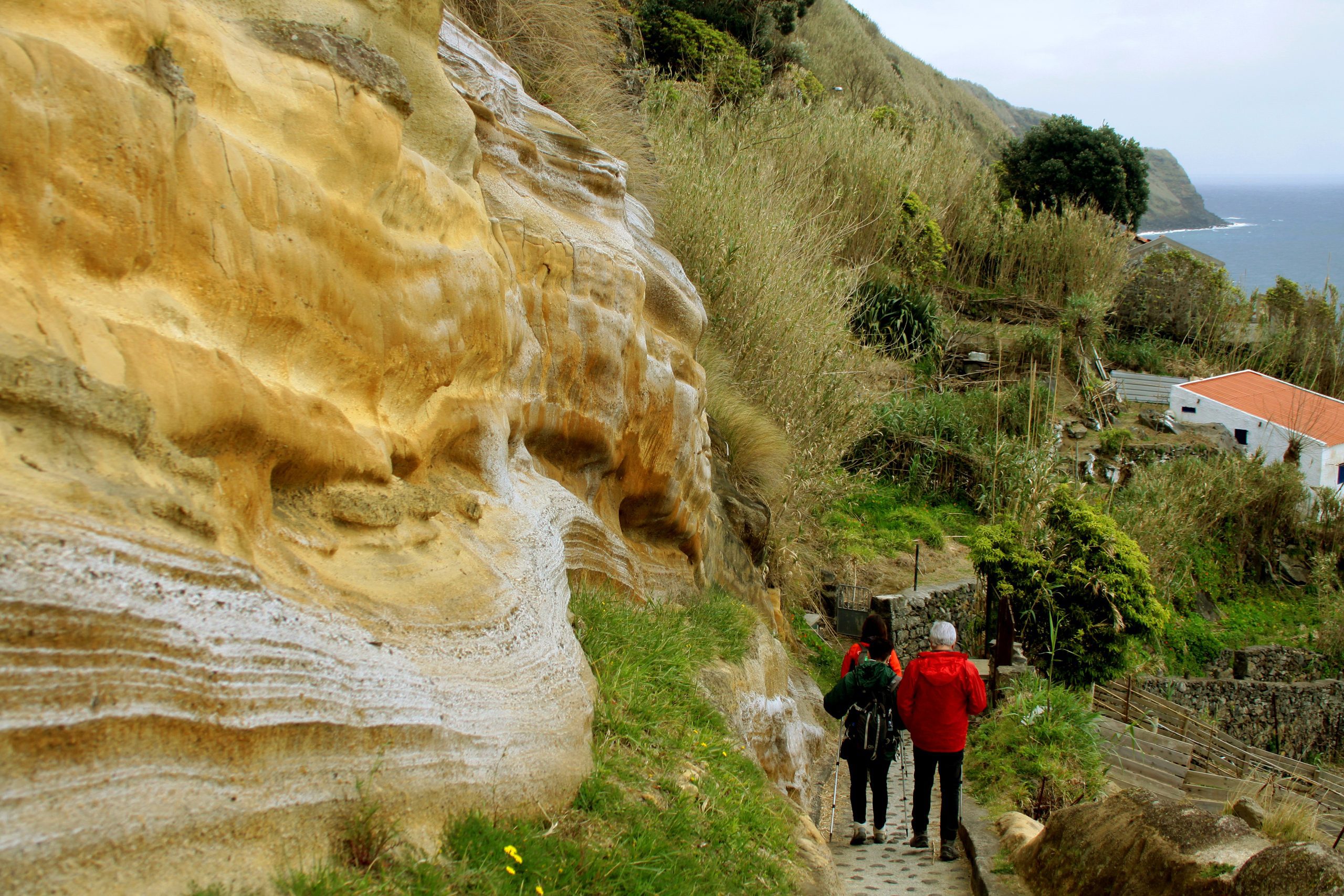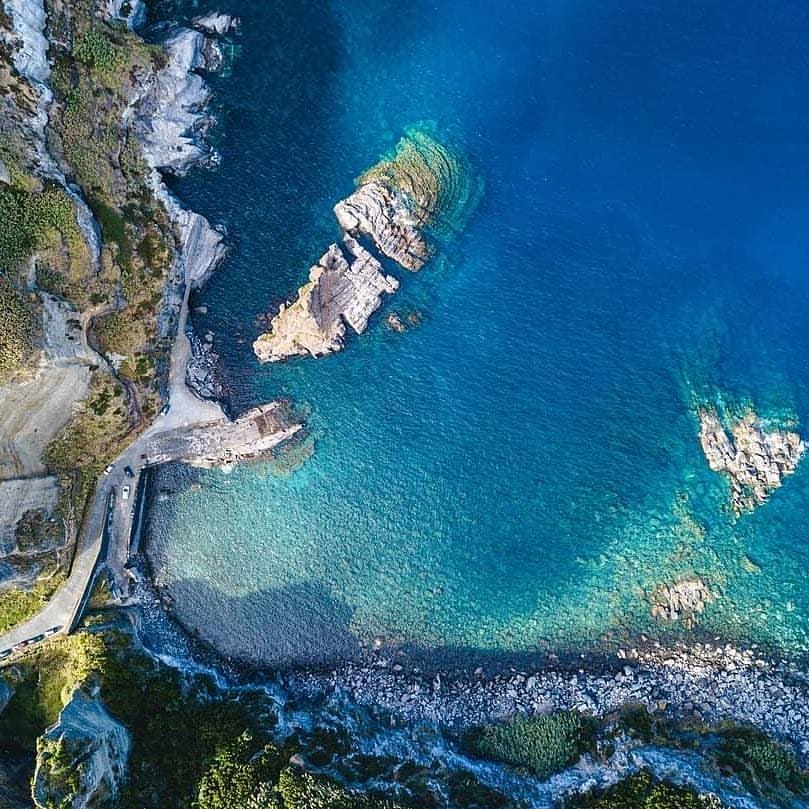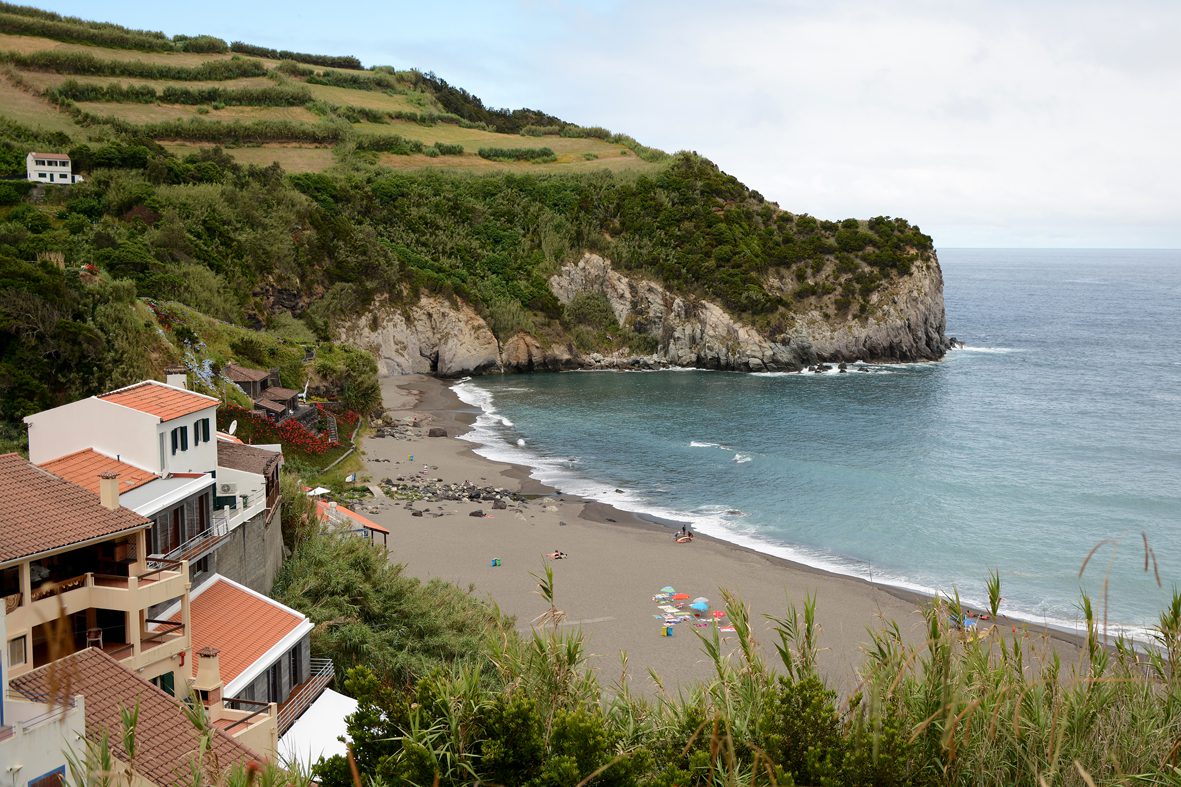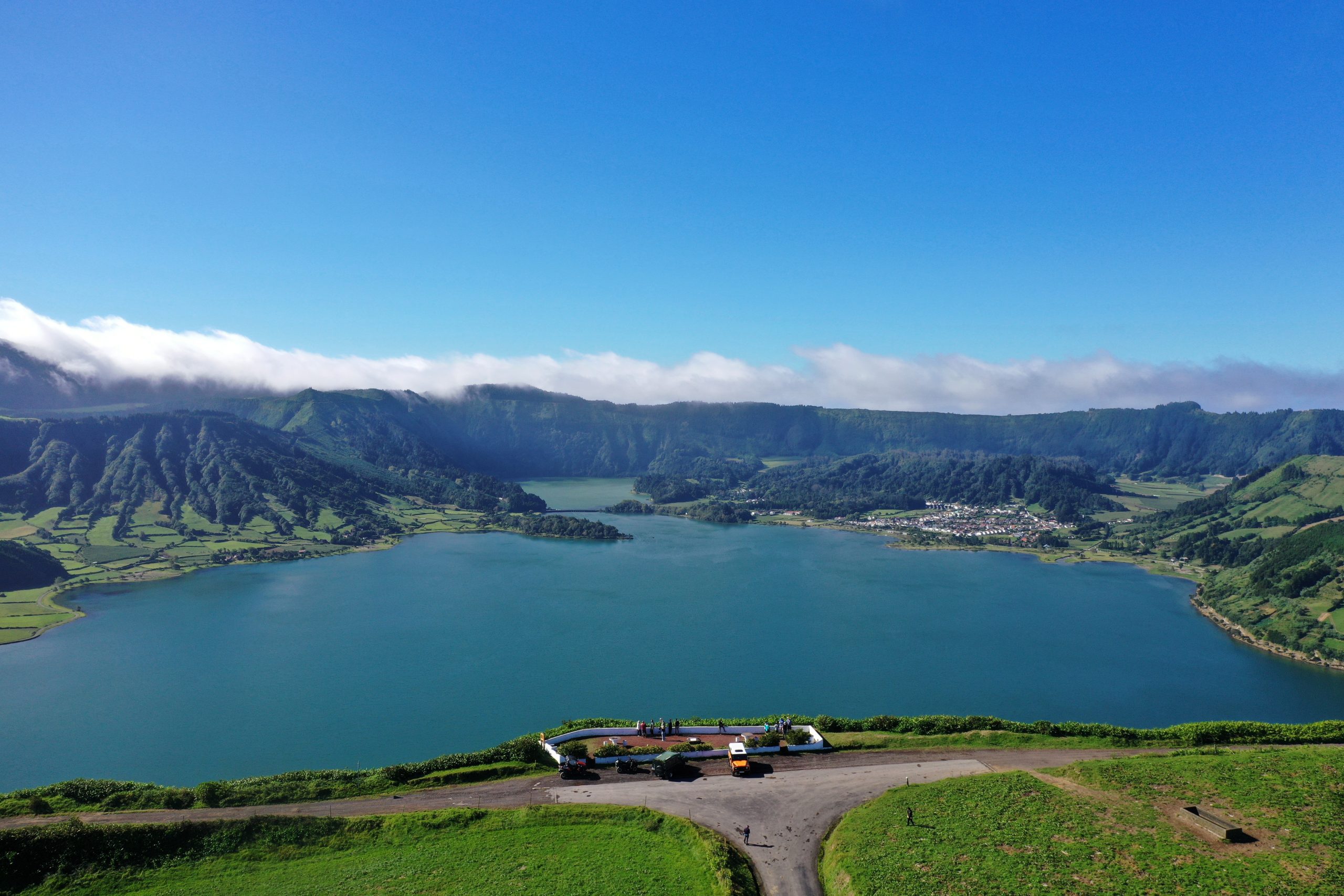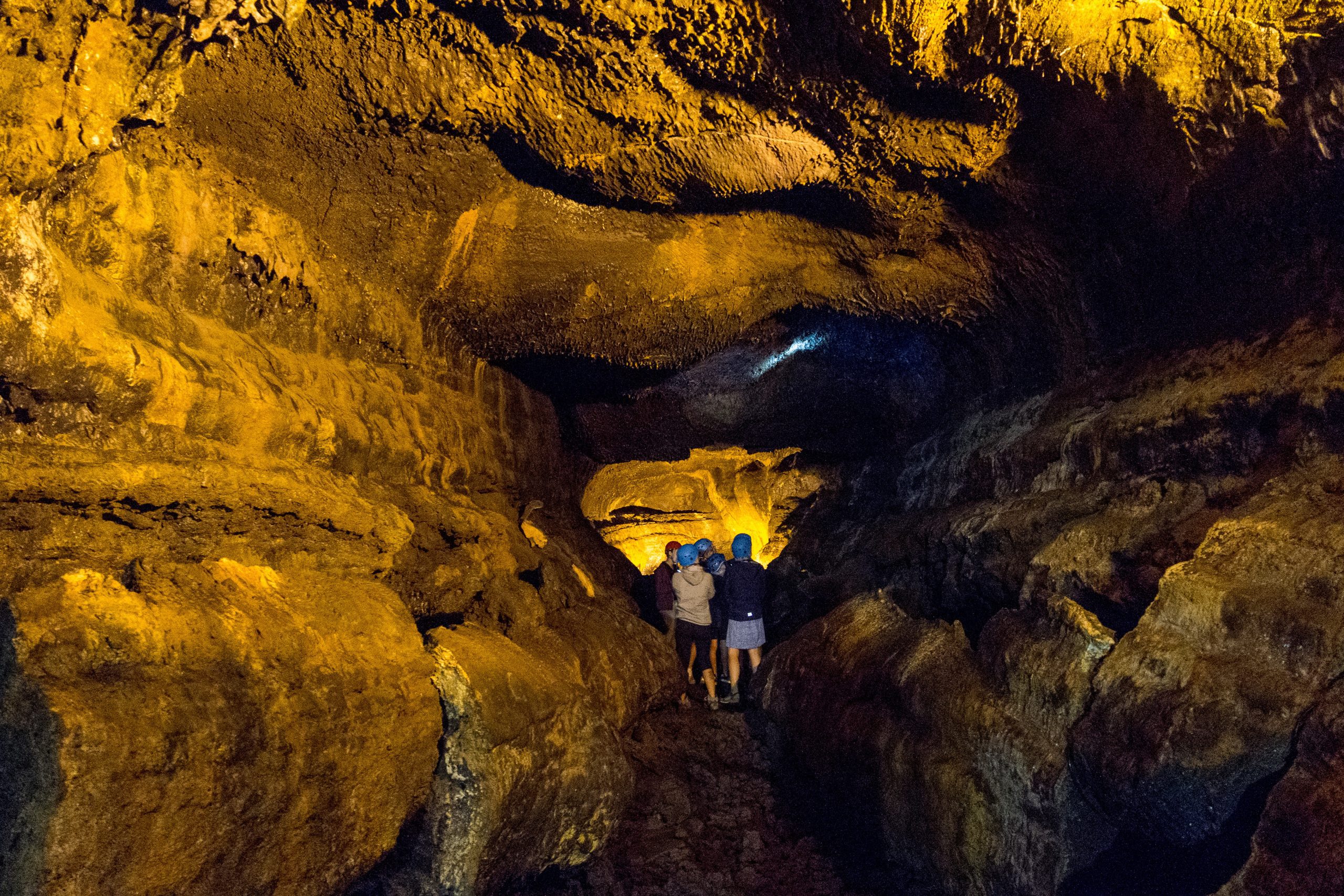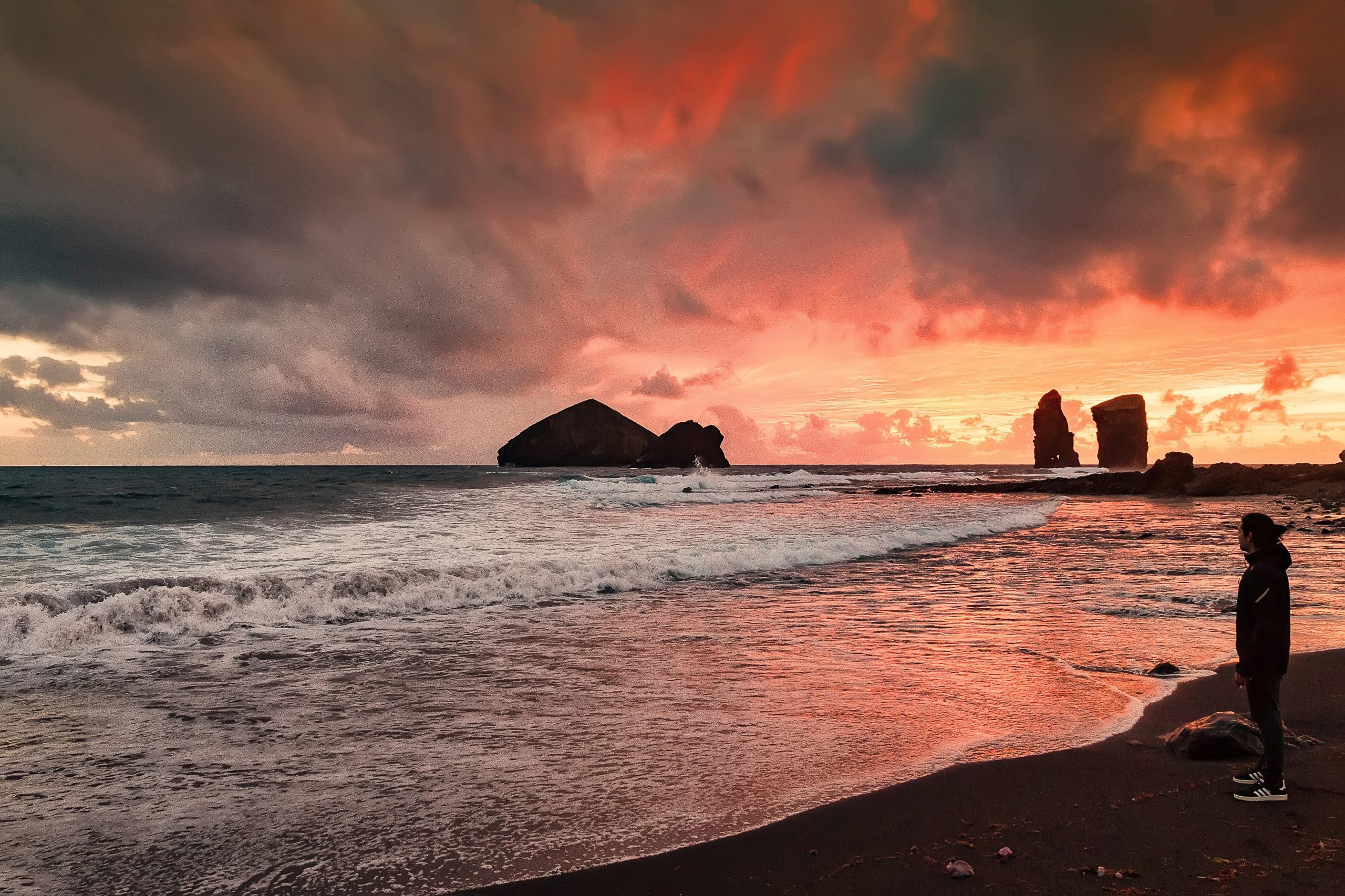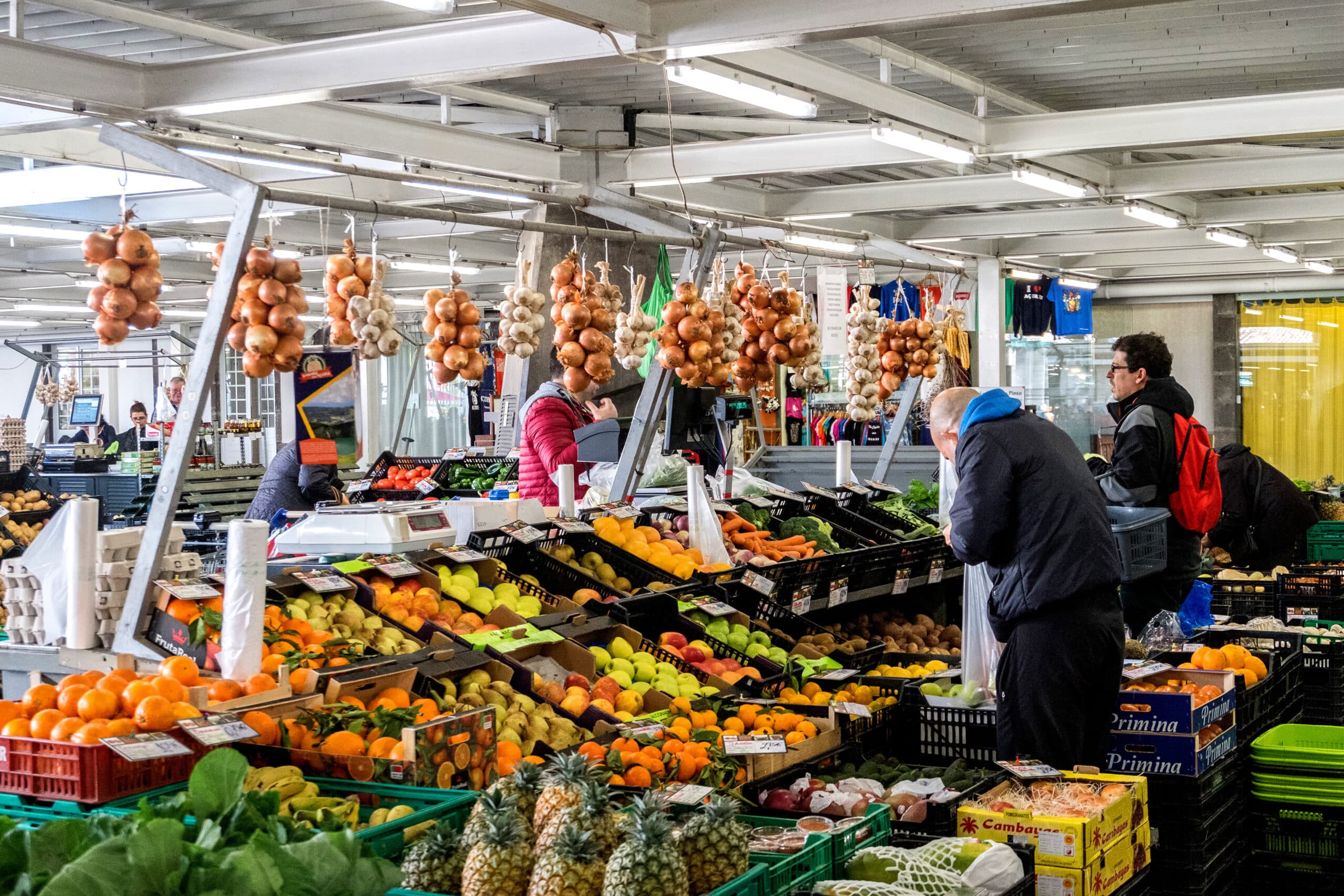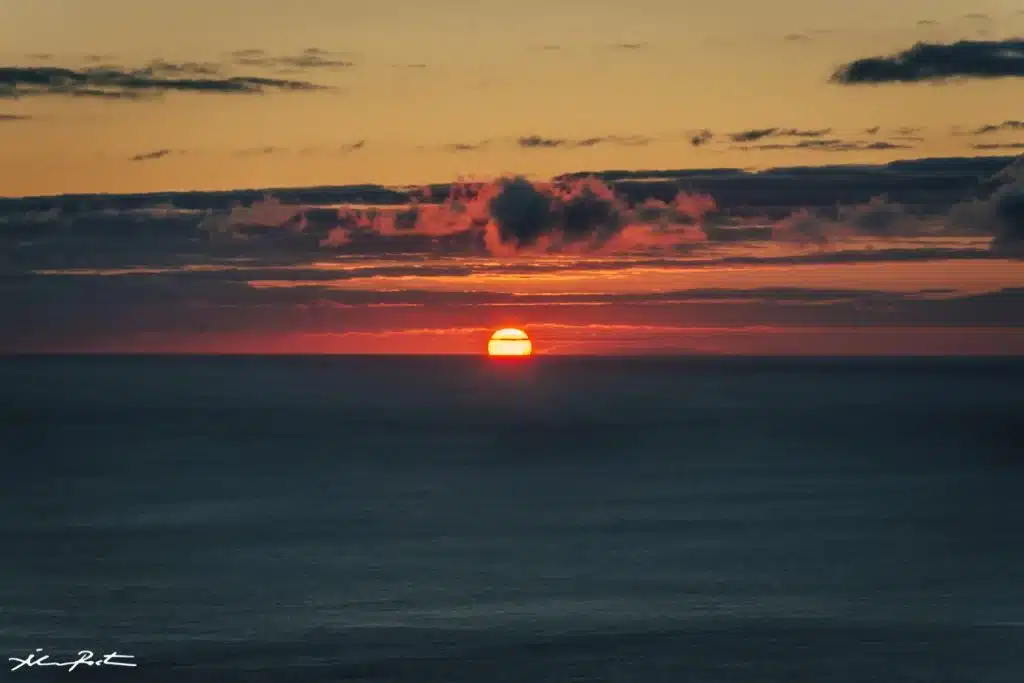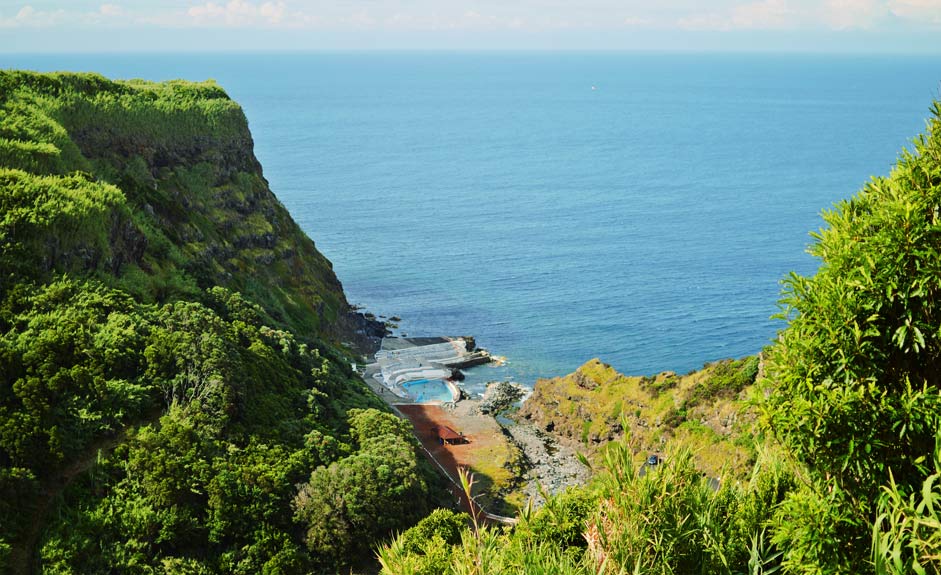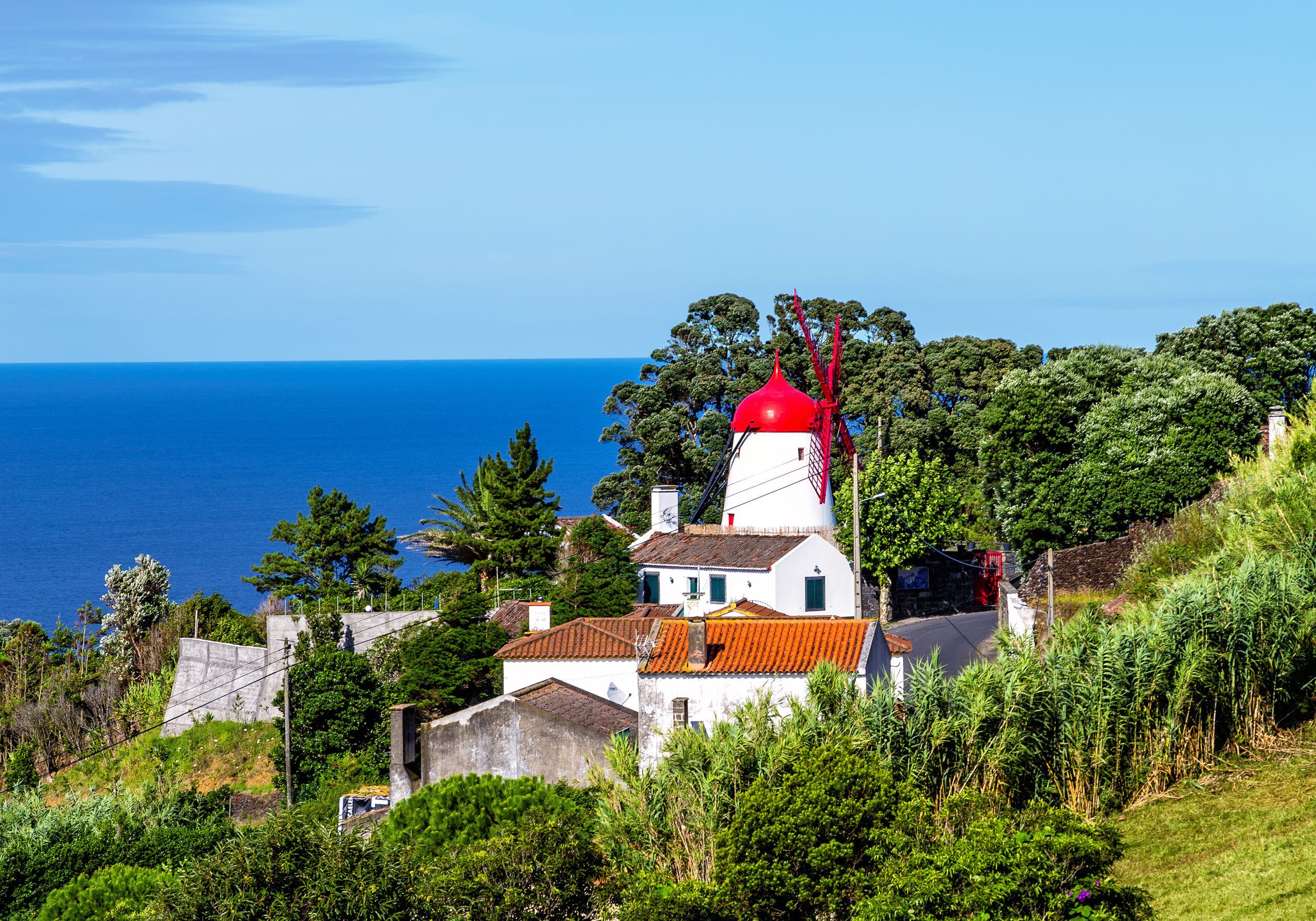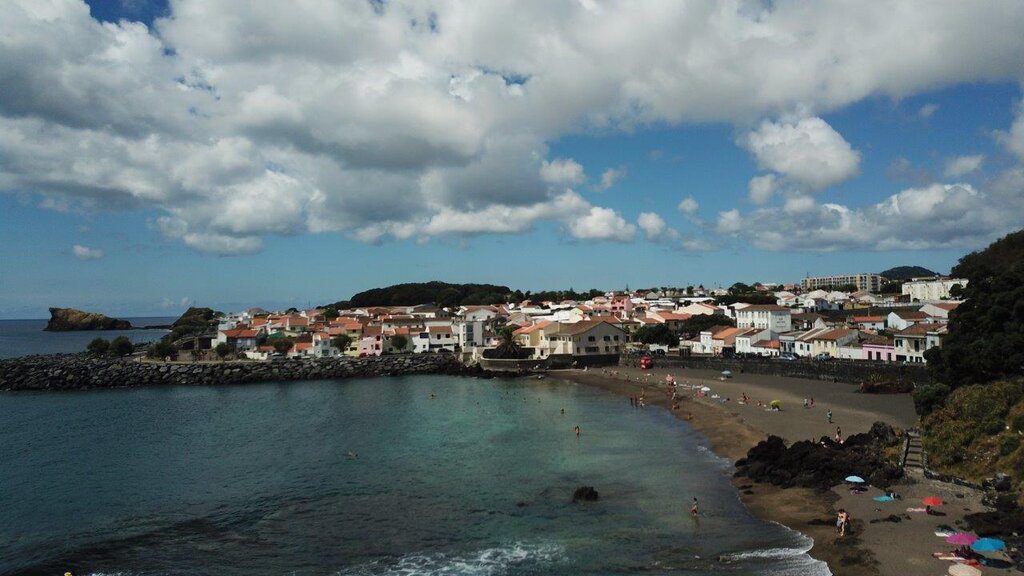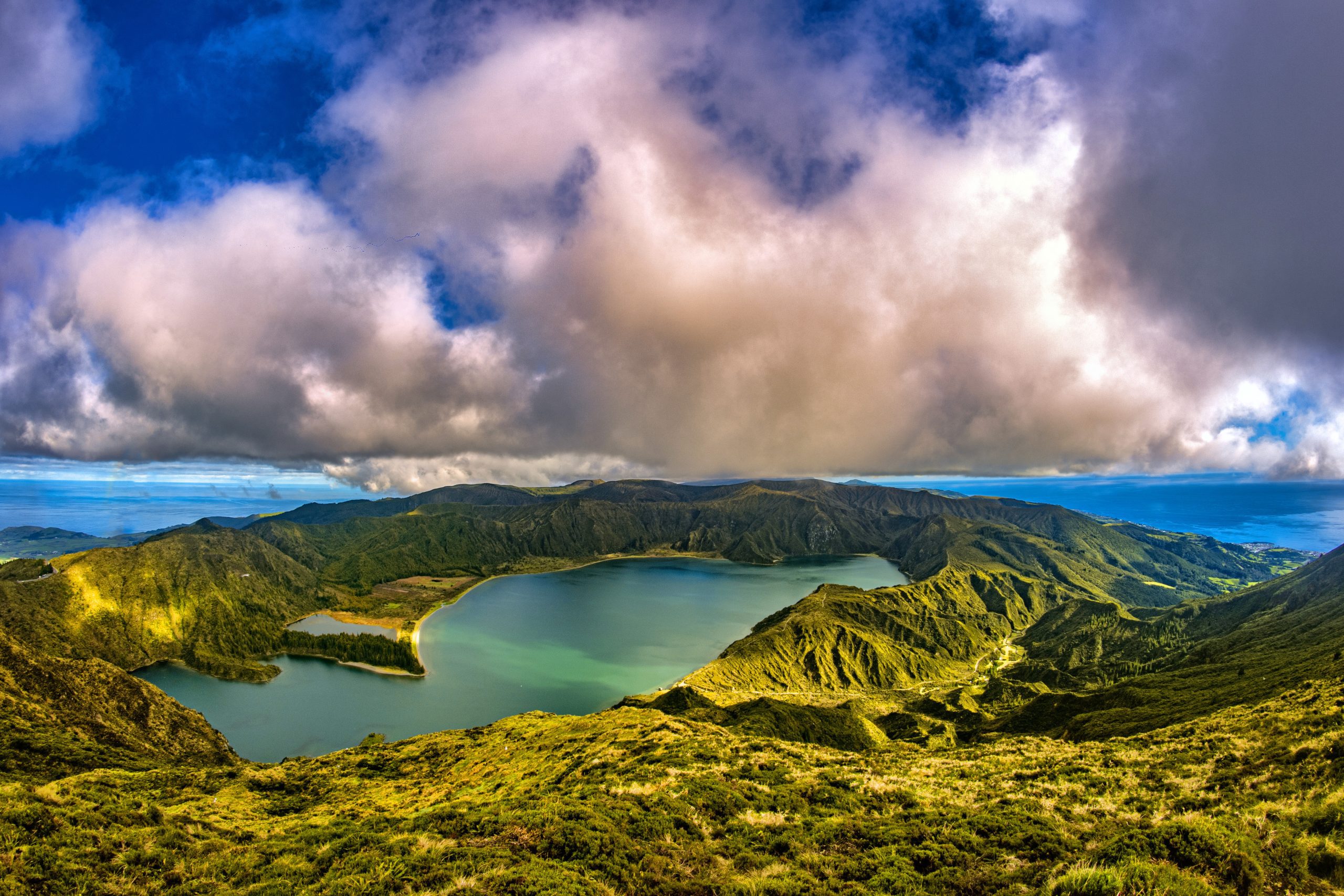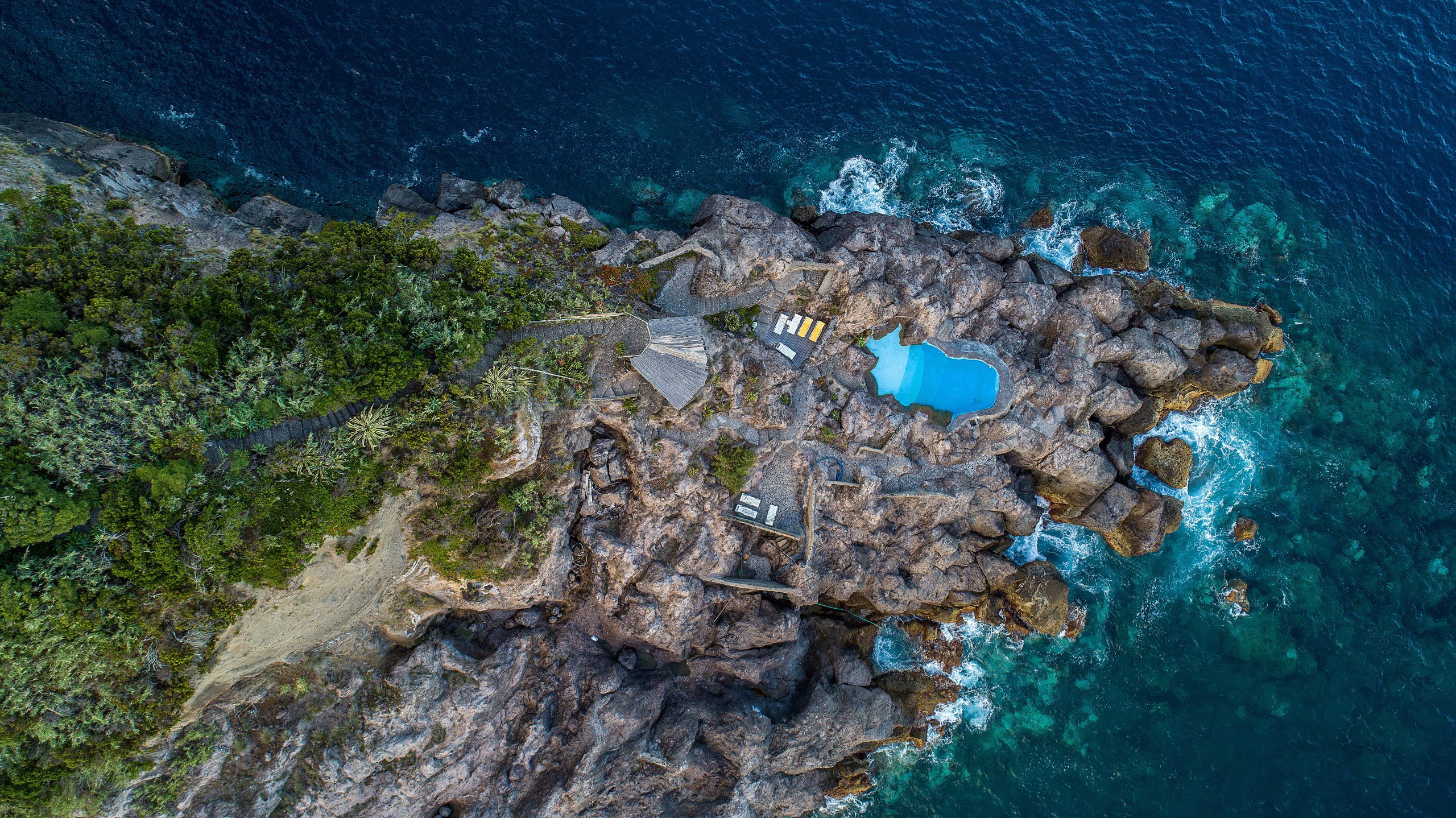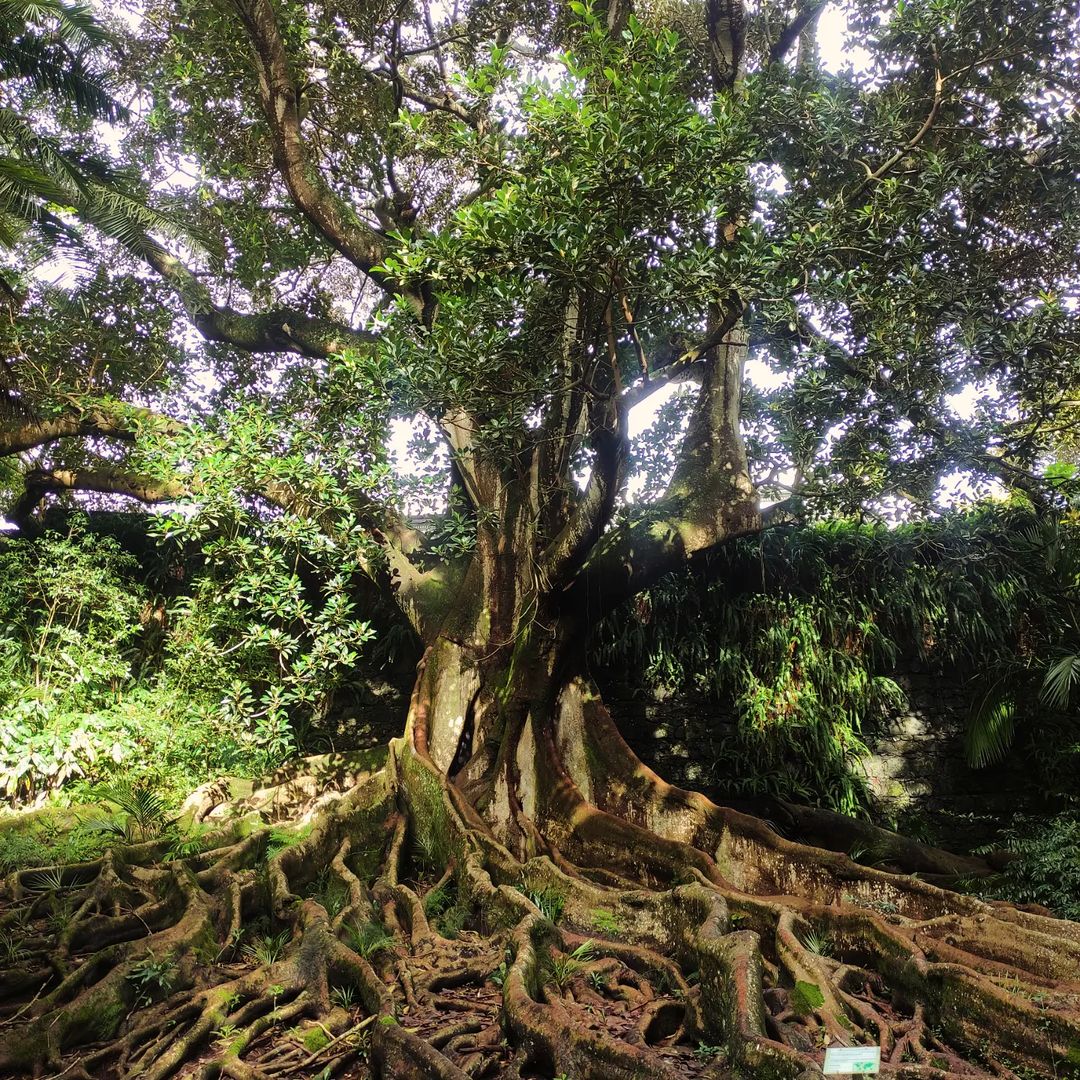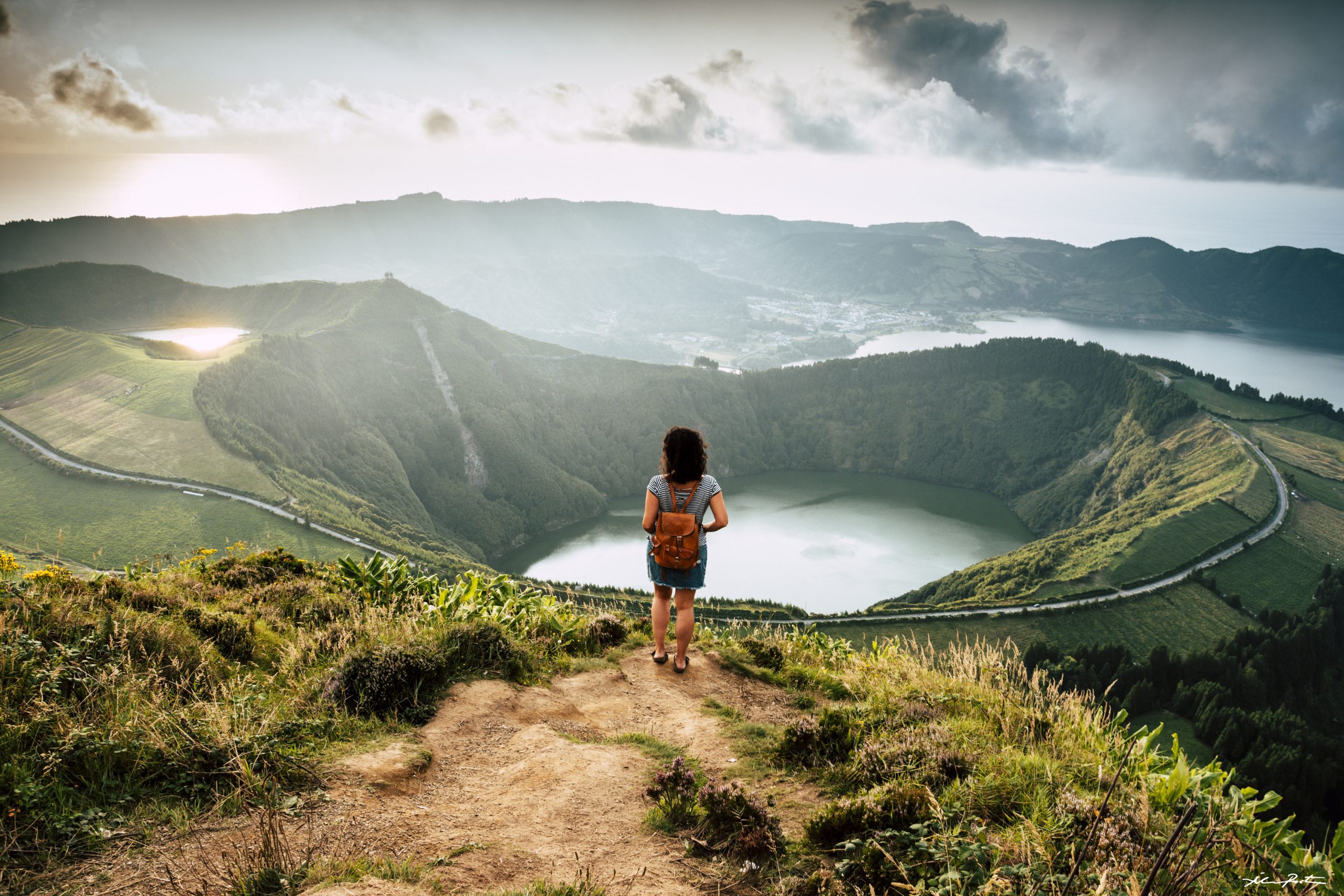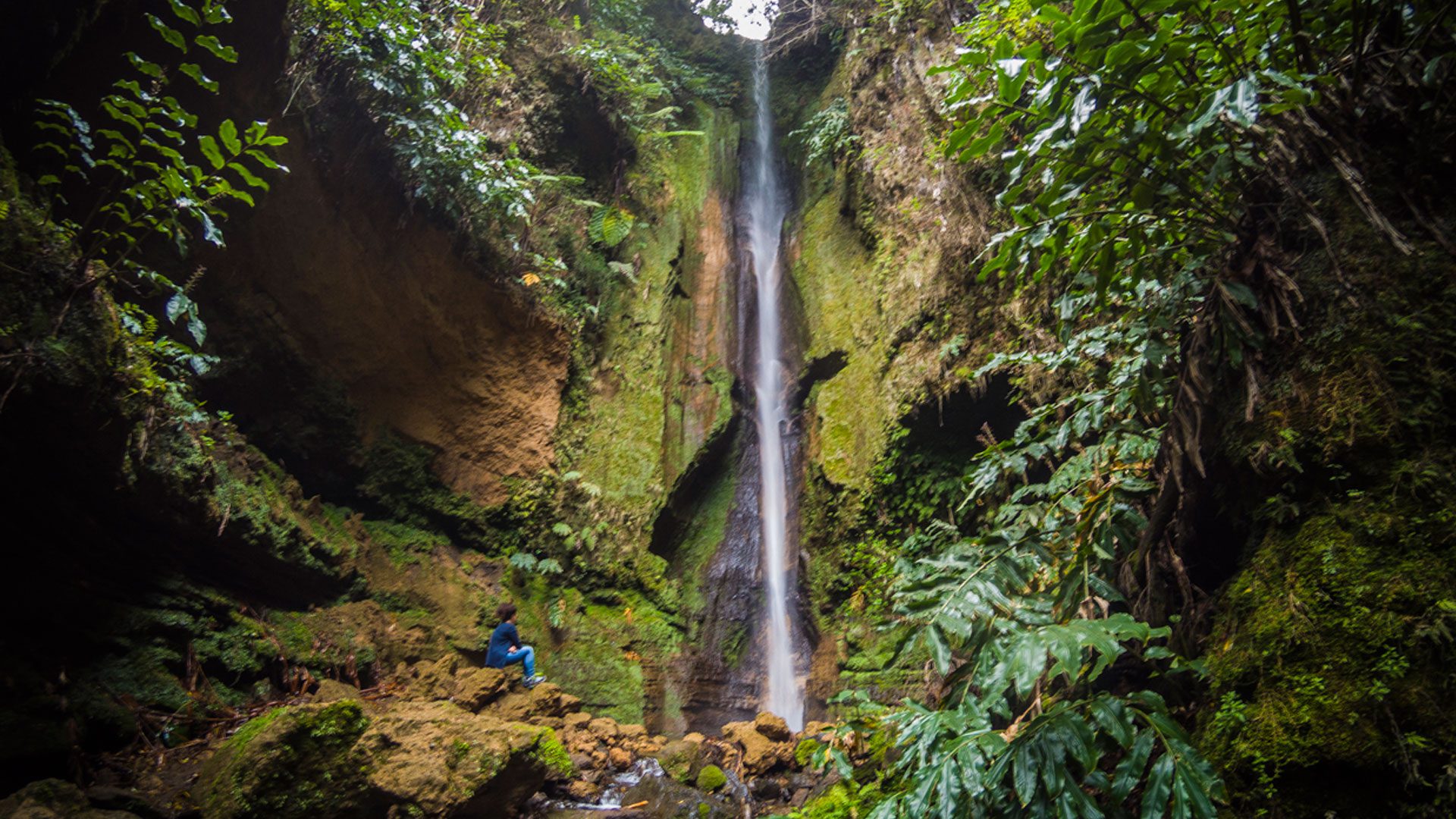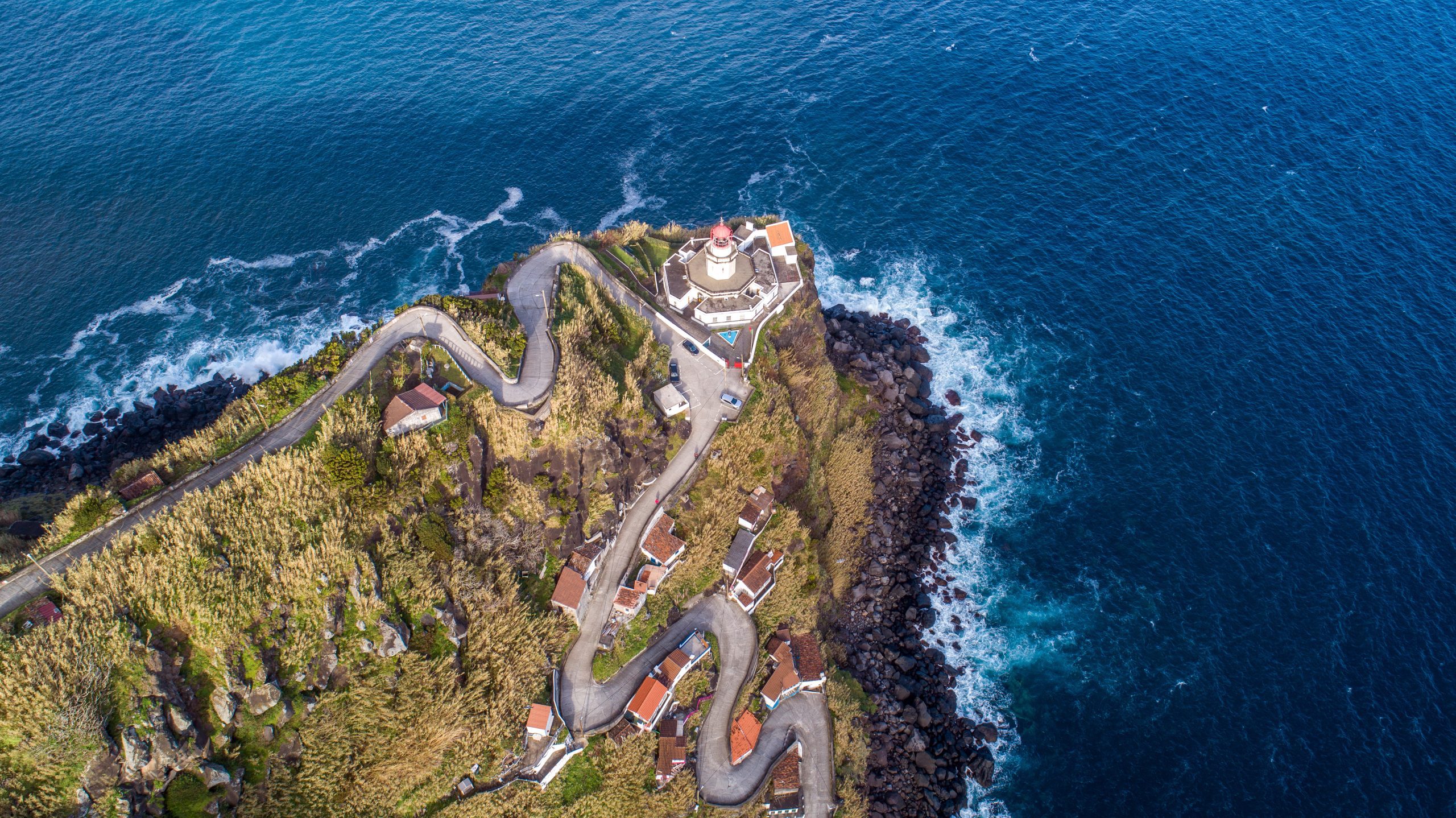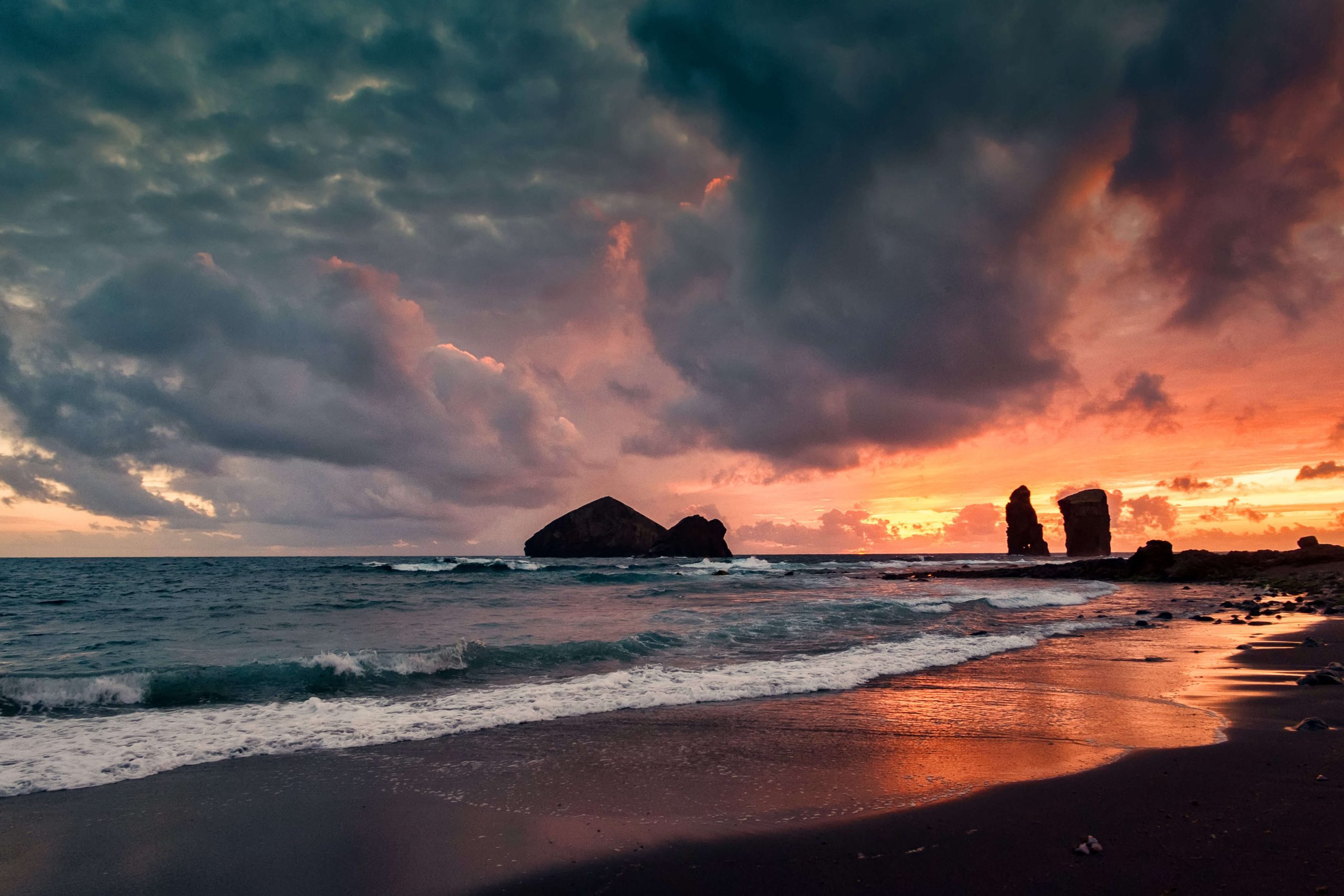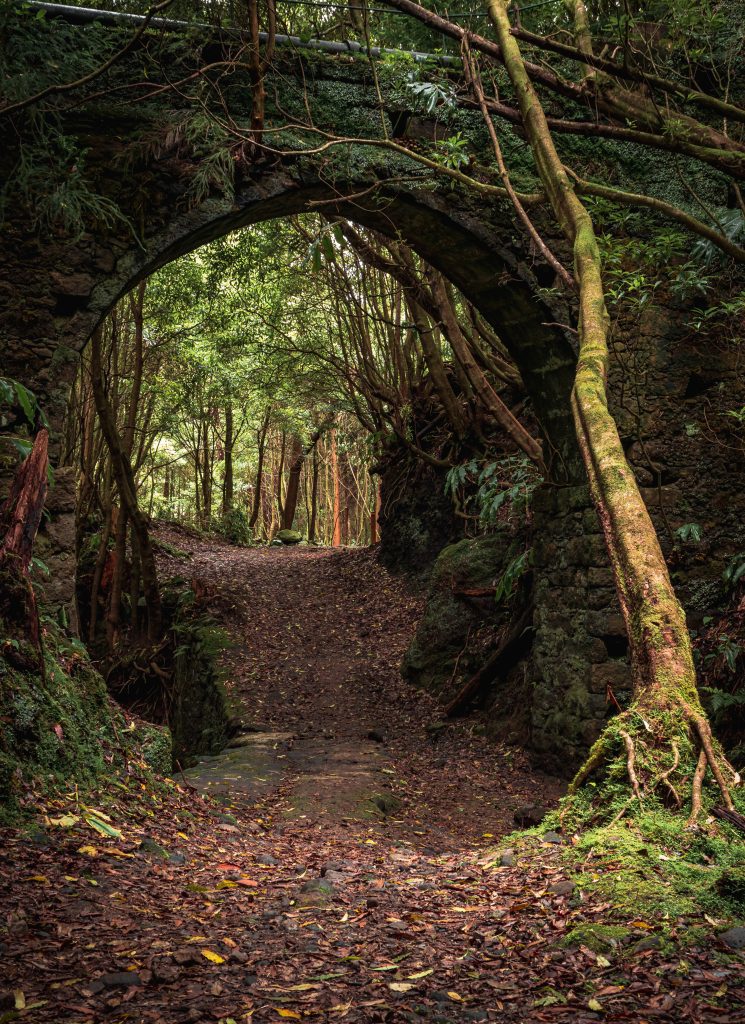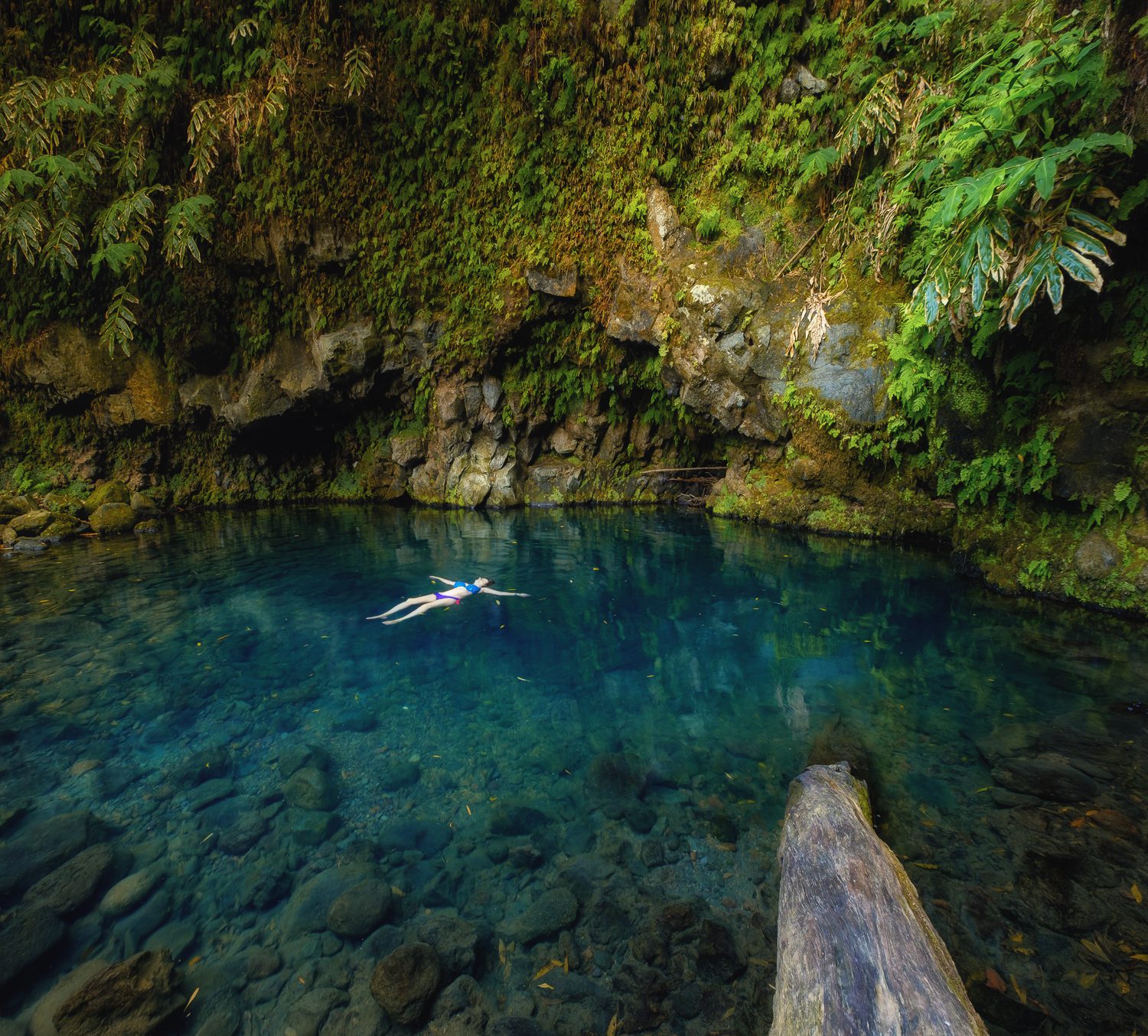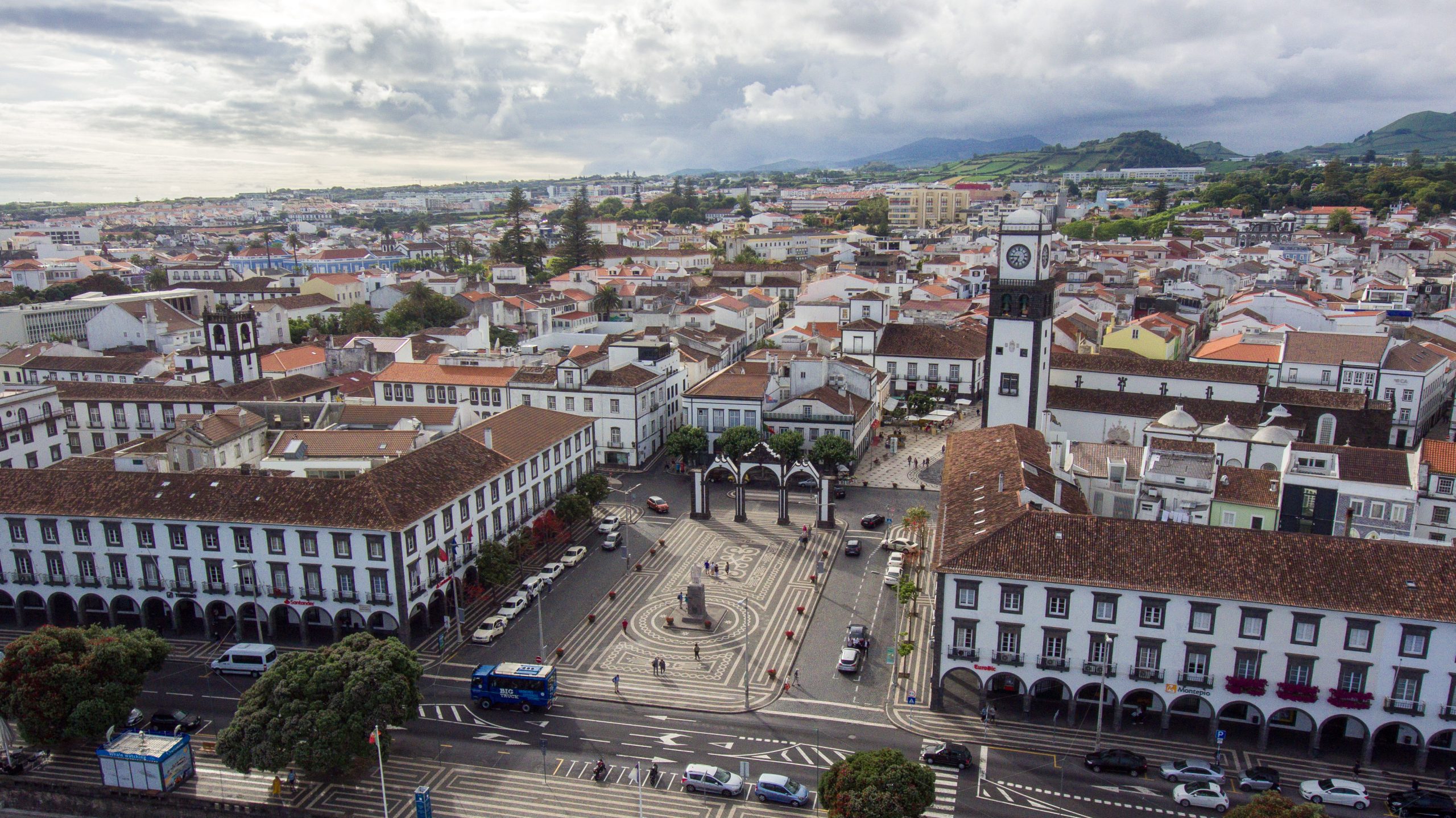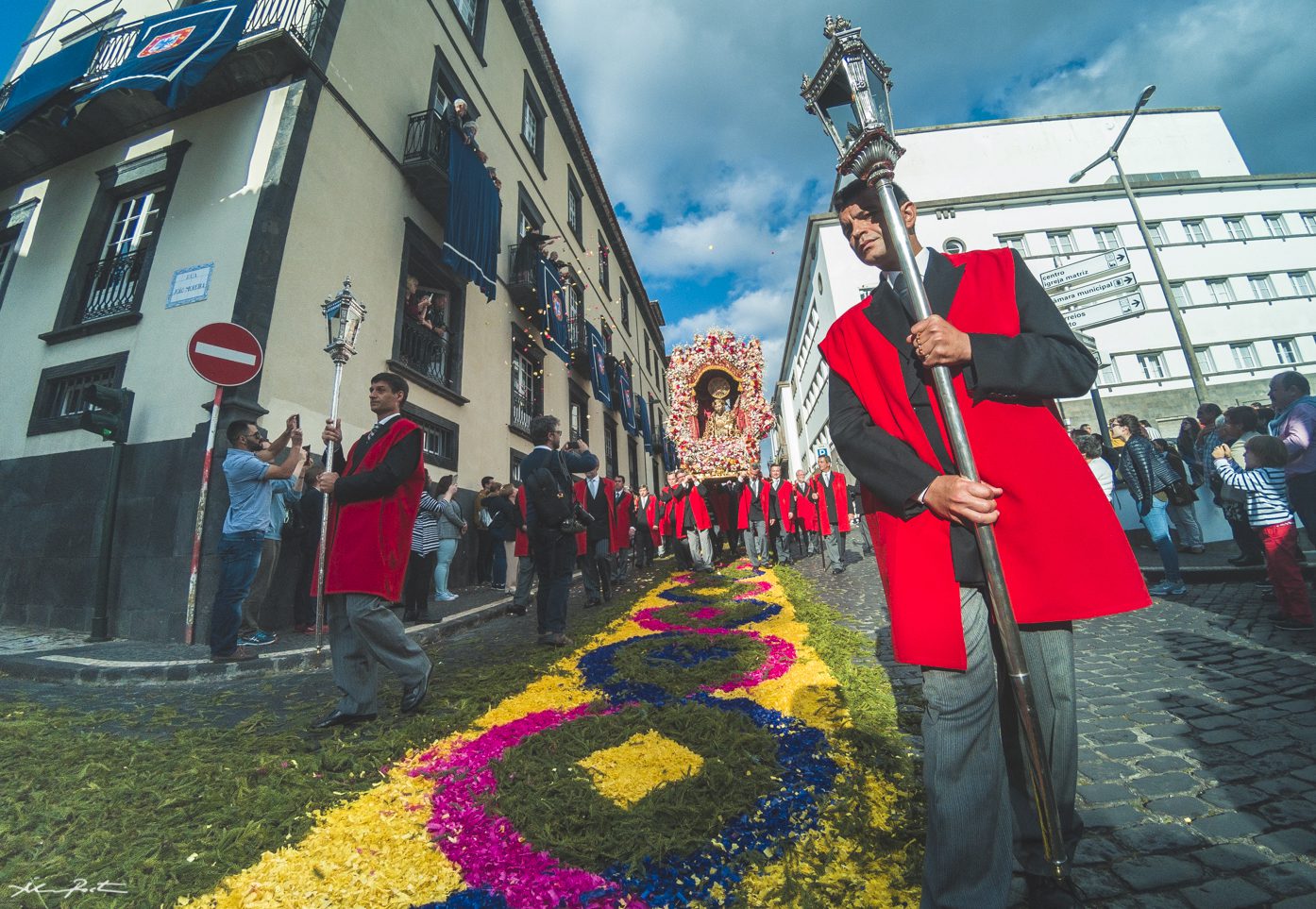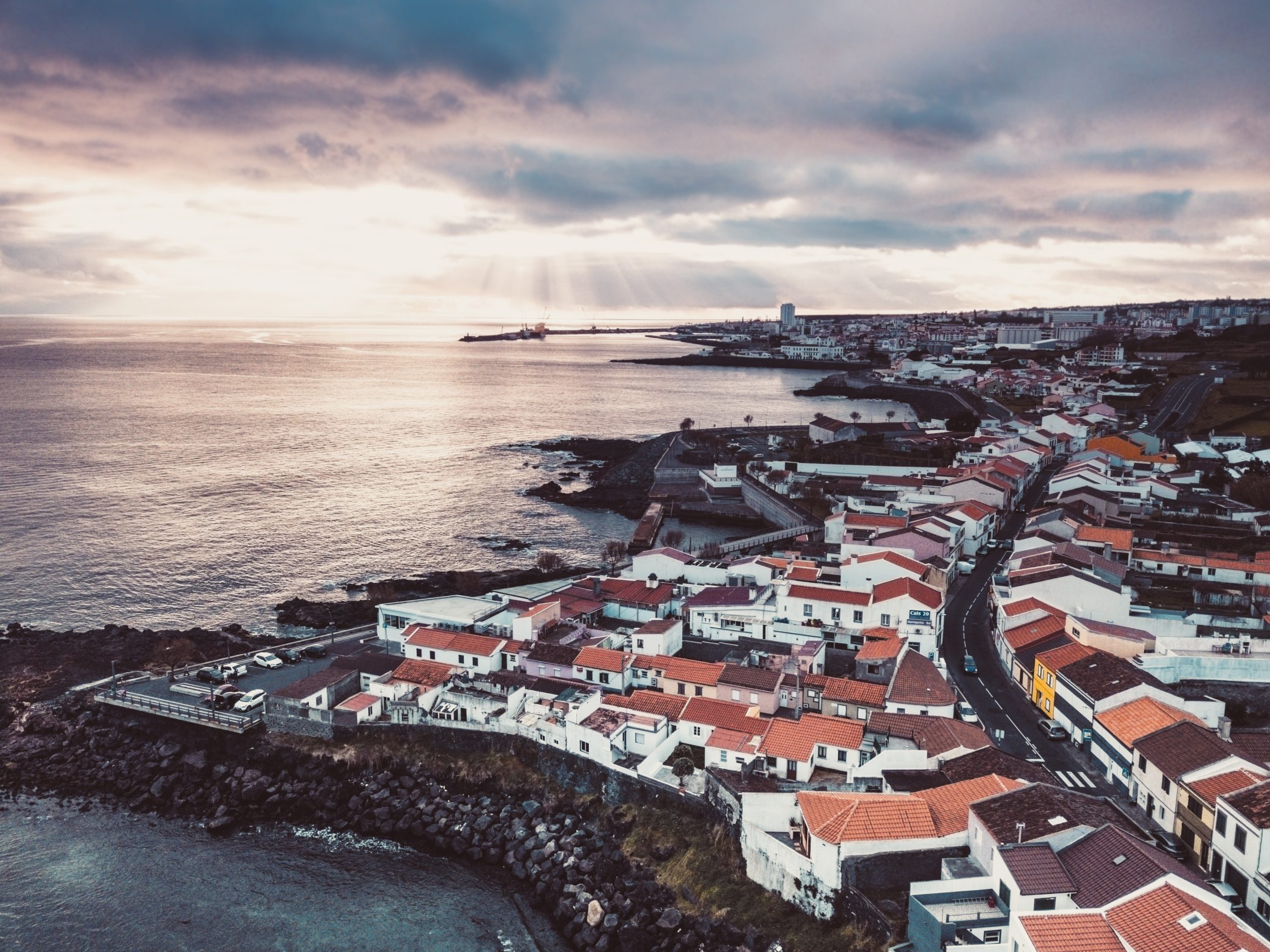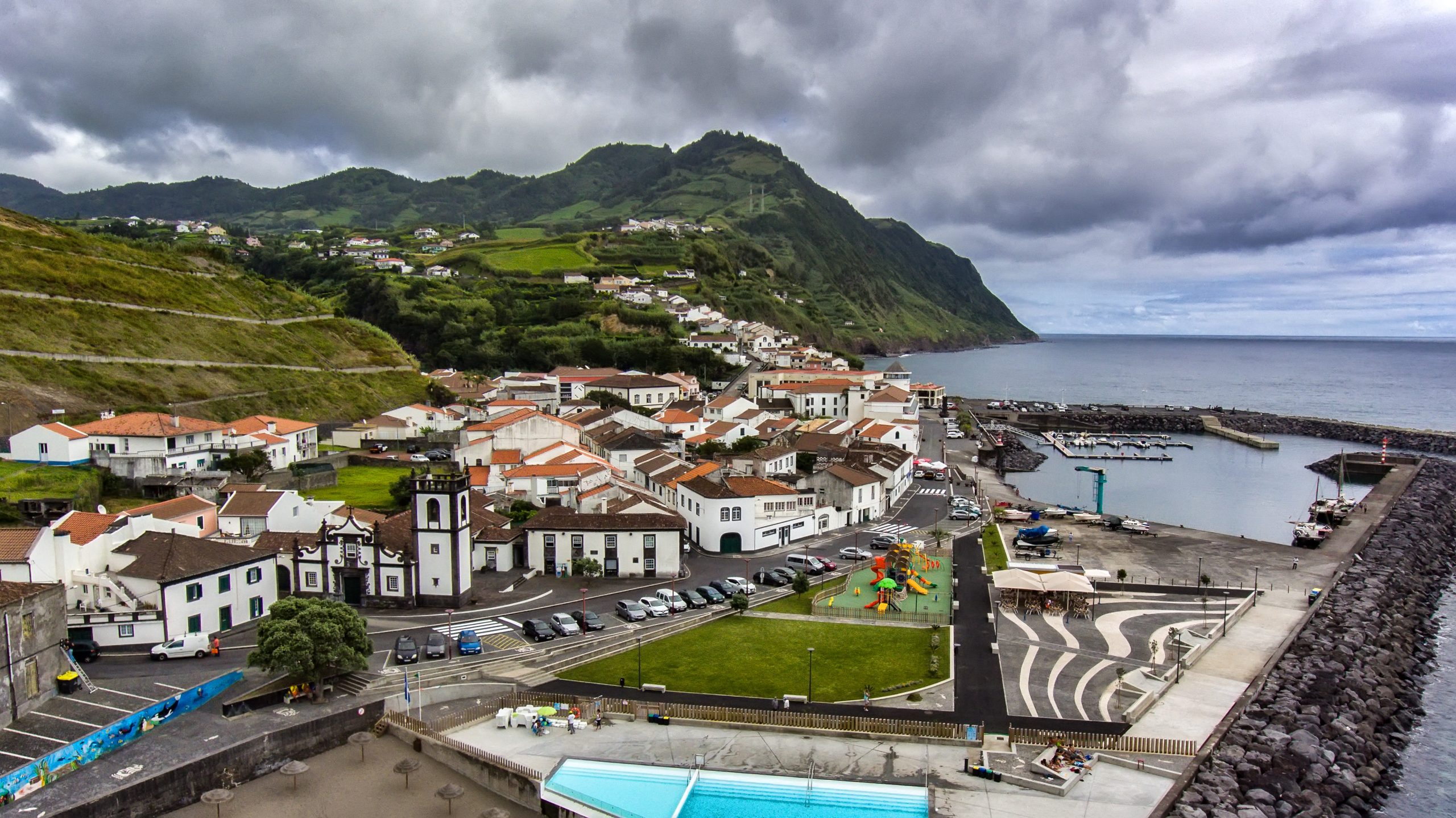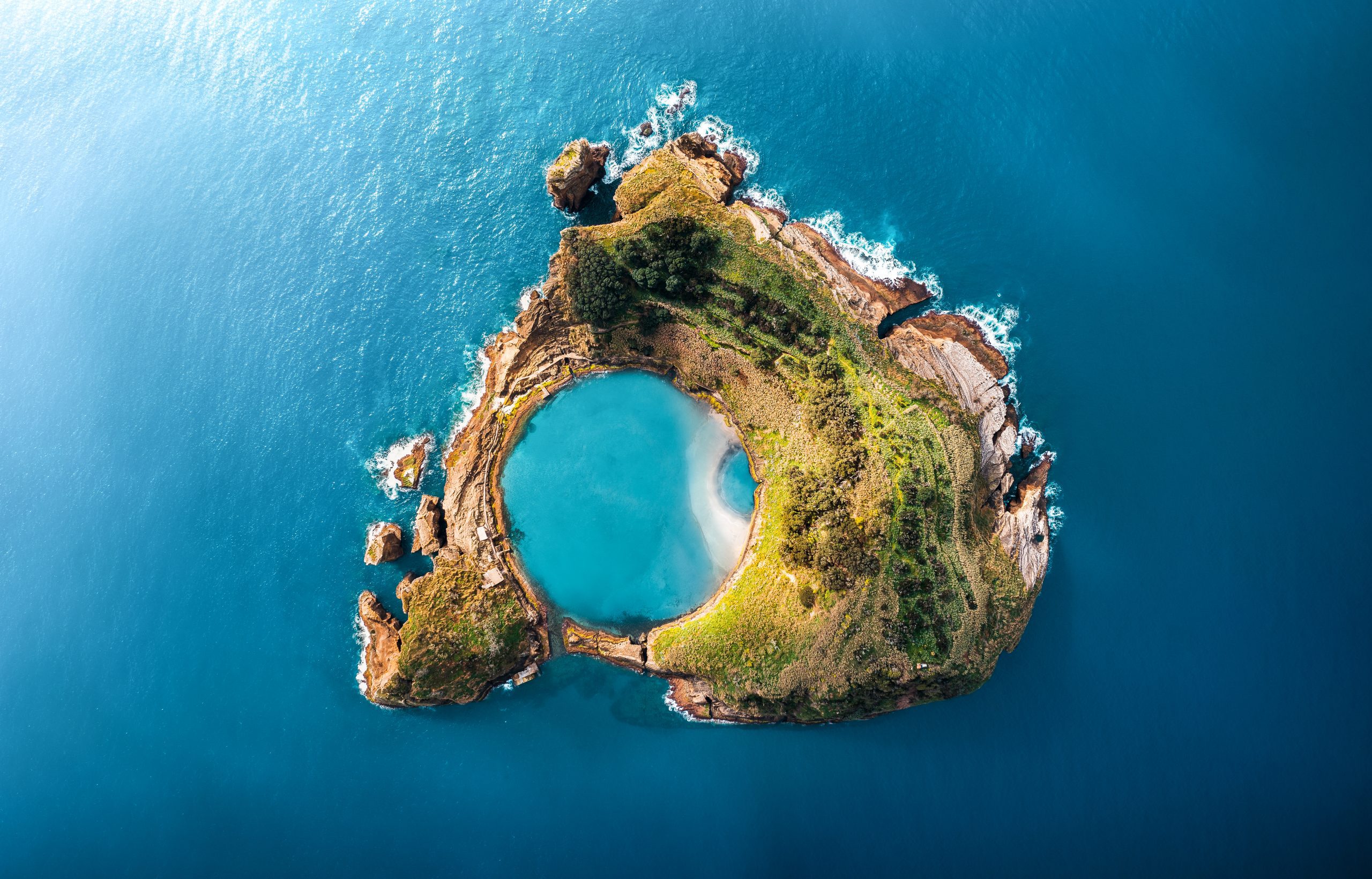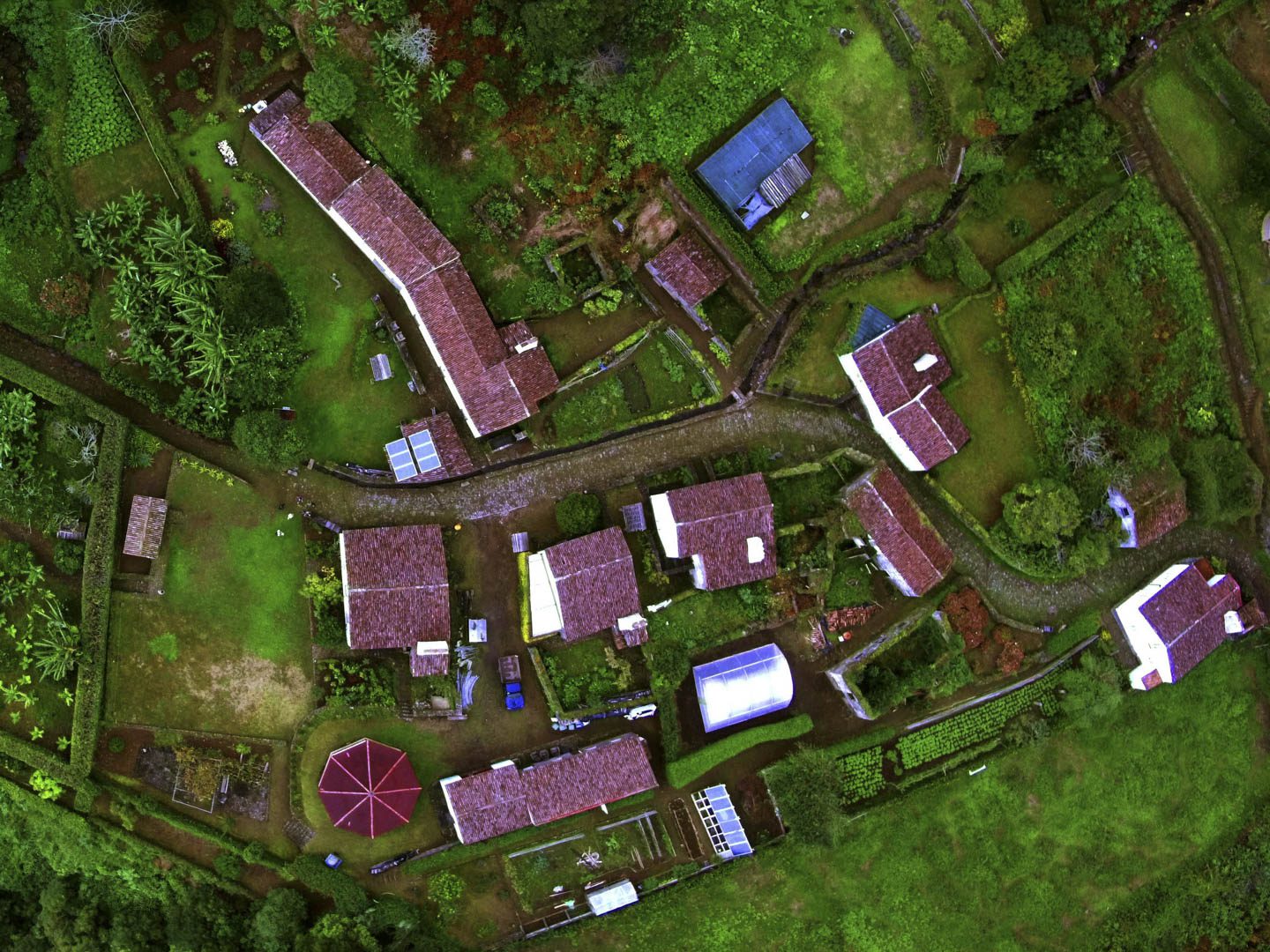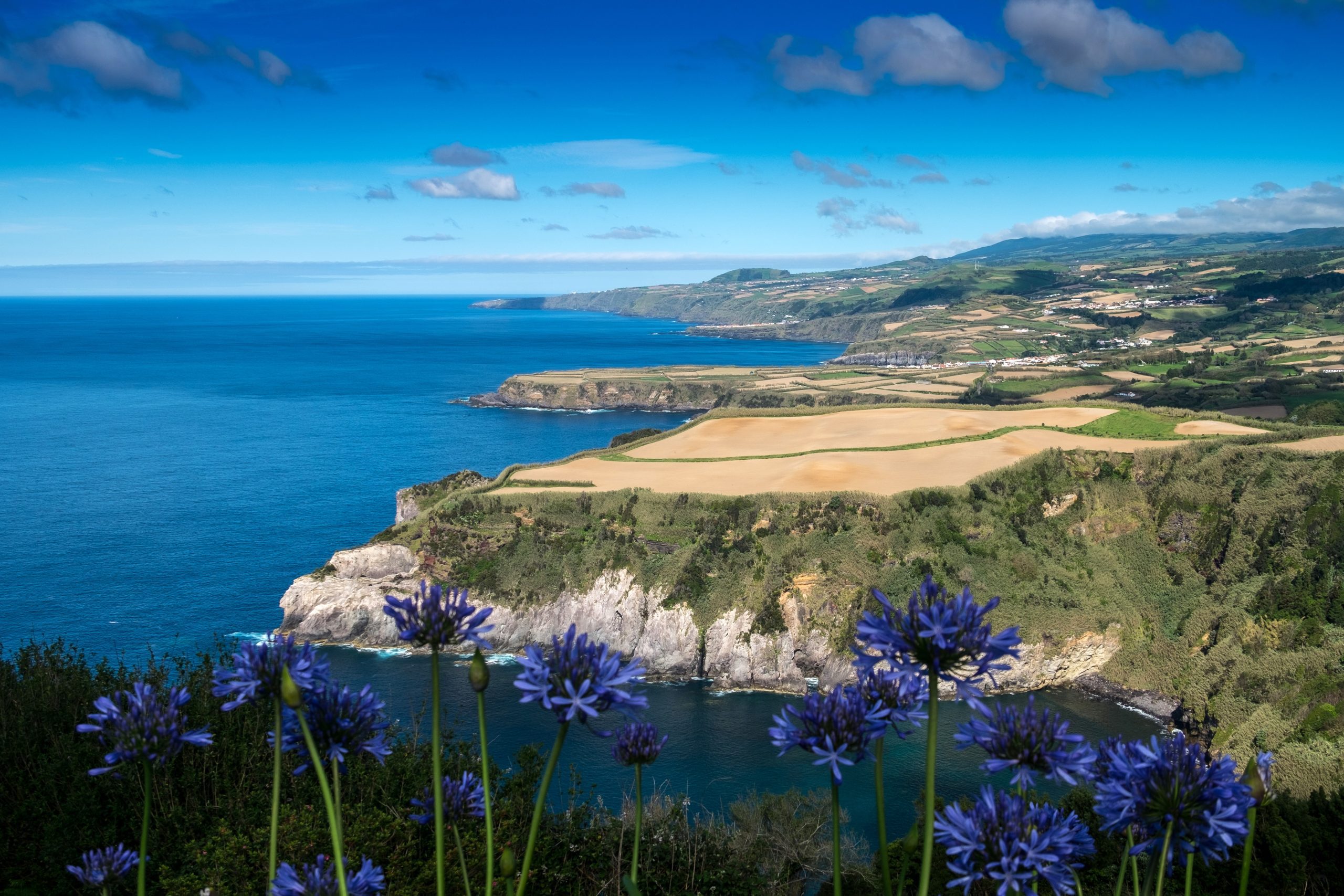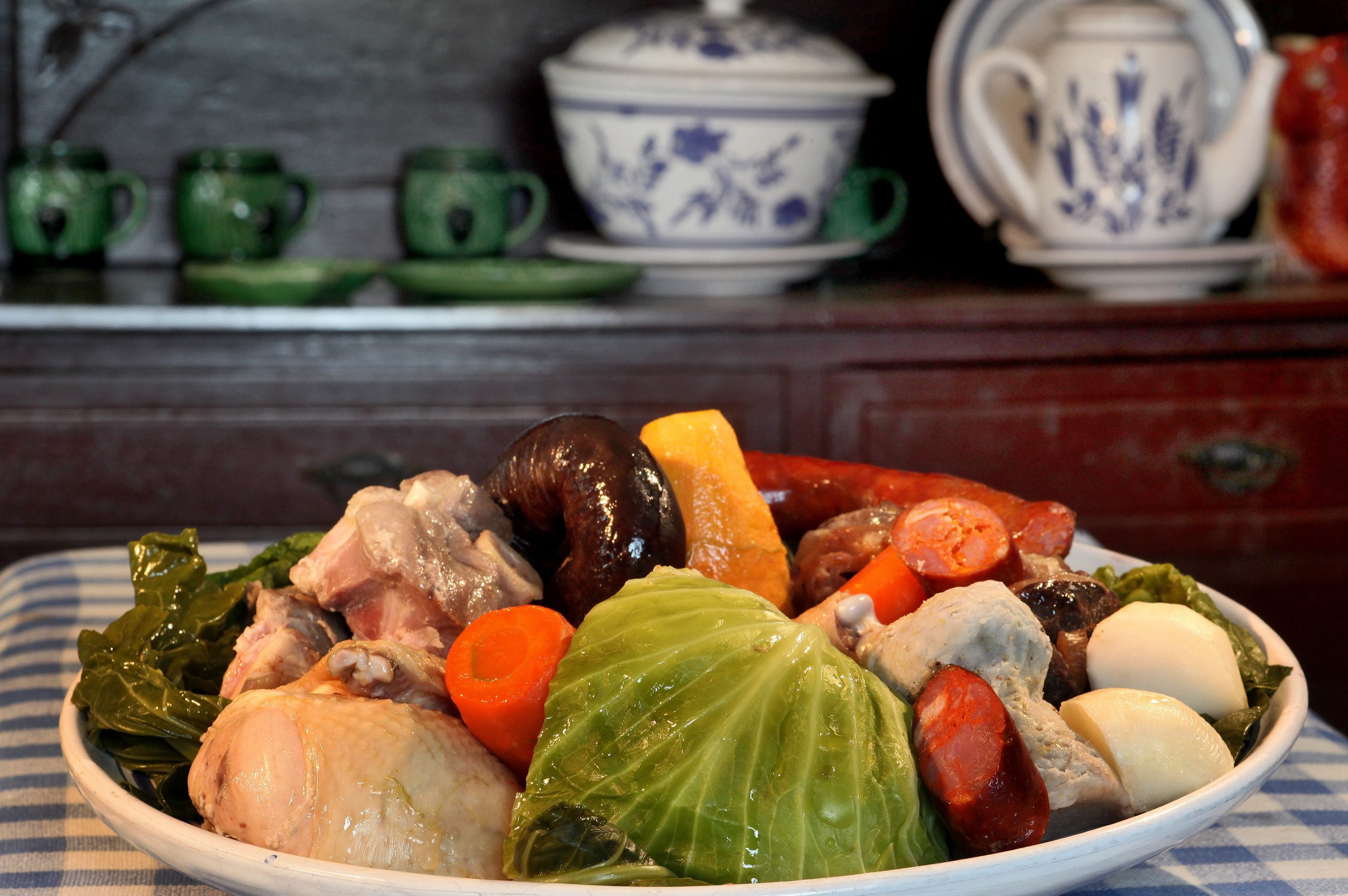The Terra Nossa Botanical Garden is considered one of the most beautiful in Europe and the world. Internationally recognized for its diversity of peculiar plants and trees, this garden is a must-see in São Miguel.
What’s more, we can say that this park is a veritable “box of surprises”. The gardens surround several thermal water tanks and fountains with numerous therapeutic properties, so this is the ideal place to relax and forget your troubles.
We’ve compiled a guide that includes the history, information about the garden, and tourist attractions you shouldn’t miss in this part of the island.
Where is the Terra Nostra Botanical Garden?

The Terra Nossa Botanical Garden is situated at the rear of the renowned Terra Nostra Spa Hotel, located in the Furnas Valley, Ponta Delgada, São Miguel. With more than 2,000 species of trees from all four corners of the world, a priceless collection of camellias (approximately 600 species), and a vast variety of flowers, this place is well worth a thorough visit.
Additionally, the Terra Nostra Park Botanical Garden is divided into themed gardens dedicated to various botanical species. The park is divided into two distinct zones:
- The area of the boulevards and denser woodlands;
- The lower area of the watercourses comes from the Ribeira Amarela and the Serpentina, where you can find pavements, lawns, ponds, and fountains.
Note: Due to its size, the best way to explore the space is to dedicate an entire morning or afternoon.

History of Botanical Garden
As you might expect, the Terra Nostra Botanical Garden is one of the most popular places on the island and in the Azorean archipelago. Influenced by the romantic style, this natural wonder was built during the 18th and 19th centuries.
Over the years, Terra Nostra Park has had several owners, but its history dates back to 1775, when it was acquired by Thomas Hickling, a merchant and honorary U.S. consul in São Miguel. With a role of enormous importance in the history and evolution of the Furnas Valley, the park came to be seen as a spa center of interest for the treatment of diseases such as rheumatism and obesity.

Did you know
In the 20th century, Terra Nostra Park was a significant landmark in the Azores during the golden age of gardening.
Today, the garden is owned by the family of Patrícia and Joaquim Bensaude, who guarantee the preservation and dynamization of this landscape landmark.
Fauna of Botanical Garden
Terra Nostra’s Botanical Garden showcases a diverse array of plants, trees, shrubs, and herbaceous plants from around the world. Take the opportunity to contemplate the beauty and exuberance of the fascinating vegetation that surrounds you in this garden. According to the organization responsible for Terra Nostra Park, the botanical garden has the following garden areas:
- Avenue of the Palms;
- Avenue of the Ginkgos;
- Bromeliads;
- Bamboos;
- Aquatic plants;
- Azalea Garden;
- Vireyas Garden;
- Garden of the Endemic and Native Flora of the Azores: Cedro-do-Mato, Juniper, Sanguinho, Folhado, Uva-da-Serra, Louro-de-Cheiro, Urze, Pau Branco, Azevinho, Gingeira-do-Mato, Tamujo, Faia-da-Terra, Queiroga, Oaks, Black and White Poplars, Cryptomeria, Araucarias, Tulipeiros, Camellias, Arboreal Ferns, Hydrangeas, and Rhododendrons;
- Camellia Collection — over 600 specimens of different species;
- Cycad collection — over 85 specimens of 8 different species and genera;
- Fern Collection — around 300 specimens of 48 different species.
What to Do in Terra Nostra Botanical Garden
Relax in the Thermal Pool at Terra Nostra Park

Surrounded by endemic species of fascinating plants and trees, the immense thermal pool has therapeutic and medicinal properties that fascinate all who visit it. The unmistakable orange-brown hot water is rich in iron from the earth. With a water temperature of approximately 38 °C. °C and 40. °C, this is the ideal spot for those seeking a place to unwind.
Quick Info
To enjoy this tank to the fullest, we recommend avoiding light-colored swimwear or towels to prevent staining.
Related article: Parque Terra Nostra’s Thermal Pool
Plan Your Visit to Terra Nostra Park

Pro Tips
Terra Nostra Park is known for being one of the most beautiful botanical gardens in the world. To enjoy this unique experience, we recommend that you plan your visit, taking the following information into account:
- Despite its location on private property, the attraction is open to the public daily.
- Opening hours:
- From April to October: between 10h00 and 19h00;
- From November to March: between 08h00 and 17h00;
- If you’re staying at the hotel, the space is accessible 24 hours a day.
- Price list:
- Adults: 10 euros;
- Children (aged 2 to 10): 5 euros;
- Children (up to 2 years old): free entry;
- Hotel Spa Terra Nostra guests: free entry.
It’s also advisable to book flights and accommodations in advance to secure more deals and better value for money, taking into account your preferences.
Azores Guide Book
Azorean Language & Phrases 🗣️ | Currency & Banks 💵 | Credit Cards & Traveler’s Cheques 🏧 | Driving in the Azores 🚗 | Electricity 🔌 | Experiences & Tours 🗺️ | Health & Safety 🩺 | Internet & Wi-Fi Access 🛜 | Phones & Mobile Service 📞 | Post Offices & Buying Stamps ✉️ | Public Holidays 🏖️ | Shopping 🛒 | Time & Daylight 🕒 | Whale Watching Guide 🐳 | Best Island to Visit 🏞️
Best Time to Visit
Temperatures in São Miguel are generally mild throughout the year. However, in the autumn and winter months, periods of rain and lower temperatures become more frequent.
In this sense, the best time to visit the Terra Nostra Botanical Garden is during the summer months, between May and September, when the days are warmer and more inviting for nature walks. However, it is between December and May that you can contemplate the beauty of some flowering plants.
However, it’s important to note that cloudy skies are a common feature of all the islands in the Azores archipelago, regardless of the season in question, so you may sometimes find it challenging to appreciate the beauty of some viewpoints.
Check all our articles about the weather in the Azores throughout the year 🌤️ ☔️: January | February | March | April | May | June | July | August | September | October | November | December
How to Get to Terra Nostra Botanical Garden
Suppose you are traveling from the city of Ponta Delgada to the Terra Nostra Botanical Garden. In that case, you will have a variety of transportation options and routes to choose from. You can choose to travel by car, bus, or bicycle. To reach your destination, you’ll have to travel around 43 kilometers along the EN1-1A.
The journey takes approximately 45 minutes by car, 1 hour 35 minutes by bus, and 2 hours 50 minutes by bicycle. In any case, you can make this journey on foot, but you should expect to walk for around 9 hours.
Planning a trip to the Azores? These articles will help you: How to Get to the Azores 🗺️ | Azores airports 🛬 | Flights between islands ✈️ | Ferries between islands ⛴️ | Which island to choose? 🏝️ | What airlines fly to the Azores? 🛩️
Where to Eat
If you need somewhere to eat near Terra Nostra Botanical Garden, click here. In this link, you’ll find the 10 best restaurants on TripAdvisor.
→ Explore the authentic flavors of Azorean cuisine in our articles: Bolos Lêvedos | Cozido das Furnas | Grilled Limpets | Massa Sovada | Pimenta da Terra | Gorreana Tea
Where to Stay
To make your life easier, we’ve filtered the search by:

Nearby Attractions
Poça da Dona Beija

Poça da Dona Beija is one of Furnas’ most fantastic attractions. The natural hot springs have medicinal properties that benefit visitors’ skin. Once known as Poça da Juventude, the thermal baths possess various properties derived from the mud that formed within the cave where the original “puddle” was located.

Did you know
This is a great evening activity, where the atmosphere changes to more romantic and mysterious tones. Visiting the hot pools costs 6 euros per person and is open from 8:00 a.m. to 11:00 p.m.
Visitors can enjoy the space and swim in the pools, which are typically maintained at a temperature of around 38 °C. These pools are heated by geothermal energy, offering guests an unforgettable and relaxing experience.
Grená Park
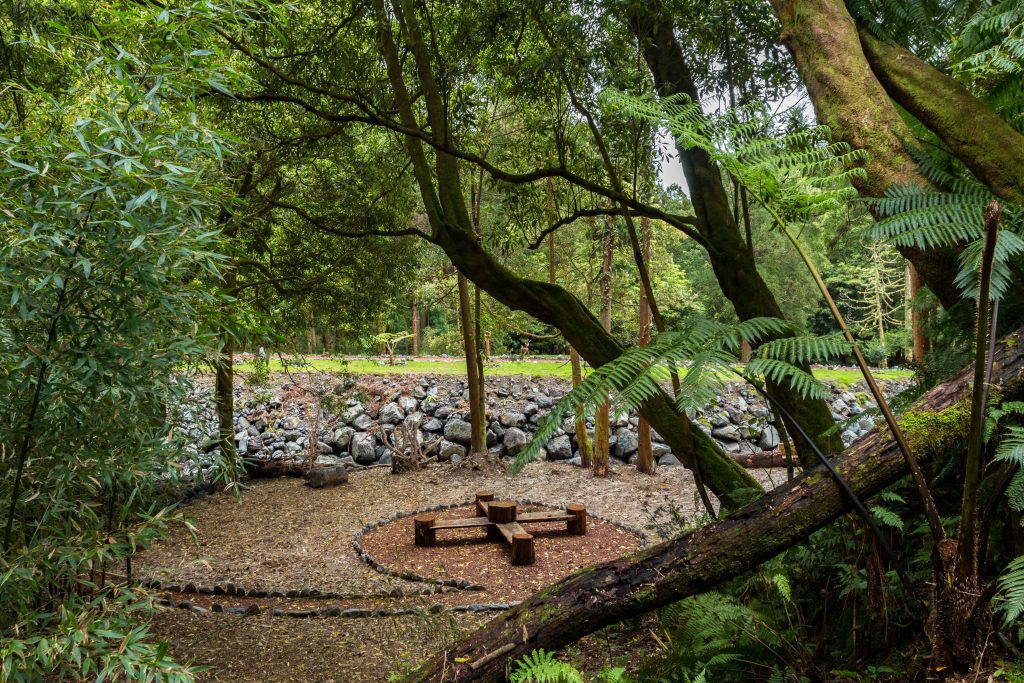
Located on the island of São Miguel, on the northern shore of Lagoa das Furnas, you’ll find Grená Park and all its charms. During your visit to the park, you’ll see an exhibition on the history of the property’s restoration. This space, with 18 hectares of forest of “untouchable nature,” is a tourist attraction. Here, you can see a watercourse, waterfalls, streams, and various types of trees and animals typical of the region. You can also enjoy the view of the ruins of a 1858 manor house in the park.
Did you know
The entrance fee is 10 euros per person for those who wish to visit the park.
Mata-Jardim José do Canto

Mata-Jardim José do Canto is on the south side of Lagoa das Furnas and was planted by the man who gave it its name in 1861, in an arid area affected by the Lagoa Seca volcano, which has been silent since 1630.
Did you know
The project was designed by Barrillet-Deschamps, a “pop star” of French landscaping who had already created such notable hits as the gardens of the Champs-Élysées in Paris (co-author).
This ten-hectare woodland garden includes centuries-old camellias, sequoias, and the Salto do Rosal trail — a 2-kilometer path that takes you to a crystal-clear waterfall. The site has been open to the public since August 2014.
The flora at Forest Garden is exceptional. Here you can see a vast collection of camellias, planted along the property’s extensive boulevards and in the new Camalieto (they bloom between December and May). They coexist with lots of remarkable trees and endemic plants, some indigenous and others from temperate and subtropical regions.
Ermida de Nossa Senhora das Vitórias (Furnas Chapel)

Ermida de Nossa Senhora das Vitórias is the only neo-Gothic-style chapel in the Azorean archipelago. It was built in the 19th century and is located on the south shore of Lagoa das Furnas, part of the Mata-Jardim José do Canto.

Did you know
Ermida de Nossa Senhora das Vitórias (Furnas Chapel) was built at the behest of José do Canto as an act of faith for the recovery of his wife Maria Guilhermina, who was suffering from a serious illness. Later, they were both buried here.
The unrivaled churches of the great European capitals of the time inspired this imposing work of architecture. We therefore recommend that you take the opportunity to visit the interior of the church and observe its unmistakable construction.
It should be noted that the chapel is surrounded by a woodland garden, where you’ll find statues delicately carved from tree trunks and informational plaques about the local flora.
Boat House & Lagoon House

The Boat House, currently converted into a Rural Tourism Center, was initially built as a cottage inspired by Nordic (Anglo-Flemish) architectural models and was formerly known as the “Navigation Pavilion”. On the other hand, the Lagoon House, also converted into a Rural Tourism space, is the former “Fishing Pavilion” initially built as a Franco-Swiss chalet inspired by the picturesque architecture of the time.
These rural lodgings offer you a range of natural and historical elements that will make your stay or visit to the place memorable. It is currently possible to stay in these beautiful houses during your stay in São Miguel.
It should be noted that the buildings are part of the Mata-Jardim José do Canto, both located on the south bank of Lagoa das Furnas. In addition to the garden of exceptional botanical diversity, we also find the Furnas Chapel.
Caldeiras das Furnas


The Caldeiras das Furnas, located in Furnas, are a popular tourist attraction for both Portuguese and the thousands of foreigners who visit this area annually. As in any place where magma is closer to the surface, the Campo Fumarólico da Vila das Furnas and the Campo Fumarólico da Lagoa das Furnas are areas where imposing volcanic manifestations occur.
These calderas are small rainwater lagoons formed in the craters of the volcano, which has been dormant since 1630. They arose when the top of the volcano’s cone collapsed during its last eruption. Combined with the magma close to the surface, the rainwater that accumulates in these holes reaches very high temperatures, thus causing fumaroles, springs, and hot springs. However, besides sharing the same boiling state as water, fumaroles emit vapors and gases with a strong sulfur smell.
Check all our articles about each one of the most relevant points of interest in Furnas: Caldeiras das Furnas | Furnas | Capela da Nossa Senhora das Vitórias | Castelo Branco Viewpoint | Lagoa das Furnas | Lagoa das Furnas Viewpoint | Mata-Jardim José do Canto | Parque Terra Nostra’s Thermal Pool | Pico do Ferro Viewpoint | Poça da Dona Beija | Ribeira Quente | Praia do Fogo | Salto do Cavalo Viewpoint | Salto do Rosal | Terra Nostra Garden

Complementary Information
Best Season to Visit the Azores
The Azores Archipelago boasts a unique climate that shapes its lush landscapes, making it a splendid year-round destination. With mild temperatures and minimal fluctuations, each season offers something unique. Spring averages 16 °C, summer reaches 21 °C, autumn cools to 18 °C, and winter remains mild at 14 °C.
→ For a detailed breakdown of the weather by month, check the following links 🌤️☔️: January | February | March | April | May | June | July | August | September | October | November | December
How to Get to the Azores
The Azorean Archipelago is easily accessible through numerous flight routes. Lisbon and Porto are the main entry points to the continent, with direct flights available to São Miguel (PDL), Terceira (TER), Faial (HOR), Pico (PIX), and Santa Maria (SMA). To find the best flight, use search engines like eDreams or Skyscanner. These platforms let you compare prices and schedules from multiple airlines in one convenient location.
For more details on how to get to the Azores, take a look at our complete guide. But what if you want to explore beyond your arrival island? We’ve got you covered!
- Azores airports 🛬
- Flights between islands ✈️
- Ferries between islands ⛴️
- Which island to choose? 🏝️
- What airlines fly to the Azores? 🛩️
→ Once you’ve found the perfect route, book your tickets and get ready to experience one of the world’s most stunning island groups!
Travel Essentials
Essential Information for your Azores trip: Azorean Language & Phrases 🗣️ | Currency & Banks 💵 | Credit Cards & Traveler’s Cheques 🏧 | Driving in the Azores 🚗 | Electricity 🔌 | Experiences & Tours 🗺️ | Health & Safety 🩺 | Internet & Wi-Fi Access 🛜 | Phones & Mobile Service 📞 | Post Offices & Buying Stamps ✉️ | Public Holidays 🏖️ | Shopping 🛒 | Time & Daylight 🕒 | Whale Watching Guide 🐳 | Best Island to Visit 🏞️
Useful Tools & Apps
The weather in the Azores can be variable, so it’s helpful to use some apps before visiting the islands. Spotazores provides live camera feeds from the main tourist attractions, allowing you to check the weather and plan your visit. For accurate weather predictions, use Windy or Windguru — they provide the most reliable predictions.
Video
Conclusion
One of the world’s most beautiful botanical gardens is located in Terra Nostra Park. With an extensive collection of botanical species, this is the ideal destination for nature lovers. Covering approximately 12.5 hectares, this garden is visited by locals and foreigners alike, attracted by the variety and richness of the peculiar vegetation and the geothermal iron water tanks.
Remember that iron water has a brownish color. Therefore, if you visit these tanks, avoid bringing light-colored clothing to prevent unpleasant surprises, such as stains. We can say that Terra Nostra Park boasts magnificent scenery in every nook and cranny. What are you waiting for to visit this natural wonder?





